September Sale Book now for up to 60% off!
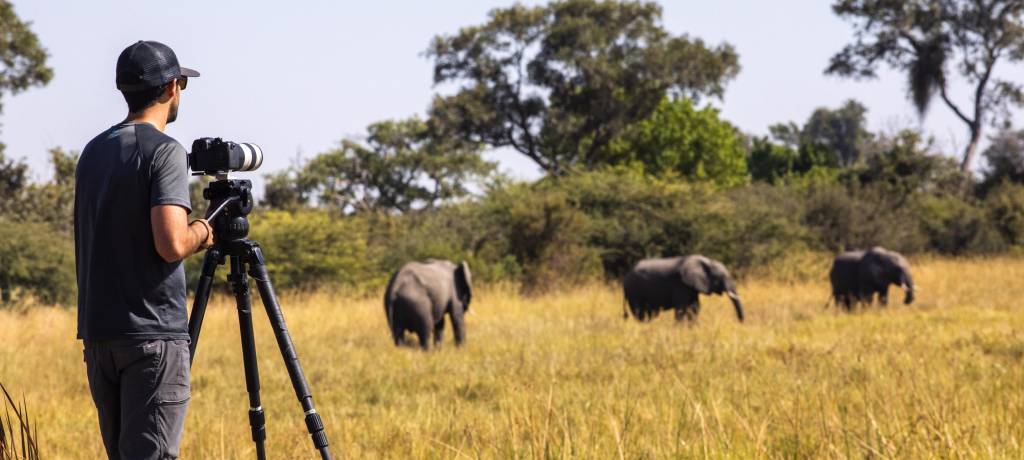

Photographic Safari Holidays
Hone your photography skills and capture all the magic from your game drives on a photographic safari — the ultimate tour for photography enthusiasts. These safari holiday packages are led by professional photographers, so whether you choose to explore the grassy plains of South Africa or the swampy inland of Botswana, you're guaranteed to come away with stunning images that will last a lifetime.
Best African photo safari tours
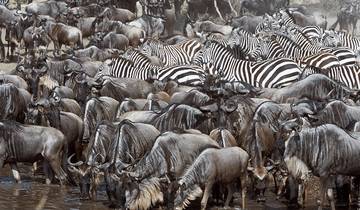
Kenya Photographic Safari with Paul Goldstein - Premium Adventure
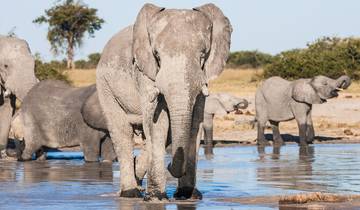
Moremi reserve and Chobe NP Photographic Safari
Popular destinations for photography safaris.
1,380 Tours
Tanzania's Serengeti National Park is the scene of Africa’s Great Migration, so it’s no surprise this country is known as one of the best photographic safari destinations in the world.
As far as safari tours go, it’s hard to beat Kenya’s dizzying array of wildlife and incredible natural beauty.
Botswana’s unique landscapes and dense concentrations of wildlife make it a haven for nature lovers.
South Africa
South Africa’s Kruger National Park is a popular choice for those heading to Africa for the first time.
Best national parks for photographic safaris
Boasting unbeatable vistas, an astounding amount of wildlife and spectacular big-game viewing, Serengeti National Park and the Masai Mara are two of Africa’s top national parks for a photo safari.
Lions, cheetahs, elephants, zebras, and hippos wander around their natural habitat, and wildebeest make their way across the land for their annual migration. The famous Masai Mara National Reserve is a prime destination for compelling wildlife photography.
Tanzania's Serengeti National Park is one of the best safari destinations in the world. Embark on a safari and take a shot of the awe-inspiring Great Migration.
Kruger National Park is another fantastic destination for photo safari tours: this famous game reserve is home to the big five, as well as the cheetah and the endangered wild dog.
Golden rules of wildlife photographers
Don't disturb the wildlife.
One of the most important unspoken wildlife photography rules is: observe, don’t disturb. Wildlife should always come first , so ensure you’re taking every effort to minimise disturbances that may occur while you’re taking photos. This also means abiding by the Leave No Trace principles!
Keep your distance
The animals you’re photographing should never feel threatened by your presence . Tempting as it may be to get a great photo, it isn’t fair to the animal. Getting too close also puts you at greater risk of danger, so be sure to observe and take photos from a reasonable distance.
Don't feed the animals
Feeding animals is unethical for several reasons: it causes a disruption to their natural diet, it alters the way animals interact with humans, and it puts your personal safety at risk. Additionally, baiting wildlife is illegal in some countries and it can seriously harm the animal.
The key to getting that unforgettable image is patience . Wild animals are completely unpredictable, and you may have to spend hours (or even days!) with an individual or group of animals to get that perfect shot.
Remember that when you’re out photographing in the wild, you are in other species’ terrain — so, be slow, quiet, and try your best not to disturb wild animals as they go about their business. Become part of the landscape rather than an intrusion upon it .
Forget about selfies
Attempting to take a selfie with a wild animal is the ultimate no-no when it comes to wildlife photography ! Not only can it cause the animals distress, but getting too close may provoke a violent protective response.
Wildlife photography tips for beginners
Wildlife photography is challenging, and producing great shots takes preparation, patience, and persistence. Here are a few beginner tips to help you get high-quality images every time. Know your gear This tip may sound obvious, but it’s absolutely crucial when it comes to wildlife photography. Some of the best sightings and action-packed moments often last for only a few fleeting seconds, and if you’re not familiar with the settings of your camera or the abilities of your chosen lens, you’ll end up missing out on fantastic photo opportunities. Always be prepared When you’re photographing wildlife, you have to be ready at a moment’s notice. Always keep your lens attached to your camera, ensure your settings are already locked in, and keep your camera on your lap within easy reach at all times. The faster you can react, the more likely you’ll be able to capture an incredible moment. Use the light to your advantage One of the best ways to enhance your photos is to use spectacular light — the kind of light you get during dawn and dusk (also known as the golden hours in photography). This is when the sun is at its warmest hue and casts rich colours across the landscape — which provides the ideal lighting conditions and background for your subject. Know your subject Understanding your subject’s behaviour is key to being a good photographer, especially when your subjects are completely unpredictable. Before you head on safari, read up about the animals you’ll be photographing. What kind of habitat do they live in? Are they known for any specific or interesting behaviour? Knowing your subject will give you a greater chance of capturing that perfect moment rather than just simply snapping a photo.
Useful links
- 10 Wildlife photography tips for beginners
- Safari packing list
- Ethical animal tourism: how to tell if your wildlife tour is legit
- The best safari destinations in the world
Photographic Safari: What you need to know
Why should i go on a photographic safari.
Photographic safaris are specially designed for best photo opportunities (for wildlife and light) and give enough time for photographers to take their best shot. Tours usually include a professional photographer as a guide.
Are photographic safaris worth it?
When questioning whether a photographic safari is worth the expense, you need only ask yourself if you are passionate about photography and looking for the best scenery? If so, then definitely yes.
Will there be a professional photographer on the tour?
You can expect a professional photographer to be in attendance on most photographic safaris.
How fit do I have to be to take part in a photographic safari?
Depending on the tour, the only physical requirements will be an ability or willingness to tolerate harsh weather conditions and to be able to carry your gear when required.
What safari photography equipment do I need?
You should only bring gear and camera equipment that you are familiar with and know how to use, inside and out. Read more on the best cameras for wildlife photography and other safari essentials .
What's the group size of a photo safari?
Photographic safaris are limited to small group sizes, allowing you to better connect with your professional photographer guides and to ensure you make the most of every wildlife encounter. One-on-one attention is guaranteed on every trip, but if you’d prefer a more personalised and tailor-made experience, you may want to consider a private safari tour instead.
How experienced do I have to be in photography?
You don’t have to be a seasoned pro to join a photographic safari! Tour options are available for every skill level, from absolute beginners to experts and everyone in between. The only requirement is that you know the ins and outs of your camera and have an understanding of photography basics (including settings like aperture, shutter speed, and ISO).
When am I going to have the opportunity to take pictures?
Whether it’s an early morning game drive, an afternoon bush walk, or a sunset hot air balloon ride, every safari excursion offers endless opportunities for unique and spectacular wildlife photos.
All safari destinations
- Tanzania (1380)
- Kenya (804)
- Uganda (245)
- India (168)
- South Africa (150)
- Botswana (115)
- Sri Lanka (75)
- Namibia (66)
- Rwanda (46)
- Zimbabwe (23)
- Australia (22)
- Zambia (19)
- Malaysia (7)
- Thailand (7)
- Costa Rica (7)
- Madagascar (6)
- Indonesia (6)

Go Wild: The Best Spots to Meet Wildlife
Majella Grawatsch

Where to Find the Best Wildlife in Southeast Asia
Maggie Soares

The Best Cameras for Safaris
Melanie Cheng

Essential First Time Safari Tips for Safaris in Kenya
TRENDING...
Africa Wanderlust
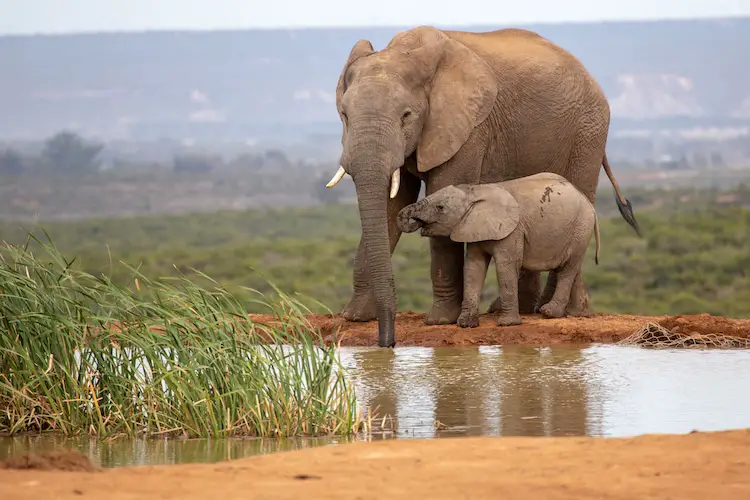
10 Best African Photo Safaris You Must Experience
Even if you’ve been on a safari in the past, an African photo safari is something you want to experience or at the very list add to the top of your bucket list.
But first, what is a photo safari ? The phrase “photo safari” is not a common sentence structure but its meaning can be deduced easily. An African photo safari in general context means going on an adventure with the sole purpose of taking high-quality pictures.
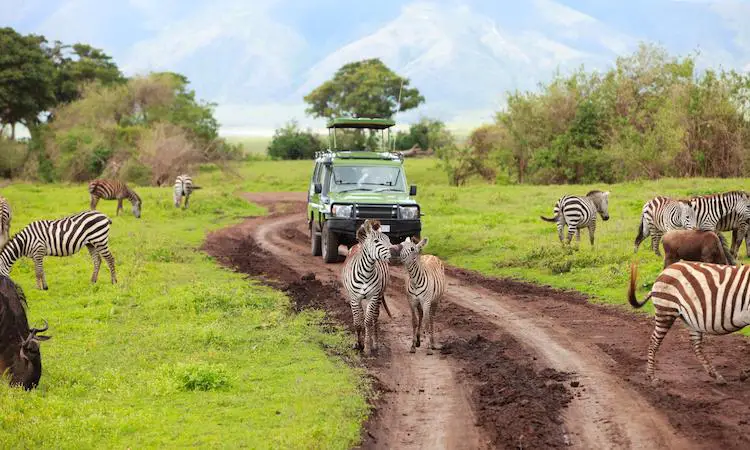
This definition also applies to actual safari destinations in Africa since many people are aiming to take photos during game drives. So, what is the use of a photo safari in Africa? Well, here are just a few reasons to consider a photo safari:
- For the adventure and to preserve the experience for years to come (similar to Northern Lights portraits in the arctic).
- Working as a wildlife photographer for websites and magazines.
- An African photo safari can be done for promotional purposes to advertise safari photography tours. Tour operators use these images in their brochures and websites.
- Educational purposes for schools and conservation projects.
The Best Africa Photo Safari Tours
An analysis was carried out by the website Safari Bookings in June 2019. 157 parks in 11 countries were ranked according to African photo safari reviews from both tourists and experts who work as authors for prestigious travel companies like Lonely Planet and Trip Advisor. The best places for African safari are clustered in Southern Africa. Here is a list of top 10 parks best-suited for game viewing and photographic opportunities.
- Serengeti National Park, Tanzania , 4.92/5: Abundance of Big 5, especially the big cats, opportunities to view wildebeest migration aka migration safari. ( More Details )
- Mana Pools National Park, Zimbabwe , 4.85/5: A variety of safari tours such as walking, canoe, and classic safaris, an abundance of big 5 except rhino, a large population of wild dogs. ( More Details )
- Mala Mala Game Reserve, South Africa , 4.80/5: Private reserve with luxurious facilities, a high population of wildlife, especially all of the big 5. This park is a must because of the outstanding wildlife viewing opportunity if you visit Johannesburg or Cape Town. ( More Details )
- Okavango Delta, Botswana, 4.76/5: A variety of tours such as canoe, boat, and classic safaris, waterway paradise, and presence of big 5. ( More Details )
- Lower Zambezi National Park, Zambia , 4.68/5: Canoe and classic safari tours, and 4 of the big 5. ( More Details )
- Moremi Game Reserve, Botswana , 4.68/5: Large population of big 5 including the rare rhino species. ( More Details )
- South Luangwa National Park, Zambia , 4.67/5: Walking and driving safari options, an abundance of the big 5 except rhinos, an abundance of giraffes, and an opportunity to see Victoria Falls. ( More Details )
- Ngorongoro Crater, Tanzania , 4.64/5: Abundance of wildlife including the big 5 inside the unique landscape of a volcanic crater. ( More Details )
- Sabi Sand Game Reserve, South Africa , 4.62/5: With multiple private reserves in close proximity, you will have an exclusive safari experience with an excellent Big 5 viewing. You can request for a private guided tour for a tailor-made adventure to suit your needs. ( More Details )
- Masai Mara National Reserve, Kenya , 4.59/5: The presence of all members of the big 5, an abundance of big cats and the opportunity to watch the mass migration of wildebeest makes this East Africa destination a must. ( More Details )
Best Month To Go On An African Safari
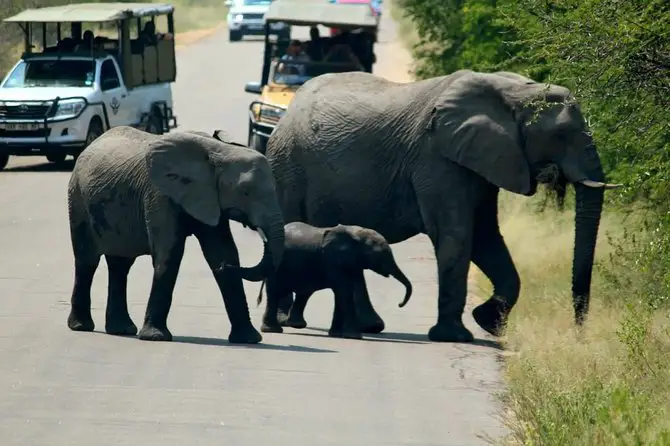
The best time to go on an African Safari depends on the country you are visiting. Different countries are ideal for different times of the year and for different reasons.
January to February: Tanzania
The Great Migration of wildebeests from Serengeti in Tanzania to Masai Mara in Kenya is the most picturesque event during a safari in Tanzania.
During January and February, you can witness not only river crossings of large herds of giraffes, zebras, and antelopes but also predators like lions attempting to hunt the weakest members of the herds. You can also witness a wildebeest or zebra giving birth.
March-April: South Africa, Ethiopia, Namibia
The best time for game viewing in South Africa is the transition period between summer and winter. The weather is still ideal with mild temperatures. Besides, the summer rainfall from the previous months brings out many members of the wildlife. Kruger National Park is highly recommended.
Ethiopia is another ideal destination since it is about to enter its rainy season just after April. The temperatures will be ideal for both humans and animals to go outdoors. The Simien Mountains National Park is highly recommended.
These two months also see the transition between the rainy season and the dry season in Namibia. The rainfall from March increases the greenery and the temperatures remain quite warm during the day.
May to June: Madagascar, Zimbabwe
May and June in Madagascar see the lowest temperatures and are ideal for viewing endangered species like lemurs and chameleons.
Zimbabwe’s weather displays features of both wet and dry seasons, so you can witness the highest variety of animals. The relative dryness makes the safari a less muddy and more pleasant safari experience. So many animals come out to drink water from watering holes and rivers.
July to August: Rwanda, Botswana
Rwanda’s dry season is the best time for gorilla trekking for viewing mountain gorillas, colobus monkeys and chimpanzees. Botswana’s Okavango Delta also experiences dryness, so safari tours will be more comfortable and less messy. Animals gather around waterholes, making the viewing much easier. The absence of mosquitos is a huge plus.
September: Kenya
The Great Migration occurs in the opposite direction from Masai Mara to Serengeti in September
African Safari Cost
The cost of an African photo safari depends on the package you are purchasing. There are options available for both budget travelers and luxury travelers.
Budget safaris start from 100-125 USD per person per day, while the high-end safari packages can cost more than 700 USD per person per night.
Although the difference is not huge, the cheapest budget safari options are found in Zambia with 150 USD per person for group safaris.
There are also additional costs you need to consider.
- Level of accommodation: Many national parks will have a range of accommodation from campsites to luxurious tents or cottages.
- Self-drive: A great option if you enjoy adventure traveling. Self-drive safari is obviously a cheaper option, but also more challenging when it comes to animal encounters.
- Holiday season: The prices will go up significantly during the school holiday season. You need to find out when the holiday starts and make an effort to visit the parks outside the peak season.
- Vaccination and medication: Depending on the season and the country, you will probably need certain vaccinations and precautions against certain diseases like malaria.
- Visa: Although getting a visa is easy, it does cost around 30-50 USD depending on the country.
- Tips: The safari guides will appreciate a tip between 10-15 USD
Visit here for a detailed breakdown of safari costs.
Frequently Asked Questions About African Photo Safari
It is unusual for wildlife and the human race to come into contact during the safari. That being said, the tours are guided by experienced locals who know how to act around wild animals. They make sure of the absolute safety of both parts.
Although safari tours are completely safe, you have a huge responsibility to make sure they stay that way. There are certain rules that you MUST follow. Leaving the safari vehicle, getting too close to the animals, trying to feed them, and drawing them closer to the vehicles are strictly forbidden and can lead to life-threatening outcomes. Such disruptive behaviors put you and those around you in danger.
The budget safari tours start from 100 USD per person and can go up to 1000 USD. But in general, the cost depends on what you expect from a safari. Refer to the cost section for a detailed explanation.
Love it? Share and Pin it!
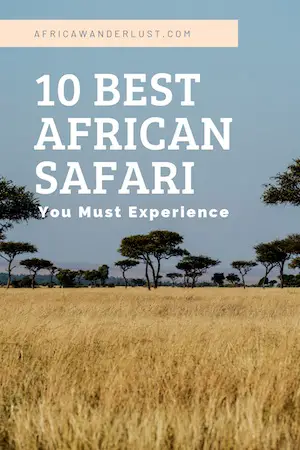
Similar Posts
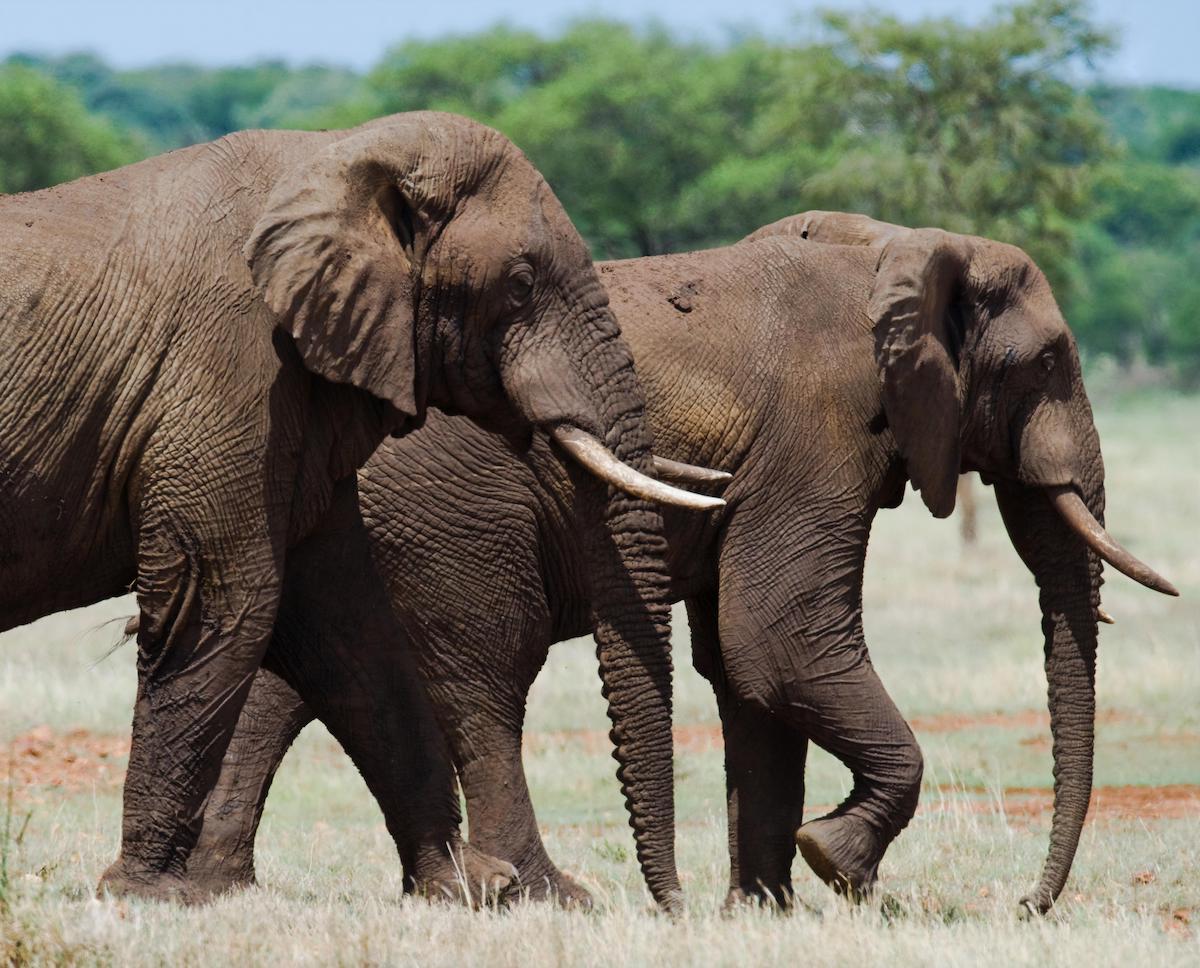
15 Best Countrıes to Vısıt in Afrıca
Luxury african safari tours: enjoying africa like royalty.
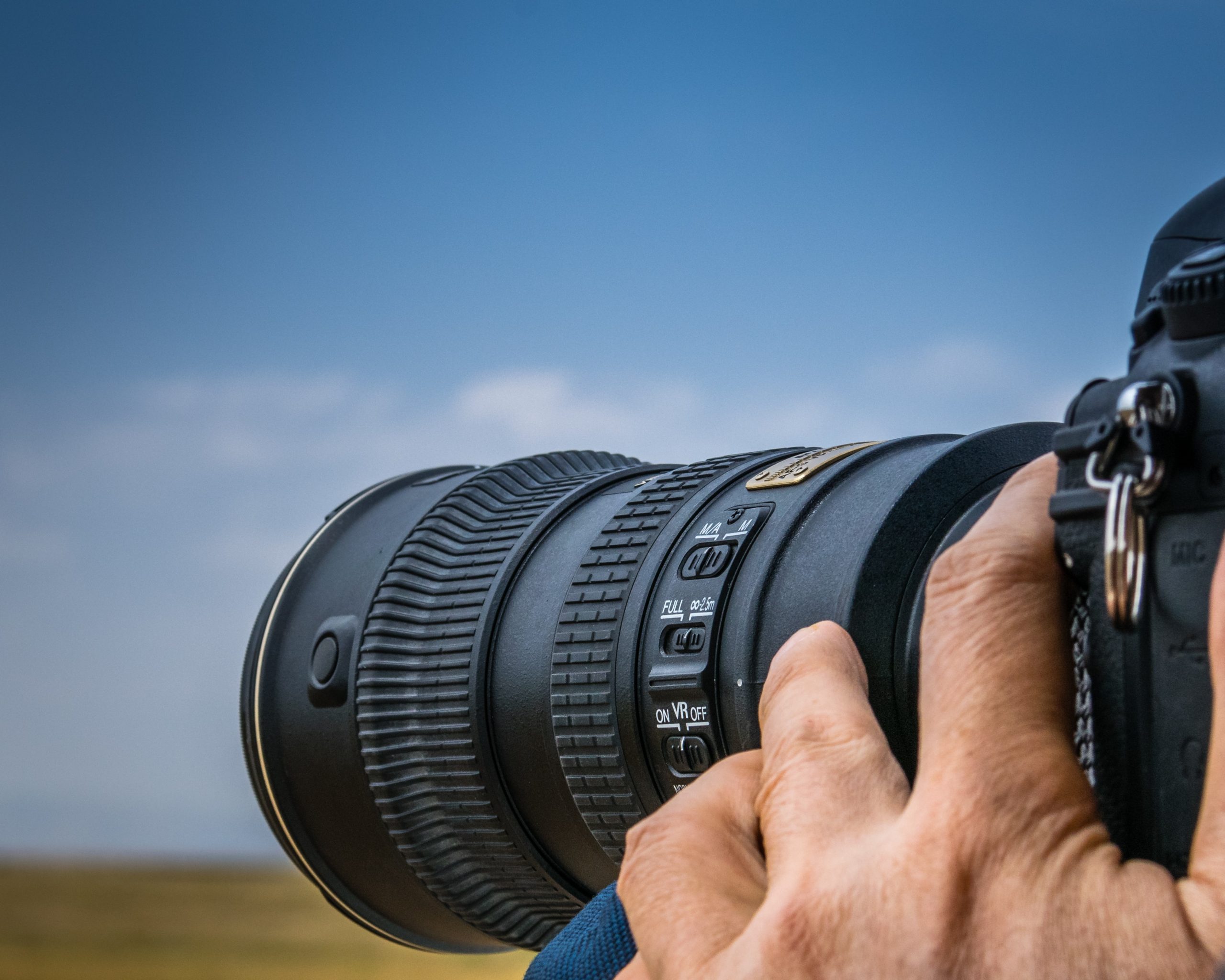
The Best Safari Camera Recommendations

Your Ultimate Zimbabwe Travel Packing List
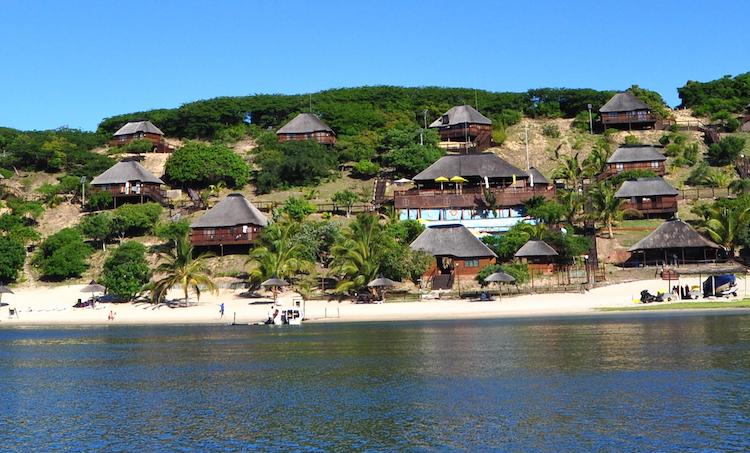
Pemba, Mozambique: Ultimate City Guide & Safety Tips for Pemba Travel
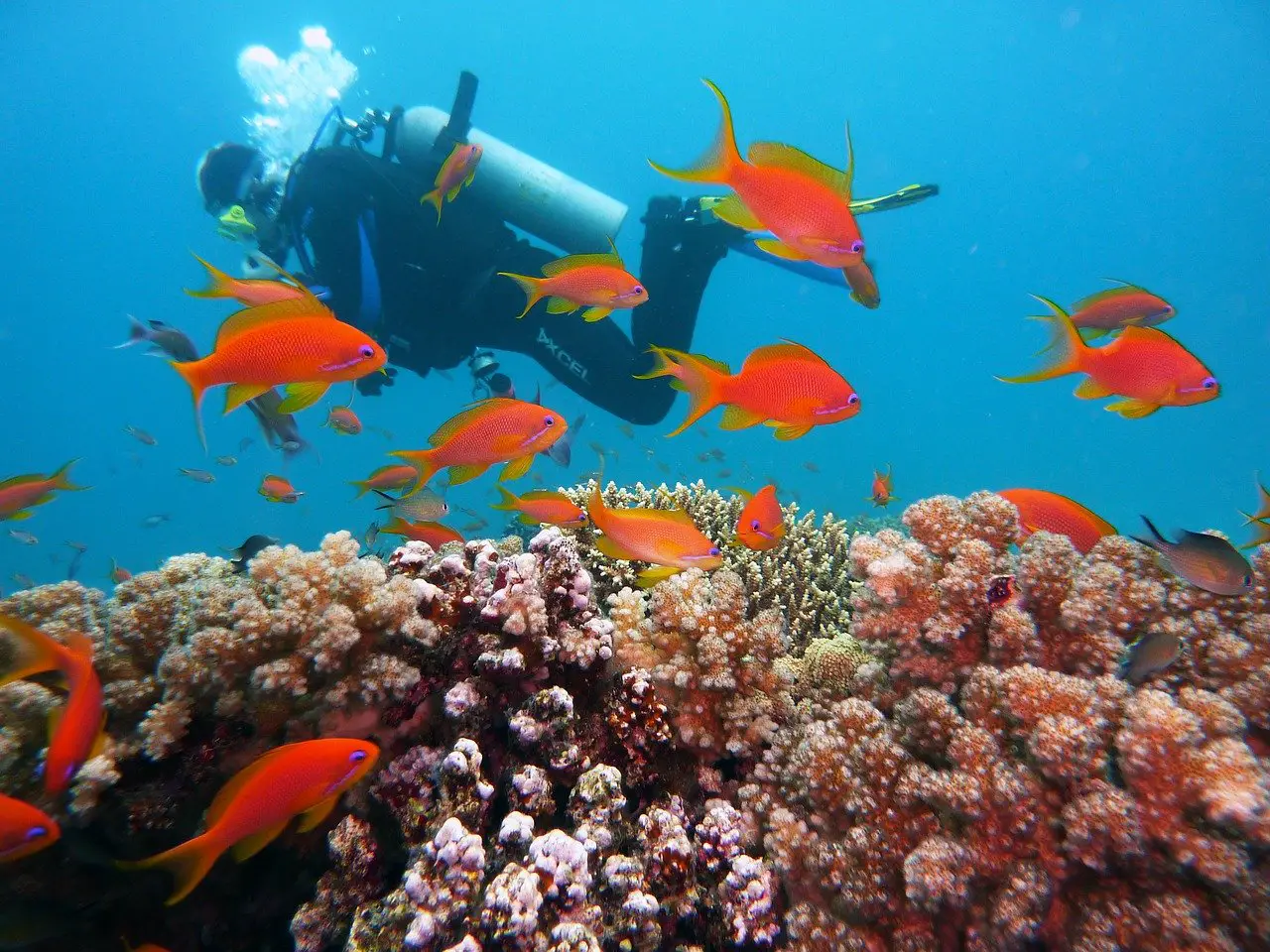
The Islands of Mozambique: Ibo, Anantara Medjumbe & Quirimbas Island
- Experiences
African Photography Safaris
The best places to go on an african photography safaris.
Whether you're a professional or amateur photographer, a photography safari experience in Africa is unlike anywhere else in the world. With Africa's iconic splendour as your subject, there's something new to capture around every corner.
What makes photography safaris in Africa so special is not only the wildly diverse landscapes, wildlife, and sunsets that will leave you swooning, but also the luxury lodges . At many of these safari lodges, you get access to high-end photography equipment. So, you can travel light and get everything you need when you arrive. Many also have photography studios where you can admire and edit your incredible moments captured on safari.
Several safari lodges in South Africa , Botswana , and Zambia offer specialist photography safaris in Africa for all levels of expertise. Take your Big 5 safari and Great Migration adventure to another level by capturing it on camera and take home some of your best African memories. We can't wait to see what you capture!
Why choose Africa for your photography safari tour?
Africa is home to several unique animals that you cannot find anywhere else in the world
The sunsets are a photographer's dream
Untouched, varied landscapes
Several lodges and camps will provide all your photography equipment upon arrival
Guides and rangers are highly skilled in tracking as well as photography
Grab your camera, let’s go!
What can you expect from an African photography safari?
Africa welcomes everyone to a photography safari, from complete newbies who've never heard of the rule of thirds to seasoned safari photographers who can seamlessly change lenses on even the bumpiest game drive. Here are some of our favourite African destinations, lodges and experiences that will turn anyone into a professional photographer!
Boat Photography Safaris in Botswana
Botswana is arguably one of the best photography safari destinations in the world. One of the last remaining wildlife sanctuaries on earth, it’s rich in unspoiled landscapes and home to over 450 bird species and a wide variety of animals, of which some are rare.
You can go on a photography safari in traditional dug-out canoes called mokoros in the Okavango Delta. This allows you to glide silently through the water without disturbing the wildlife and the low angle of the boat is perfect for taking photos.
In the Chobe Region , photography safaris are offered on motorised boats and will give you prime views of the animals flocking to the water. The “elephant capital” of the world, you will see herds of elephants as far as the eye can see. Other animals include the rest of the Big 5, zebras, giraffes, the endangered African wild dog, civets, hyenas, baboons and puku antelopes, and the Chobe River teems with crocodiles and hippos.
Many of these boats have built-in camera arms to stabilise equipment and take the weight off your arms.
Photography Safari Tours on Specialised Vehicles
Londolozi Private Game Reserve's lodges in the Sabi Sand Private Game Reserve , South Africa , offer photography safaris on their custom-built photography vehicles.
As part of their conservation efforts, Londolozi has introduced their very own Zero Emissions Safari Vehicle. With a lower carbon footprint than the conventional 4x4, this new electric vehicle moves silently through the bush. It's further modified and fitted with adjustable seats that can swivel 180 degrees, allowing maximum flexibility and unusual camera angles.
Guests can hire all photography equipment from Londolozi, and it will be ready for you upon arrival. Their photographic experience includes the private safari vehicle, a professional photographic tutor, a dedicated ranger and tracker team and full access to the Londolozi Photography Studio for post-processing and editing of your photos.
Bush Walk Photography Safaris
One of the best ways to see Africa in all her glory is on foot. Located in Zambia , the South Luangwa National Park is dubbed the “birthplace of the walking safari”.
One of Africa's finest wildlife retreats, it's a paradise for safari enthusiasts, and the park's remote location with a reasonably low visitor count allows for an exclusive safari experience.
The highly skilled and experienced guides will lead you through the park and show you how they track game, point out all the smaller things you wouldn't ordinarily notice, and give you insight into Africa and her creatures.
With over 400 bird species and 60 different animal species, you will never run out of scenes to capture in this magnificent game-rich park. A photographic walking safari gives you an entirely different perspective and an understanding of how precious these animals and landscapes really are and why they should be protected.
Photography Safari from a Hide
Several lodges in Africa offer unobstructed views of the watering holes where animals gather. Even though you can often see them without even leaving the lodge, the best way to get the perfect photos of them from a hide, giving guests the perfect view of all the action.
Botswana is one of the best bird-watching destinations in Africa, and many lodges are tailored specifically for bird watchers. Examples include Duma Tau Camp , Xigera Camp and Jao Camp .
Book your African photography safari with Rhino Africa
Sounds good? Well, how about taking it up another notch by booking with the best? As the World's Best Safari Company, we'll ensure every little detail is taken care of, so that you can just focus on enjoying every second!
It's time to start planning your African photographic safari. Contact one of our Travel Experts , and they'll create a tailor-made tour to suit your specific needs and wants. See you in Africa!
How it works
- 1 Describe your dream trip
- 2 A Travel Expert will help curate your experience
- 3 Confirm & start packing
Let's plan your trip
Enquire now and a Travel Expert will get back to you within 24 hours.
Ready to start your journey?
ZA Number: +27 21 469 2600
Why book with us.

African Safari Tours
- Arusha, Tanzania
- [email protected]
- Call/ Whatsapp +255 745504340
Discover 10 Day Best African Photo Safari.
Adventures gives you the best possible chance to experience and capture the best wildlife and nature moments. 10 Best African Photographic Safaris 2024/2025 Tour Companies & Reviews, holidays by Top Rated Operators. Where to go for an African photo safari? Visit top Safari destination in Tanzania including Serengeti National Park, Tarangire National Park, Lake Natron, Lake Eyasi and Ngorongoro Crater.
10 Days Big Five Photographic Safari in Africa.
Explore the wonders of Africa through our curated list of the “10 Best African Photographic Safaris 2024/2025.” Embark on a journey that takes you to iconic destinations such as Tanzania’s Serengeti National Park. The enchanting Ngorongoro Crater, and the remote wilderness of Katavi National Park. Capture the magic of Africa’s diverse wildlife. From majestic elephants in Tarangire to the playful and attractive colored flamingo birds in lake Natron.
Discover hidden gems like Lake Manyara for birding enthusiasts and explore Lake Eyasi gardens for a burst of culture and color. Each safari promises unique encounters and unforgettable photographic opportunities. Get ready to frame Africa’s natural beauty and wildlife in your lens as you embark on these extraordinary safaris in 2024/2025.
Our safari experience is all-inclusive: from the moment you set foot on African soil, all your needs will be met, including meals, lodging, local transportation.
All-Inclusive Africa Photo Safari Full Tour Itinerary
10 Days African Photo Safari : Lake Manyara, Lake Natron, Serengeti National Park, Ngorongoro crater and Lake Eyasi.
Embark on a photographic journey like no other with our exclusive “10 Best African Photographic Safaris 2024/2025,” featuring the breathtaking Lake Manyara, the otherworldly Lake Natron, the iconic Serengeti, the captivating Ngorongoro Crater, and the enchanting Lake Eyasi.
Begin your adventure at Lake Manyara, a birder’s paradise where flamingos and pelicans thrive amidst stunning scenery. Then, venture to the surreal Lake Natron, known for its crimson waters and vibrant birdlife, offering a unique photographic experience.
The legendary Serengeti awaits, where the Great Migration unfolds before your lens, capturing millions of wildebeests and zebras in motion. Ngorongoro Crater, a UNESCO World Heritage Site, provides dramatic backdrops for your wildlife photography.
Finally, explore the cultural wonders of Lake Eyasi, home to the indigenous Hadzabe tribe, offering a glimpse into their traditional way of life.
Join us in 2023/2024 for an unparalleled opportunity to document Africa’s natural wonders and vibrant cultures, creating photographic memories that will last a lifetime.
Details African Photographic Safari Itinerary Day by Day.
When it comes to embarking on an unforgettable journey through the heart of Africa, Tanzania stands out as a top destination for nature enthusiasts and photographers alike. The diverse landscapes, abundant wildlife, and rich cultural heritage make it a haven for those seeking to capture breathtaking moments on camera. In this article, we, as experts in the field of travel and photography, present to you the “10 Best Tanzania Photographic Safaris for 2023/2024.” Prepare to be inspired by the wonders that await you in this remarkable East African nation.
Day 1: Transport from Kilimanjaro airport to the hotel in Arusha
Upon arrive in Tanzania you will meet with our company represent transfer you with private car to hotel in Arusha. You will meet with our safari manager to give you the safari brief, after then you will continuous with your rest at the hotel waiting for your safari adventure in next day Venice Hotel , Mount Meru Hote l or Arusha Melia.
Day 2: Arusha lake Manyara
After breakfast, our driver will pick you up and depart to the Lake Manyara national park for your Northern Tanzania Safari game drive. This national park is one of Tanzania’s most dramatically located wildlife areas, consisting of a massive but shallow soda lake (covering two-thirds of the park), located at the foot of the Great Rift Valley’s western escarpment. The park’s varied habitat attracts a wide variety of animals, including one of Africa’s largest concentrations of elephants, Lake Manyara unique tree-climbing lions, as well as large flocks of flamingos attracted by the algae in the lake. Late afternoon transfer to dinner and overnight at at Lodge or Campsite depending on the tour accommodation request.
Day 3: Lake Manyara – Lake Natron
After breakfast, our driver will pick you up at your accommodation and depart to the Lake Natron. Visit Waterfall & Swimming. View Mount Oldonyolengai. Dinner and overnight at campsite or lodge
Day 4: Natron – Serengeti National Park
Early in the morning exploring the Lake Natron. After explore the Lake you will depart to Serengeti National Park descend into the heart of wild Africa – the Serengeti National Park – with its endless plains, rolling into the distance as far as the eye can see.
Head to the Central Park area, known as the Seronera area, one of the richest wildlife habitats in the Park, featuring the Seronera River, which provides a valuable water source to this area and therefore attracts wildlife well representative of most of the Serengeti’s species. Arrive in time for lunch and enjoy a 2hrs late evening game drive in the Serengeti National Park. dinner and overnight at campsite or lodge.
Day 5 – 6 : National Park Serengeti game drive
After breakfast, you will have a Tanzania Medium Safari Lodge game viewing at Serengeti National Park. The Serengeti, Tanzania’s largest National Park, covers nearly 6,000 square miles of grassland plains, Savannah, kopjes, hills, woodlands, and River line forest systems serve as critical water sources and are often excellent sites for wildlife viewing. Beyond the heralded migration of wildebeest and zebra, the Serengeti is best known for its big predators, including cheetah and Leopard, as well as large pride of Lions and clans of Hyenas and many animals, dinner and overnight at campsite or lodge.
Day 7: Serengeti National Park to Ngorongoro Crater
After a relaxing morning and an early lunch, you will have early in the morning game drive in Serengeti later back to the campsite for branch and hot lunch, Our driver and cook will load everything on the top of our safari jeep after then continuous with game drive while looking to be our of Serengeti to proceed to Ngorongoro. Today, you will be doing a game viewing en-route during your way from Serengeti National Park to Ngorongoro Crater. You will be in Ngorongoro Crater late in the evening where the night will be spent on the crater rim. dinner and overnight at campsite or lodge.
Day 8: Ngorongoro to Lake Hadzabe – Eyasi
After breakfast, we depart for the descend down the crater for a 5-6hrs game drive. In the crater, you can able to view the BIG 5. After 5-6hrs game drive in the crater See buffalo, giraffe, zebra and many more species, all set against the stunning backdrop of the Great Rift Wall. Dinner and overnight at / lodge or Campsite
Day 9: Lake Eyasi Hadzabe to Arusha
The tour will start around 5 am and head to Lake Eyasi to go hunting with the Hadzabe Bushmen, one of the last hunter-gatherer societies in the world. After your morning hunt, you will visit the Datoga tribe, skilled craftsmen, and blacksmiths.
After your amazing cultural experience, you will be transferred back Arusha overnight at Venice Hotel.
Mount Meru hotel or Arusha Melia hotel
Day 10: Day Transport in Arusha – Kilimanjaro airport departure
We will provides you with early packaged breakfast before departing from Venice Hotel.– Our pick up drop will be at Venice Hotel on time at 4:50am picking up you drive you direct to Kilimanjaro airport. This will be the end of tour and safari with us.
Inclusive & Exclusive
Included for 10 Day Best African Photo Safari
- Private Jeep 4×4 equipped with refrigerator, portable charging stations and pop-up roof
- Overnight stays in hotel/lodge Areas
- All park entrances fees
- Professional English speaking safari guide
- Meals according to the itinerary
- Mineral water on all days
- All mentioned activities
- All government taxes Price.
- Government increase entry fees
- Ngorongoro crater services
- Unlimited game drive
- Airport pick up and drop off
Excluded for 10 Day Best African Photo Safari
- International flights (from / to home)
- Personal items (souvenirs, travel insurance, visa fees, etc.)
- Tips (tipping guideline 20 USD per person per day).
- Internal flights
What to bring 10 Day Best African Photo Safari
- A warm sweater as the nights can be chilly at high altitudes.
- Comfortable shoes
Request Safari Quote
Photographic safari in tanzania.
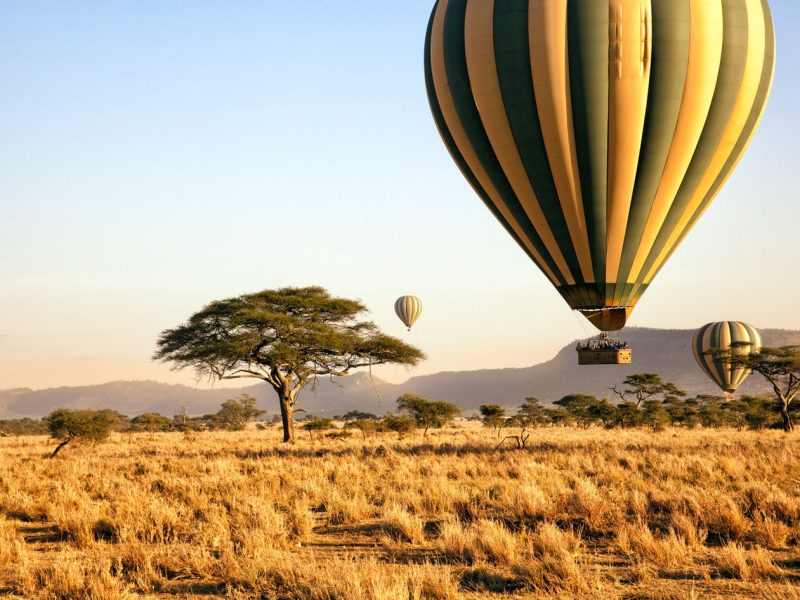
8-Day Tanzania Wilderness Safari
Spectacular Guided 8 Day Tanzania Wilderness Safari Discover wildlife and nature on a once in a …
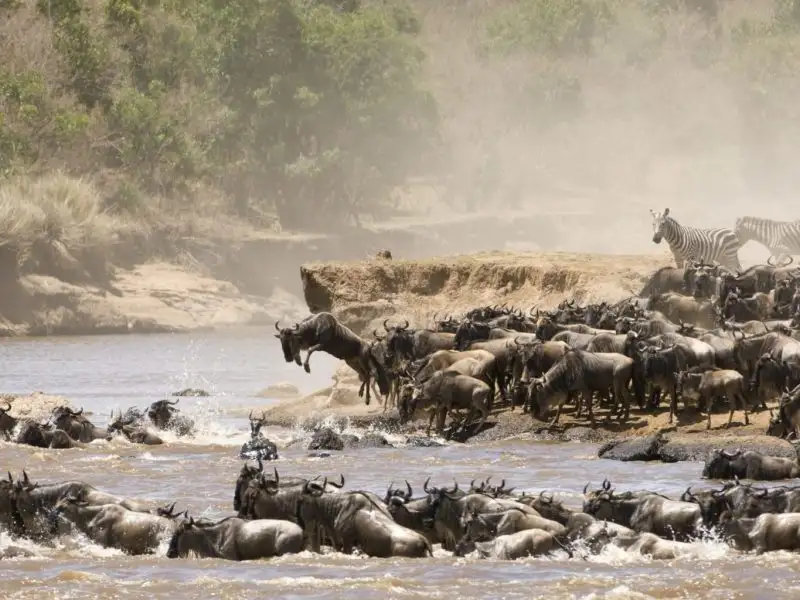
African Safari Experience
AndBeyond 9-Day African Safari Experience Spectacular Guided 9-Day Tanzania African Safari Experience Discover wildlife and nature …
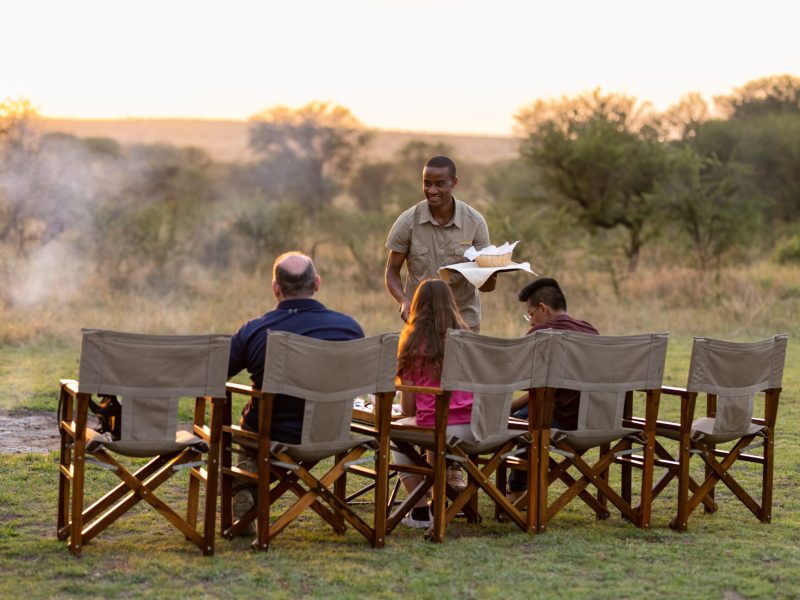
Soul of Tanzania Safari
12-Day Soul of Tanzania Safari Immerse yourself in the heart of Tanzania’s soul on a 12-Day …
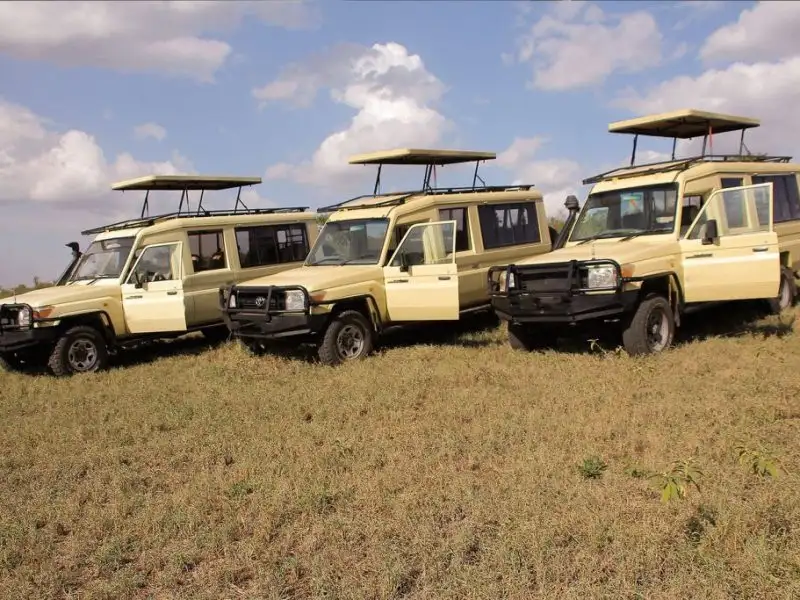
8-Day Authentic Tanzania Safari Tours
Expedition 8 Day Authentic Tanzania Safari Tours Experience the essence of East African wilderness on our …
Africa Photo Tours
The continent of Africa and the word “safari” are inextricably linked in the minds of most people—and for good reason! The wildlife found throughout Africa—particularly in East Africa—is legendary, varied, and largely accessible. In other words, an Africa Photo Tour is a nature photographer’s dream come true! We’ve been a pioneer in developing trips to see Africa’s diverse wildlife, not to mention its unique landscapes and cultures. If you’ve never been on a Photo Safari before, a trip to Africa is always a good place to start!
We’re here to answer your questions about any of the trips that interest you, so don’t hesitate to Contact Us !
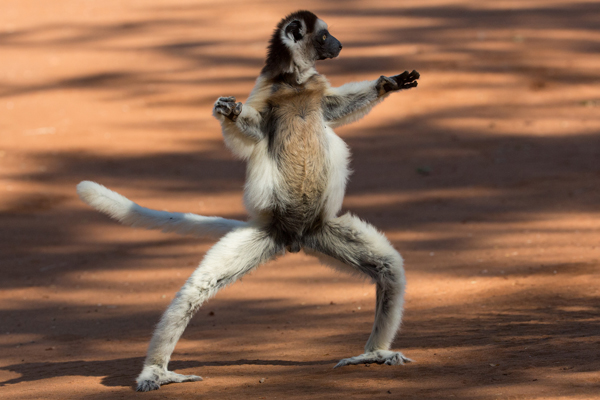
Please Join Our Waitlist!
Wild Madagascar
Completely isolated for nearly 100 million years, Madagascar—the “eighth continent”—has evolved into an amazing collection of photogenic endemic plants and animals. Travel with private chartered flights and spacious ground transportation to the island’s best photo spots.
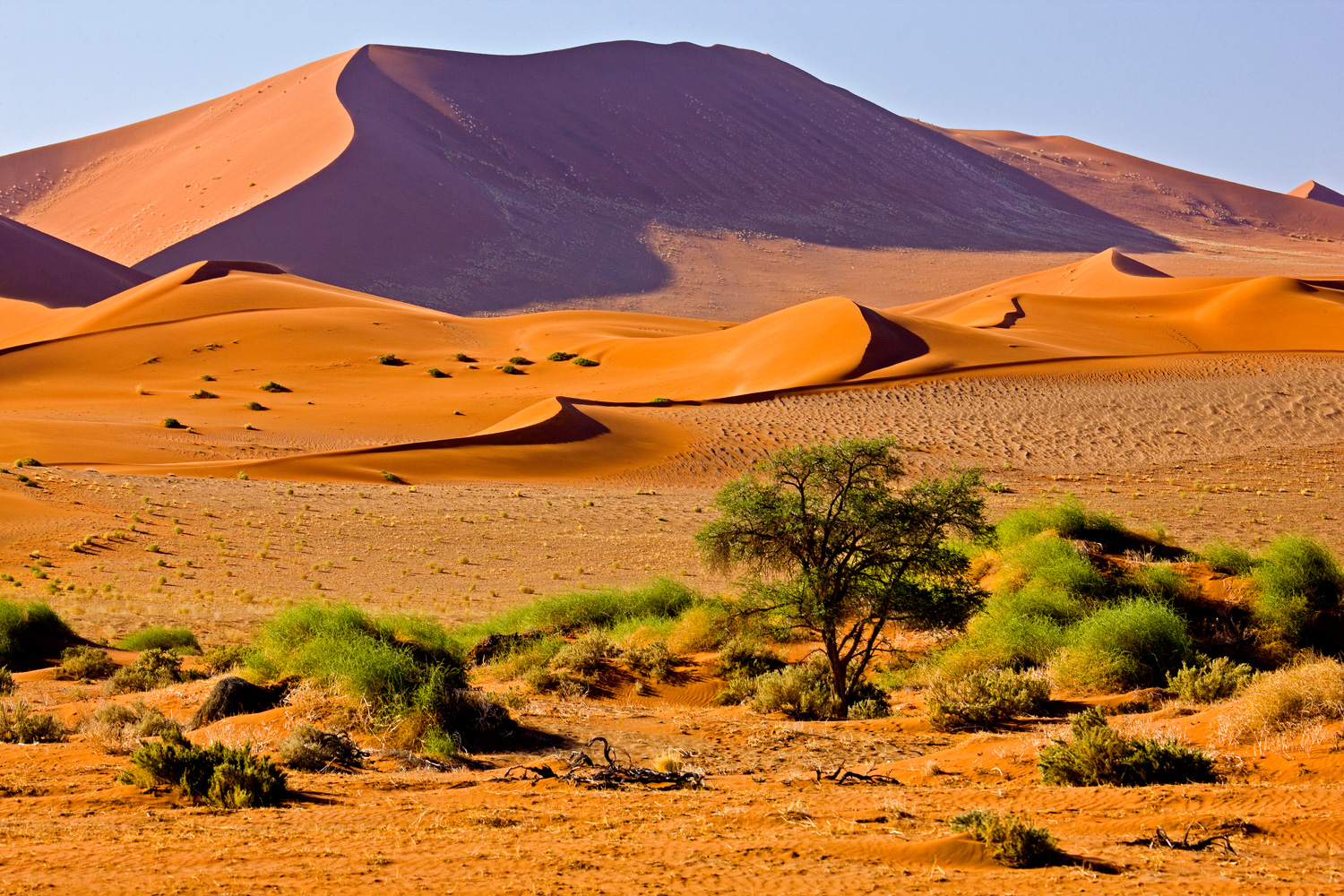
Namibia Revealed
From its beautiful quiver tree forest, surreal sand-conquered ghost town of Kolmanskop, and the colossal red sand Sossusvlei Dunes to the superlative Etosha National Park, Namibia provides exciting photo subjects at every turn. Photograph vast numbers of wildlife at Etosha's numerous water holes.
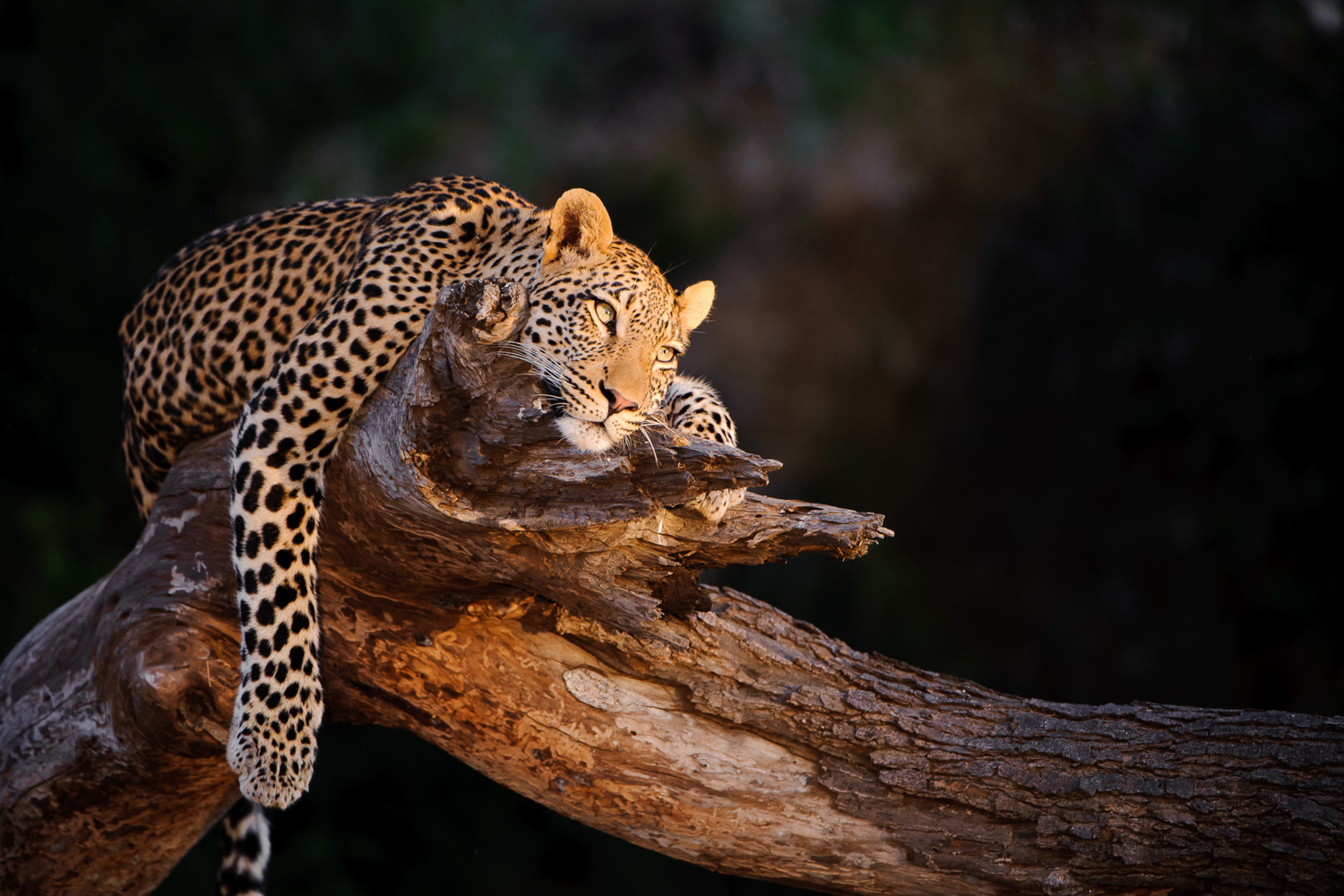
Botswana Wildlife
Two incredibly productive wildlife areas—private Mashatu Game Reserve and Chobe National Park. Photograph elephants and other animals up close and below eye level from waterhole photo blinds. Shoot from boats specially designed for photographers for a unique below eye-level perspective.

Get Your Free Ebook A Guide To Organizing And Finding Your Images By John Shaw
Van Os Photo Safaris uses the information you provide to contact you about our upcoming tours, special offers, and trip reports. You may unsubscribe from these communications at any time. For more information, check out our Privacy Policy.
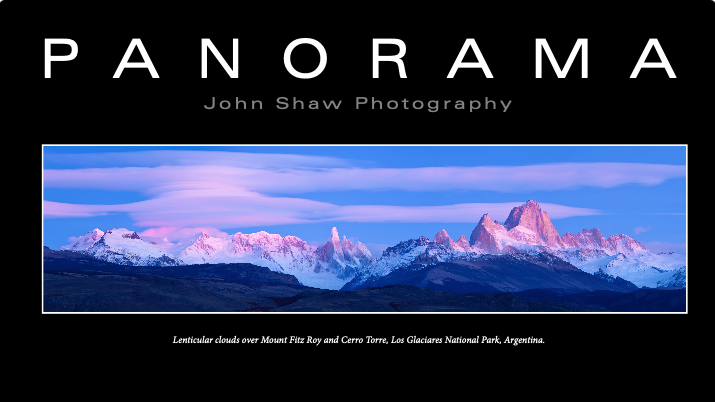
Get Your Free Ebook Panorama by John Shaw

Home / Penda Blogs / Best Photo Safaris in Africa for 2024
Best Photo Safaris in Africa for 2024
How can you find the best photo safari in Africa? Well, you could spend days and weeks trawling the internet searching for the perfect destinations, the most experienced guides, and the greatest wildlife photo ops. Alternatively, you could reach out to us , and we’ll line you up with your best African photo safari tour ever!
Africa, the mesmerizing continent renowned for its wildlife, as well as its stunning landscapes and vibrant cultures, is a dream destination for wildlife photography enthusiasts. Embarking on a photo safari in Africa offers an unparalleled opportunity to capture breathtaking moments, hone your skills with a camera, and see some of the most iconic and rarest animals in the world.
In this blog, we will delve into the best photo African safari tours, highlighting their unique features and providing essential tips on how to plan your own African photo safari to make it an unforgettable photographic adventure.
But first, what exactly is a photo safari?
What is a Photo Safari?
Well, the clue’s in the name, but a photo safari is a safari fully designed around photography that takes photographers’ needs into consideration.
As with a normal safari, you’ll have encounters with wildlife during game drives or walking safaris, but on a photo safari, there’s a lot of emphasis on getting the right angles and finding the right light. You’ll generally spend much more time on sightings; however long is needed to get the right shots. Consequently, schedules are therefore more flexible, and completely tailored around photographic opportunities. Most significantly, you’ll be accompanied by a professional photographer, offering you guidance and tuition to help you improve your photography skills.
Who are photo safaris for?
Photo safaris are for anyone who is interested in experiencing game viewings from a photographer’s perspective. The best photo safari trips to Africa are personalizable. Our trips all have small group sizes so that tutoring can be tailored to your level of skill and experience. This means that with us, photographers of all levels can enjoy the best African photo safari ever.
What makes the best African Photo Safari?
The things you need to look out for are the guidance you’ll receive, the destinations you’ll visit, and the wildlife photo opportunities.
The best African photo safari tours should…
- Have no more than six people in each game drive vehicle, so everyone gets a ‘window’ seat with an unobstructed view.
- Where possible, be in private concessions and reserves where game vehicles have the freedom to go offroad so as to find high-quality, up-close photo ops.
- Offer exclusive photo opportunities in less crowded locations so there aren’t other game vehicles cluttering your frame.
- Be facilitated by a professional wildlife photographer who is passionate and knowledgeable.
- Provide guidance by expert local guides and trackers.
- Follow ethical game viewing practices.
- Have a good tutor-to-guest ratio, so that there’s plenty of opportunity for personal photographic tutoring.
Read more about the characteristics of the best African photo tours .
What Are the Best Photo Safaris in Africa?
Here are our best African photo safaris to consider for 2023, and beyond!
BOTSWANA PHOTO SAFARI
Travel to the otherworldly landscapes of Botswana’s Tuli Block, stay on the game reserve, and experience unique photo opportunities by 4×4 and by foot!
This is one of the best African photo safari tours if you’re looking for big cats and elephants. Discover Tuli block, one of Botswana’s best kept secrets. This hidden gem in the east of Botswana is thriving with wildlife including not just larger species like leopards, cheetahs, and elephants but jackals, honey badgers, an array of antelope, and an impressive cast of bird species too This tour also offers the expert guidance of Alan Hewitt, a seasoned photographer specializing in conservation photography and official UK ambassador for FUJIFILM.

Photo Credit: Alan Hewitt
SOUTH AFRICA PHOTO SAFARI
If you have a special love for leopards or an interest in the highly endangered white rhino this might be the best African photo safari for you. This safari takes you to the Timbavati, an area known for its incredible Big Five game viewing, where you’ll go on 3-hour game drives twice daily scheduled around the hours with the best light. This trip is also led by Alan Hewitt (see above) and tutoring will cover everything from composition to technical camera use and post-production. You’ll also be guided by expert trackers with a wealth of knowledge on local wildlife who will find you the best viewing opportunities imaginable.

TANZANIA PHOTO SAFARI
Explore the hidden gems of the underexplored South of Tanzania as you stay in remote reserves and national parks with an abundance of wildlife.
This trip takes you off the beaten path to enjoy all the jaw-dropping photo ops of northern Tanzania, only without the crowds. There, you’ll be privileged with truly some of the best game viewing experiences in the world. You’ll visit Ruaha National Park which has the largest population of lions of any park in Africa (containing one tenth of the world’s lion population), Nyere National Park, which has the highest density of wild dogs in Africa (with packs numbering in the fifties), and Mikumi National Park which has the world’s largest population of eland. All the while, you’ll be under the expert guidance of, once again, Alan Hewitt.

WILDLIFE PHOTOGRAPHY & CONSERVATION STORYTELLING WORKSHOP IN ZIMBABWE
Experience all the joys of the best photo safari trips to Africa whilst learning to tell important conservation stories with your camera. During this program you’ll stay at a small, family-run game reserve that runs a number of pioneering wildlife conservation projects.
The Imire Wildlife Conservancy provides a wonderfully rich range of wildlife including buffalo, wildebeest, giraffes, over 150 species of bird, and healthy populations of cheetahs. You’ll be led through this emporium of wildlife by award-winning photographer and conservationist, Sam Turley. Not only will Sam teach you to take the best wildlife photography, he’ll show you how your pictures can make an impact for conservation too.

Photo Credit: Sam Turley
ULTIMATE UGANDA WILDLIFE PHOTOGRAPHY TOUR
This is a slightly different type of African photo safari; it combines lions, elephants, and other wildlife on the African savannah with encounters with Mountain Gorillas and chimpanzees.
This tour giving you the chance to trek through Bwindi Impenetrable National Park, a rainforest inhabited by a variety of monkey species and the awe-inspiring mountain gorillas. In fact, Bwindi is one of three parks where this highly endangered species still lives. You’ll also see a huge number of primates as you visit Kibale forest National Park and enjoy a more traditional safari experience in Queen Elizabeth, known for its tree-climbing lions, and Lake Mburo National Park.

Photo Credit: Will Archer
MAASAI MARA WILDLIFE PHOTOGRAPHY WORKSHOP IN KENYA
Capture breathtaking photos of a world-famous wildlife photography destination with this truly unique wilderness experience.
Located in southwestern Kenya, the Maasai Mara National Reserve is a wildlife-rich paradise that attracts photographers from around the world. It is among the best destinations photo safari trips to Africa. The Maasai Mara is best known for the Great Migration, during which millions of wildebeest and other herbivores cross the Mara River. However you’ll also find a wealth of wildlife including the big five, an impressive cast of predators, and a stunning array of birds.
Browse more of the best African photo safari tours

Other Considerations for Photo Safaris in Africa
What the best photo tours available are isn’t the only knowledge you’ll need to have an incredible experience. Here are some other solid pieces of advice as you consider the possibility of embarking on an African photo safari.
How to plan your own African photo safari
Every African photo safari is different, so our advice here is to research ahead of time.
Before starting your research, make a wishlist of the wildlife you absolutely want to see. Then, simply find the tour that best aligns with that wishlist. Be sure to check out African photo safari reviews of the trips you’re eyeing. This’ll help find out what wildlife you’ll see and what photo ops will be available. Thoroughly researching yout trip ill also give you an idea of what to look forward to once you’ve picked your trip. Of course you will have guides who can provide all this information for you. Nonetheless, this knowledge will help you pick which photo safari is right for you, decide what to pack, improve your chances of capturing stunning shots, and help you to have the best African photo safari tour ever.
What to pack for a photo safari in Africa
Again, different trips will require different equipment, but there are some general rules you can follow for what to pack for a photo safari in Africa.
For all our photo tours, we recommend a high-quality DSLR or mirrorless camera and a range of lenses. A telephoto lens is helpful for capturing distant subjects, while a wide-angle lens can capture the grandeur of African landscapes. Other than that, carry spare batteries, memory cards, and essential accessories like lens cleaners and a sturdy tripod for stable shots.
That said, there aren’t any strict requirements for photography equipment. Our guides will help you capture stunning pics no matter what camera you’re working with. For more detailed information on equipment though check out what Alan Hewitt recommends packing .
What’s the best time of year for an African photo safari?
Different regions in Africa offer distinct wildlife sightings and experiences depending on the time of year. Weather can have a big effect on both game viewing opportunities and photography conditions, so picking the right season for your trip should be part of your research. Check the best time to visit for specific wildlife sightings too,
Bear in mind though, Africa’s climate varies greatly. Regardless of the time of year, pack clothing suitable for both hot and cold weather. Layering is key, as early morning game drives can be chilly, while afternoons can be scorching.
How much does an African photo safari cost?
There is no one-size-fits-all answer to the question ‘how much does an African Photo Safari cost?’ Depending on the country, the area, the photography guide, and the level of accommodation, the cost of photography safaris will vary.
But good to bear in mind that a good photo safari won’t be cheap. The places that offer the highest quality game viewing experiences, and therefore the kind of photographic experience you should expect on a photo safari, usually come at a premium price. And generally, that’s worth it. The exclusivity of the experience should and the quality of the images you’ll take are linked.
Having said that, you obviously want to make sure you’re getting good value for money. Do your research; compare various trips and make sure you’re not paying more than you need to.
How to ensure your photo tour respects wildlife and the environment
Remember that you are a guest in their habitat. One of the most important parts of planning your trip has to be finding a tour operator who practices responsible game viewing. All the best African photo safari tours will make efforts to minimize your impact on the environment. For instance, not only do we ensure that all of our tours follow ark guidelines and regulations, when you book with us, we plant a tree on your behalf to offset the carbon emissions of your flight over.
Also, this should go without saying, but leave only footprints and take only photos. Littering can ruin the experience for those that come after you and upsetting wildlife and plant life for a keepsake can cause big disruptions to ecosystems. Even the best guides can’t keep an eye on you all the time, so you have to take responsibility to ensure you leave no trace during your safari.
3 Tips to Have the Best Photo Safari in Africa
- Wildlife photography requires patience . Animals may not always be readily visible, and you may have to go on a few game drives before you start capturing the shots you really want to take. Patience will reward you with the unique and captivating moments you’re hoping for.
- Bring the right equipment – As a rule, once you book your photo safari, your operator will inform you of what equipment you’ll need for the trip (that’s what we do), but, in any case, you’ll need to have the basics covered. Bring a camera your comfortable with a range of lenses and don’t forget extra batteries, memory cards, and a few cleaning supplies will come in handy too. Filters and tripods can make a big difference too. For more detailed information, check out this article by photographer Alan Hewitt on how to pack for a photo safari .
- Practice your photography skills beforehand – You will make much more of the tuition and guidance provided on a photo safari if you polish up on your photography skills beforehand. At bare minimum, thoroughly familiarize yourself with your camera’s settings. If you’d like to go a step further, practice capturing fast-moving objects and experiment with your camera both night and day to see how it performs in different lighting conditions.
Find the Best African Photo Safari for You!
Embarking on a photo safari in Africa is an extraordinary opportunity to witness and document the wonders of the continent’s wildlife and landscapes. Trips with the best photo safari in Africa will send you home with a wealth of new photography skills too.
With these tips, you can ensure that you find yourself the best African photo safari tour ever! You’ll enhance your photography skills, go on an adventure, and create stunning images that truly encapsulate the beauty and diversity of Africa’s natural treasures.
Pack your camera gear, embrace the wild, let your lens capture the untamed spirit of Africa, and find the best African photo safari for you today!
Browse our best African photo safari tours
This blog was written by Tom Rusbridge
Other recent posts

8 Best African Photo Safaris In 2025
Wildlife photography highlights in yellowstone.

Embark on a Namibia Photo Tour in 2025

Subscribe - Footer
LET’S KEEP THE CONVERSATION GOING…
Sign up to receive our newsletter and discover our stories, special offers or events.
GET IN TOUCH
QUICK LINKS

HUMANITARIAN

AFRICAN BIG FIVE

Penda Trust
VOLUNTEERING
DESTINATIONS
PHOTOGRAPHY FOCUS
South Africa
United States
United Kingdom
Humanitarian
African Big Five
Why travel with Penda
Join our Team
Frequently Asked Questions
+44 7599030976

Photo Safari in Africa
A guide to african photography safaris.
Embarking on a photo safari in Africa is surely every professional and amateur photographer’s dream. The type of trip on offer can differ depending on your photography level and budget, but there is a great range of options out there for those who know exactly what they’re after.
As with every type of African safari, the time of year you wish to travel has a huge impact on the experience you can expect, the animals you can photograph and the price you will have to pay. Do your homework on where you want to go and when and sum up whether or not this presents the photo opportunities that you seek. Be realistic – if you want to head to Kenya’s Masai Mara in the hopes of capturing the Great Wildebeest Migration , you can expect to pay a premium for the privilege. But, if your aim is to get the best possible shots, you need to be in these areas when an abundance of wildlife is most likely to be seen, and so prices will naturally be high.
You might be wondering why it is necessary to pay a specific fee for a photography trip when you could just bring your camera along on a standard budget safari. The answer is, it is not necessary and if your budget is tight, you could opt for a self-drive safari and snap away from your car. But there is a reason serious photographers are willing to pay a premium. Booking your trip via a specialist safari travel operator means the company you go with will have specialist local knowledge and specific safari trucks that offer photographers the best chances of coming away with some amazing images.
Look for companies that cater to small groups of photographers, ideally with a vehicle that fits up to 10 people that can be used between 3 – 4 of you. This will ensure you each have the required space and range to compose and snap your shots. Check whether the vehicles have roof hatches that allow you to stand up and photograph through, as well as side windows so you can snap away whilst seated.
If you’re worried about not getting close enough to your subjects, ask before you book if your park or reserve offer off-road driving. Some parks also have deals with local big cat sanctuaries where photographers can spend a few days getting close-up shots as part of their package.
The sky is the limit when it comes to how your trip pans out – if you’re going all out, you could fly between several destinations over a 2 or 3-week itinerary, live it up in luxury lodges and pay upwards of $12,000. With a standard specialist trip, you might bag a bargain deal for around $3,000 or, if times are really tough, just stick to a self-drive with cheap camping accommodation.
Before you head out on your first drive, it is worth brushing up on your safari van etiquette. Every photographer has the same aim: to get the best possible shots. You won’t want someone nudging you or getting in the way of your shot at the last minute, and equally, you won’t want to be the one to ruin someone else’s’ money shot. Have a word with your guide or your group about seat rotation, elbow room and general van behaviour to ensure you all get off on the right foot.
Top Photo Safari Destinations
Photographers can embark on a photography safari anywhere in Africa – where there’s game, there is a prime photo opportunity. However, some regions offer an abundance of wildlife at certain times of the year and these are highlighted below.
Southern Africa
South Africa’s Kruger National Park has been the location for some of the best game photos ever to come out of Africa and has a great variety of game for photographers to aim their lenses at. If you’re specifically interested in elephants, it is worth heading to Addo Elephant National Park in the Eastern Cape to capture some up close.
In Namibia , the Caprivi Strip and Etosha Pan offer great game viewing, while the Okavango Delta is Botswana’s main pick.
East Africa
The Masai Mara in Kenya comes to life with the Great Migration between August and October.
Tanzania features less on the popular photo safari trail but is still worth visiting, particularly for those with an interest in the chimpanzees that reside in the Mahale Mountains National Park. If you head up north to the Serengeti and Ngorongoro Crater you could also witness the Great Migration begin with the calving season around February / March.
Photo Safari Tips
- Consider the equipment you want to take with you before you go and leave behind anything that isn’t a necessity. How much you can take will depend on the nature of your trip, but if you’re moving around a lot, or taking internal flights, you will be restricted to what you can bring.
- Pack plenty of memory cards and spare batteries to ensure you don’t miss out due to avoidable equipment failure!
- Check what electricity access you will have before you go to ensure you can charge your cameras at night.
- You probably won’t be able to pack a tripod, but invest in an alternative like a bean bag that is easy to carry and can be perched on a window or other surface to ensure a steady shot.
- Keep your kit to hand, fired up and ready to shoot as soon as game comes into view.
- Beware of the dreaded African dust, which not only irritates eyes but can irritate precious and expensive equipment as well! Keep your lens caps on and bags closed at all times when not in use.
- Check out our tips on taking the perfect safari photo and you’re all set!
Photo Safari Resources
- WILD4 offer some amazing trips under the guidance of a professional photographer at a variety of African locations.
- Photo Snap Shot is filled with essential photo safari tips and tricks for those in the photography safari planning stages.
- Greg Du Toit offer advice on planning, tips on specific locations and action packed itineraries.
Safari inspiration
- Canoe Safaris
- Desert Safaris
- Family Safaris
- Fly In Safaris
- Gorilla Safaris
- Honeymoon Safaris
- Horseback Safaris
- Hot Air Balloon Safaris
- Jungle Safaris
- Luxury Safaris
- Night Safaris
- Photo Safaris
- Self Drive Safaris
- Walking Safaris
Safari guides by country
- Botswana safaris
- Kenya safaris
- Namibia safaris
Rwanda safaris
- South Africa safaris
- Tanzania safaris
- Uganda safaris
Zimbabwe safaris
African safari companies
Botswana safari companies
Kenya safari companies
Namibia safari companies
Rwanda safari companies
South Africa safari companies
Tanzania safari companies
Uganda safari companies
Top countries for safaris
Safari basics.
- Safari animals
- How to find the right safari company
- When to go on safari
- What to take on safari
- Safari clothing – what to wear
- Safari rules & etiquette
- Wildlife spotting tips
Most read articles
- All about the ‘big five’ animals
- Collective nouns for animals
- Safari movies to watch before you go
- The world’s fastest land animals
- Apex predators
- 10 Fascinating African tribes
- The biggest animals in the world
- 17 Epic hybrid animals
- The world’s ugliest animals
- Why are flamingos pink?
Africa’s best game reserves
- Chobe National Park, Botswana
- Etosha National Park, Namibia
- Kruger National Park, South Africa
- Masai Mara National Reserve, Kenya
- Moremi Game Reserve, Botswana
- Okavango Delta, Botswana
- Serengeti National Park, Tanzania
Session expired
Please log in again. The login page will open in a new tab. After logging in you can close it and return to this page.
Loading carousel
Svalbard & Jan Mayen
Svalbard expedition.
From Polar Bears and Walruses to Arctic Foxes and innumerable flocks of birds, this photo expedition promises not only unbelievable photo opportunities but memories that will last you a lifetime.
South Africa
Predators of sabi sabi & malamala.
For this particular safari, we’ve chosen two properties steeped in history, and well known for being the epitome of the photographic safari experience, in their consistent delivery of high quality predator viewing; Sabi Sabi and MalaMala.
The Great Migration Safari
The Great Migration season sees over 2 million animals gather on the open plains of the Masai Mara setting the scene for one of nature’s most incredible spectacles and undoubtedly one of the best wildlife experiences on offer.
Sabi Sabi and Malamala Photography Seminar
Enjoy a uniquely crafted wildlife photographic experience at two of South Africa’s premier game viewing destinations. Designed to help you become a better wildlife photographer, this tour is ideally suited for nature lovers and aspiring photographers.
Exclusive Amboseli and Mara Kicheche Safari
With only 3 guests, and private conservancies throughout your stay, this tour offers true exclusivity in two of East Africa's most iconic wildlife reserves.
Treasures of The Lower Zambezi
Enjoy a great variety of activities including game drives, walking through the breathtaking forests, to canoeing down the mighty Zambezi River. All this with incredible game viewing and predator sightings.
On Promotion
6 spaces available
Primates of Uganda
From $12,850.00 $13,350.00 pp
8 Nights / 9 Days
Africa , East Africa ,
19 May 2026 - 27 May 2026
2 spaces available
Exclusive Amboseli & Mara Kicheche Safari
From $17,500.00 $17,995.00 pp
12 Nights / 13 Days
16 Feb 2026 - 28 Feb 2026
4 spaces available
Treasures of the Lower Zambezi
From $12,715.00 $13,385.00 pp
10 Nights / 11 Days
Africa , Southern Africa ,
01 Jul 2026 - 10 Jul 2026
5 spaces available
Mana Pools and Kanga Camp
From $11,325.00 $11,635.00 pp
7 Nights / 8 Days
20 Jul 2026 - 27 Jul 2026
The Great Migration with Hides & Helicopters in Kenya’s South Rift Valley
From $17,995.00 $18,500.00 pp
13 Sep 2026 - 23 Sep 2026
Southern Serengeti Safari
From $18,425.00 $18,995.00 pp
11 Nights / 12 Days
02 Mar 2026 - 13 Mar 2026
7 spaces available
South Luangwa Safari
From $11,850.00 $12,350.00 pp
12 Jul 2026 - 19 Jul 2026
Svalbard Arctic Expedition
From $12,820.00 $13,285.00 pp
Bucket List Destinations , The Polar Regions & Iceland ,
19 Sep 2025 - 30 Sep 2025
Popular tours
Mala mala photo safari.
From R355,345.00 pp
22 Jul 2026 - 29 Jul 2026
52 spaces available
The Great Migration Safari in Kenya
From $7,650.00 pp
6 Nights / 7 Days
25 Aug 2024 - 31 Aug 2024
31 spaces available
The Masai Mara Experience Safari
From $5,650.00 pp
06 Oct 2024 - 12 Oct 2024
Fully Booked
Amboseli and Masai Mara Safari
From $0.00 pp
Jaguars of the Pantanal
From $10,295.00 pp
South America ,
03 Sep 2024 - 11 Sep 2024
Best of Uganda
Best of the serengeti.
From $14,365.00 pp
04 Feb 2025 - 15 Feb 2025
Tour Categories

Scheduled Tours
We run intimate, small group tours across the world throughout the year. See where we are off to next!

Custom Tours
Allow our team of experienced travel planners to craft an itinerary tailored to your specific budget and dates.

Private Guided Tours
Allow one of our guides to create the ultimate and most exclusive safari experience for you and your group.
Wild Eye offers photographic safaris, private guided expeditions and custom tours around the world. Established in 2012 Wild Eye set out to refresh the photographic travel and private guiding industries by focusing on providing a professional service that is fun and relaxed while providing guests with amazing travel experiences and world class service.
DISCOVER THE WILD EYE MARA CAMP

The Wild Eye Mara Camp

The Great Migration

The Mara Experience
Latest tours, orcas and northern lights.
From $9,500.00 pp
13 Nov 2024 - 20 Nov 2024
Predators of the Okavango Delta
From $25,745.00 pp
07 Nov 2025 - 18 Nov 2025
Exclusive Timbavati Safari
1 spaces available
Exclusive Kalahari Safari
From R66,795.00 pp
30 Aug 2024 - 05 Sep 2024
Arctic Voyage
19 Nights / 20 Days
The Polar Regions & Iceland ,
15 Aug 2024 - 03 Sep 2024
Rhinos and Elephants of Kenya
From $11,250.00 pp
28 Oct 2024 - 04 Nov 2024
Masai Mara Kicheche Conservancies Safari
20 Oct 2023 - 29 Oct 2023
Latest posts
Trip report: primates of uganda.
The Primates of Uganda safari remains one of the most incredible experiences in my opinion and having just returned from hosting this experience, it has once again confirmed that statement for me. One of the reasons this experience stands out so much is not only the fact that you get to spend time with chimpanzees [...]
Friday August 16, 2024
Johan Van Zyl
My First Experience in the Masai Mara
My first experience in the Masai Mara was something indescribably thrilling. I listened to all the stories everyone in the office had about their first time in the Mara camp, from hippos grazing right next to their tents, to enjoying the bucket shower so much that they accidentally ran out of water. It was now [...]
Friday August 2, 2024
Daniel Greyvenstein
Lower Zambezi Trip Report – July 2024
I have just returned from the Lower Zambezi and my word, what a thrilling destination. The time there was a perfect reminder as to why this thrilling and incredibly diverse area is my favourite safari destination in Africa. We had crazy sightings every single day. Amongst them, the two that stand out most must be [...]
Tuesday July 30, 2024
Michael Laubscher
10 Facts on Tigers
The tiger is one of the world's most spectacular creatures. With the highest population in the wild currently being in India, these magnificent cats should be on everyone's bucket list of animals to see. Here are 10 interesting facts about tigers you might not have known. Subspecies: The Bengal tiger (Panthera tigris tigris) is one [...]
Monday July 29, 2024
My Favourite Photographs
In all honesty, I have no idea where to start... To choose just one favourite photograph will be impossible. What I'd like to share with you here is one of (many) my favourite photographs created while on a site visit at Elephant bedroom Camp in Samburu National Park. This is an intimate tented camp with [...]
Thursday July 18, 2024
Lower Zambezi Excitement
I am so very excited to be returning to the Lower Zambezi next week. I'll be hosting two private safaris to this very special this month and into August. I will elaborate more on this in the video below. That said, I will say that I so often think back to the trip I hosted [...]
A magical week in Mala Mala
A few days ago Michael Laubscher and myself returned from a magical week in Mala Mala, hosting a Private Guided safari. Mala Mala as a destination is one that needs little to no introduction to wildlife photographers and enthusiasts. Having been at the centre of many wildlife films and documentaries, Mala Mala's reputation most certainly [...]
Tuesday July 16, 2024

Image Review | Beate Assmuth-Ong | Namibia
Welcome to our latest post centered around constructive image review of images submitted by on of our many guests. In this feature, one of our experienced Wild Eye guides provides insightful critiques of images taken by guests on a recent safari. Unlike our Behind The Frame feature which features a favorite image from one [...]
Monday July 15, 2024
Trip Report: Treasures of The Lower Zambezi
New favourite safari destination unlocked ✅ Having hosted my first trip to Zambia & specifically The Lower Zambezi National Park, I can confidently say that this destination has become a highlight of my guiding career. In June 2024 I had the privilege of hosting our treasure of The Lower Zambezi for 9 days with a [...]
Friday July 12, 2024
Luke Street

Sign up to our newsletter
We promise to only share the most important and relevant updates with you!
Too many details to fill out? Skip ahead
In which year are you planing to travel?
Planning more than a year in advance will allow us to secure the best possible accommodations and locations.
Do you have exact dates in mind?
When is your ideal time to travel.
Identifying year and month of travel will help us narrow down the options available and find the best fit for you - feel free to choose multiple months if you have some degree of flexibility.
Which departure would you like to book for?
Identifying year and month of travel will help us narrow down the options available and find the best fit for you.
Fetching tours...
How many people will be travelling.
This will help us determine the type and configuration of rooms needed.
Number of adults
12 Years and older
Number of children
Which part of the world would you like to visit?
We can assist you in planning your adventure anywhere in the world!
Any special interests or preferences?
Its all in the detail and knowing as much about what your interests and needs are will help us craft your ideal itinerary.
Do you have a Private Guide in mind?
From the moment you start planning your private safari until you say goodbye, your private guide will be there every step of the way so you don’t have to worry about anything other than enjoying your experience.
Personal Information
Rest assured we won’t share these details with anyone else. Wild Eye is compliant with the South African POPI Act requirements
Payment Information

- Eastern Africa
- Northern Africa
- Southern Africa
- Western Africa

9 Best African Photo Safari Destinations
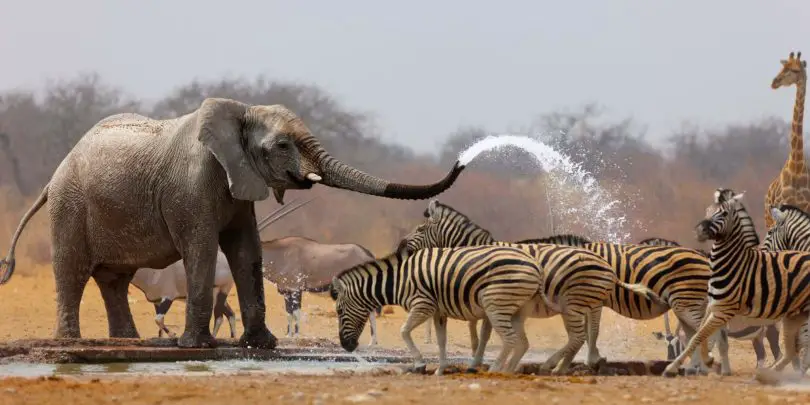
There is no African safari without photography which is why you should pick the best African photo safari. Africa is home to some of the most iconic wildlife in the world, and a photo safari is the perfect way to capture these amazing creatures in their natural habitat. There are many different African countries to choose from for a photo safari. But some of the most popular include Kenya, Zambia, Zimbabwe, Uganda Tanzania, South Africa, and Botswana.
When choosing a photo safari, it is important to consider the time of year you want to go. Also, consider the type of wildlife you are interested in seeing, and your budget.
Table of Contents
Where Is The Best African Photo Safari Destination?
The best African photo safari destinations are game parks, national parks, reserves and conservancies. Moreover, the best time for this safari is during the dry season which differs from country to country. Movement during this season is easier since most parks’ terrain is rugged and worsens during the wet season.
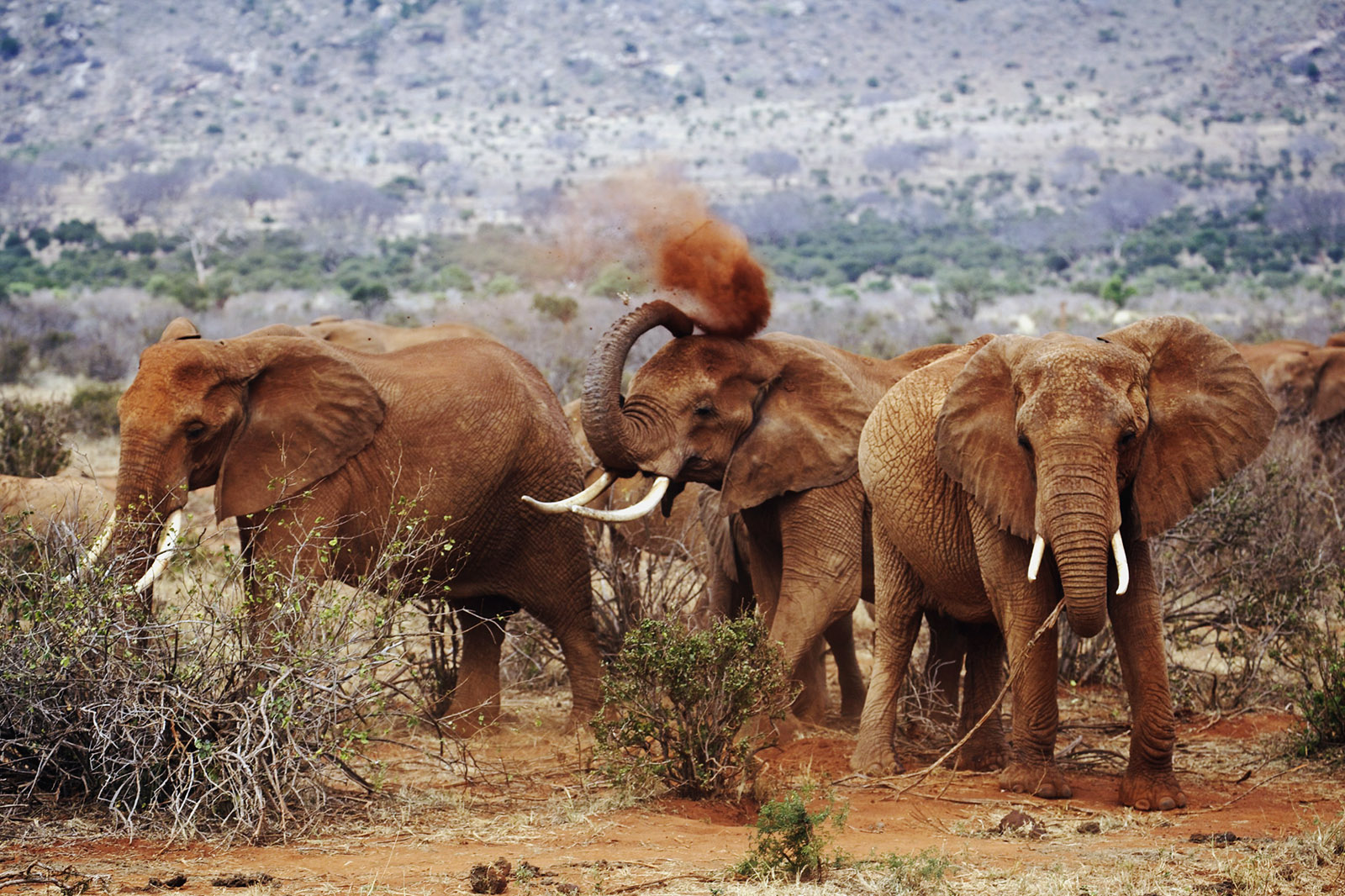
A herd of elephants at the Tsavo National Park, Kenya [Photo by Safari Bookings Blog]
- Serengeti National Park
- Maasai Mara National Reserve
- Etosha National Park
- Amboseli National Park
- Lake Nakuru National Park
- Kruger National Park
- Lake Manyara National Park
- Tsavo National Park
- Okavango Delta
How Much Does An African Photo Safari Cost?
A budget for the best African photo safari sets you back $250 to $1500 depending on the package you choose. Your destination choice also affects your budget. Ideally, East Africa has expensive luxury packages. Therefore; if you are looking at a tight budget, head to Botswana and South Africa. Their rates are incredibly amazing and they have excellent photo safari opportunities.
An important thing to keep in mind is that rates are not constant; you may pay lower in off-peak months and higher in peak months.
Which Country Has The Best Photography Safari?
As stated earlier, African safari is phenomenal and unique due to the existence of wildlife and other captivating sceneries. Some of the best African photo safari tours in Africa include the following.
- South Africa
Which Is The Best Jungle Safari In Africa?
The Bwindi Impenetrable National Park in Uganda rates among the best jungle safaris in Africa. It is home to the largest population of mountain gorillas . You can see mountain gorillas in their natural habitat while here. These gentle giants are truly amazing creatures, and it is an unforgettable experience to see them up close.
In addition to mountain gorillas, Bwindi is also home to chimpanzees, elephants, and over 340 species of birds. Golden monkeys, black-and-white colobus monkeys, and red-tailed monkeys are also common sights here.
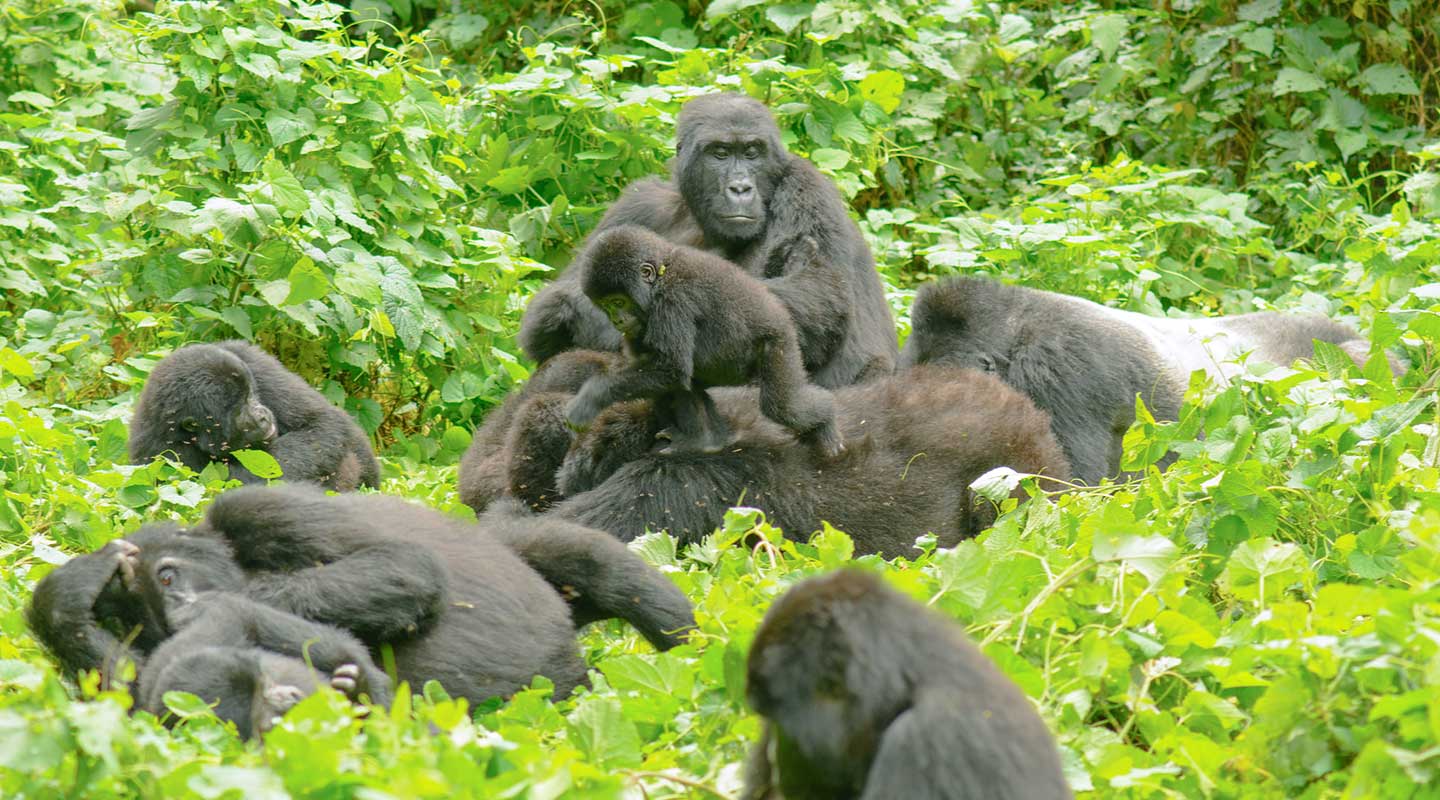
Queen Elizabeth National Park and Bwindi gorillas. Photo/ Safari Update Travels.
Besides Bwindi in Uganda, Volcanoes National Park in Rwanda and Virunga National Park on the Rwanda-DRC border have mountain gorillas. They are excellent choices for a jungle safari too. Thousands of local and international tourists visit Volcanoes and Virunga National Parks each year and enjoy trekking deep in the jungle. Their treks wind up with amazing snapshots of the endangered mountain gorillas in their natural habitat. While these jungle treks are not as popular as the escapades in the Serengeti and Maasai Mara; they make up for the best African photo safari.
Which Country Is Cheapest For Safari Africa?
South Africa is generally considered to be the cheapest country for safari in Africa. There are many reasons for this. First, South Africa has a well-developed tourist infrastructure, meaning there is a wide range of accommodation and safari options available, from budget to luxury.
Secondly, the South African rand is a relatively weak currency, which makes it more affordable for travellers from other countries. Finally, this country has a malaria-free safari destinations, which saves travellers money on malaria medication and prophylaxis.
No matter which country you choose, a photo safari is an unforgettable experience. You see some of the most amazing animals in the world up close and personal including the legendary Big Five. With the help of a skilled guide, you capture stunning photos of these creatures in their natural habitat.
- Is Kenya the best for safari?
Kenya is without an iota of doubt the home of African safari
- Which African country is the safest for safari?
Botswana safety rating for safari tourists is the best in Africa
- Where is best for safari Kenya or Tanzania?
Both Kenya and Tanzania have amazing safari destinations. It’s a matter of preference.
You may also like
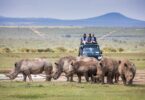
Amazing Reasons Why You Should Visit Solio Game Reserve
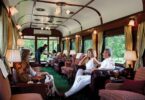
7 Reasons to Choose Luxury Train Travel in Africa
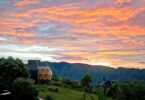
Why You Should Visit Uganda’s Aramaga Rift Valley Lodge
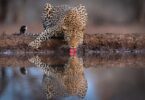
13 Most Incredible Places for a Photo Safari in Africa
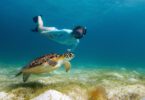
Hidden Secrets of Mbudya Island Snorkelling in Dar es...
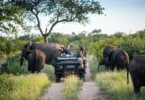
Main Highlights of Safaris in Kruger Park, South Africa
About the author.
Teresa Mwangi
Teresa is a journalist with years of experience in creating web content. She is a wanderlust at heart, loves travelling and telling stories about tour and travel in Africa by every angle.
Leave a Comment
You must be logged in to post a comment.

Pangolin Photo Safaris Review – The Best African Safari for Photographers
- Last Updated: July 6, 2024
On our recent travels around Africa we spent a week at Pangolin Chobe Hotel, which is globally renowned for being the best African safari for photographers. But does it deliver? Dive into our Pangolin Photo Safaris review as we unravel the essence of this luxury experience and discover what makes Pangolin so unique.
For many, an African safari sits at the pinnacle of their bucket list – a dream woven with the golden threads of sunset savannahs, the roaring crescendos of lions at dawn, and the majestic procession of elephants against the backdrop of an acacia skyline.
While the raw beauty of Africa is undeniably breathtaking, capturing these fleeting moments through the camera lens, immortalising them in a photograph, is no easy feat.
The elusive dance of light and shadow, the unpredictability of wildlife, and the vastness of the landscape can pose formidable challenges even to seasoned photographers.
Enter Pangolin Photo Safaris .
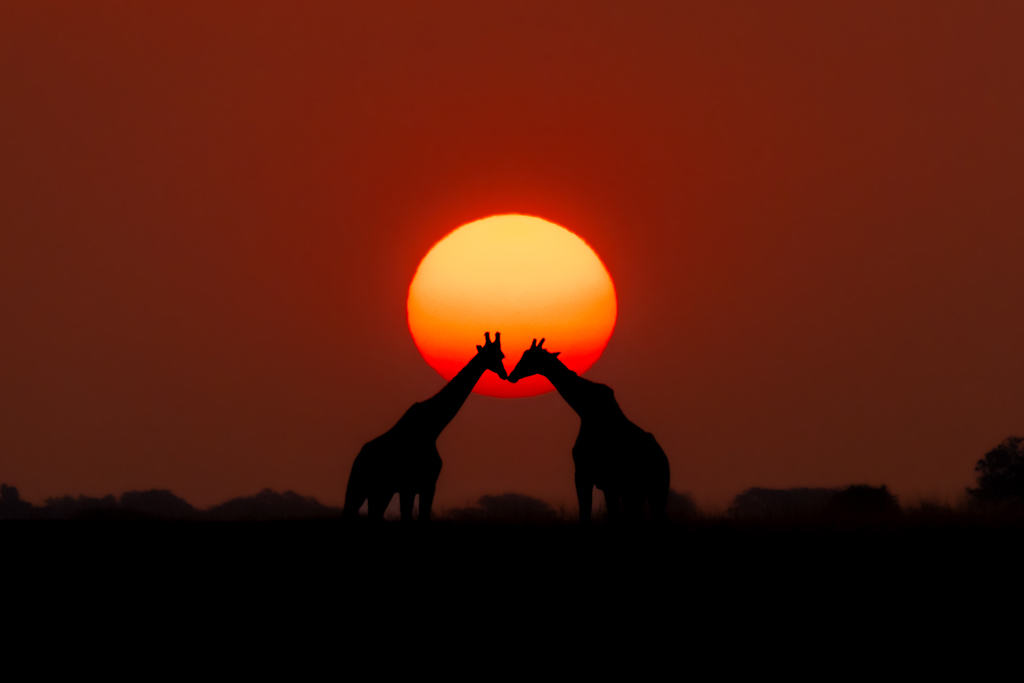
Nestled in the heart of Kasane, Botswana, on the edge of the legendary Chobe National Park, this unique company doesn’t just promise an African safari; it ensures that every heartbeat of the wilderness is artfully captured, transcending the barriers of photography and turning dreams into tangible memories.
We had first heard about Pangolin when we met the co-founder, Guts, on a photography symposium in South Georgia in 2018, and had made it a personal goal to visit the safari lodge whenever we finally realised our dream of stepping foot on the African continent.
In the years that followed we met dozens, if not hundreds, of photography enthusiasts who had visited Pangolin and sung its praises.
“If you like taking photos, you have to spend time there,” we were constantly told. “There’s no other place like it in Africa.”
Check out our full African safari wildlife photography video from Pangolin Photo Safaris!
So this year we made that dream a reality, spending 2 months wandering around Southern Africa with the final adventure being a week enjoying the iconic photo safari experiences of Pangolin in Botswana.
We had set ourselves some lofty goals in terms of the artistic imagery we hoped to create, and knew that if we were really to elevate our wildlife photography to the next level, Pangolin would be the place to do so.
From the moment we arrived, we knew we had made the right choice.
READ MORE: Check out our comprehensive guide to the best travel photography tips !
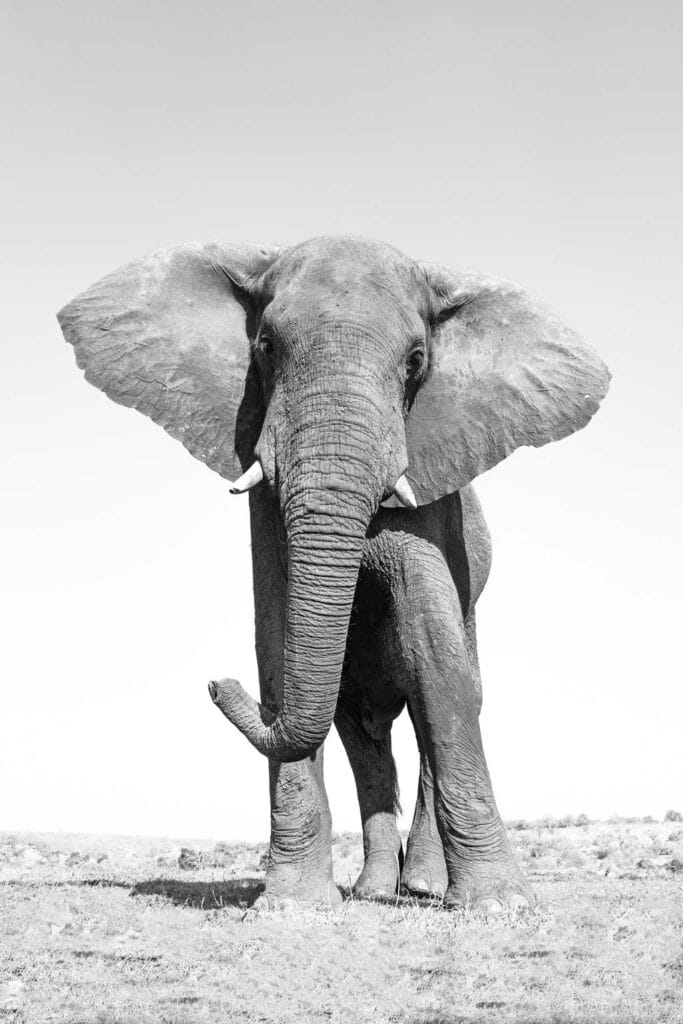
Table of Contents
Where is Pangolin Photo Safaris?
How to get to pangolin photo safaris, wildlife photography gallery, the upstairs lounge and bar, the editing room, dining rooms, the watering hole and hide, pangolin voyager – the chobe houseboat, the pangolin photography boats, land safaris, the photo hosts, do i have to be a professional photographer to join, pangolin.africa – pangolin’s conservation charity, who owns pangolin safaris, what does a ‘photo safari’ mean, how much does a photo safari cost, pangolin photo safaris review, our pangolin photo safaris review – is this africa’s premiere wildlife photography experience.
What sets Pangolin Photo Safaris apart from other lodges in Africa is that at its heart, it’s designed purely for photographers to improve their craft and capture the best images possible.
It’s not the most luxurious lodge in Africa, nor is it on a private concession granting exclusive encounters.
But neither of those things are necessary for Pangolin’s target market – namely people who love photography and want to get better at it.
Pangolin is still luxury though, offering all-inclusive stays in 4-star Kasane accommodation for up to 28 people at a time, and it’s still exclusive with small group experiences on dedicated photography boats.
BREAKING NEWS: After all spots were immediately sold on announcement for our October 2024 wildlife photo safari tour, we’re absolutely thrilled to announce that we are running another very special small group tour right here at Pangolin Photo Safaris in September 2025! If you’re keen to join this exclusive Botswana wildlife photography tour check out the page and drop us a message. Spots are limited to 8 people max, so get in quick.
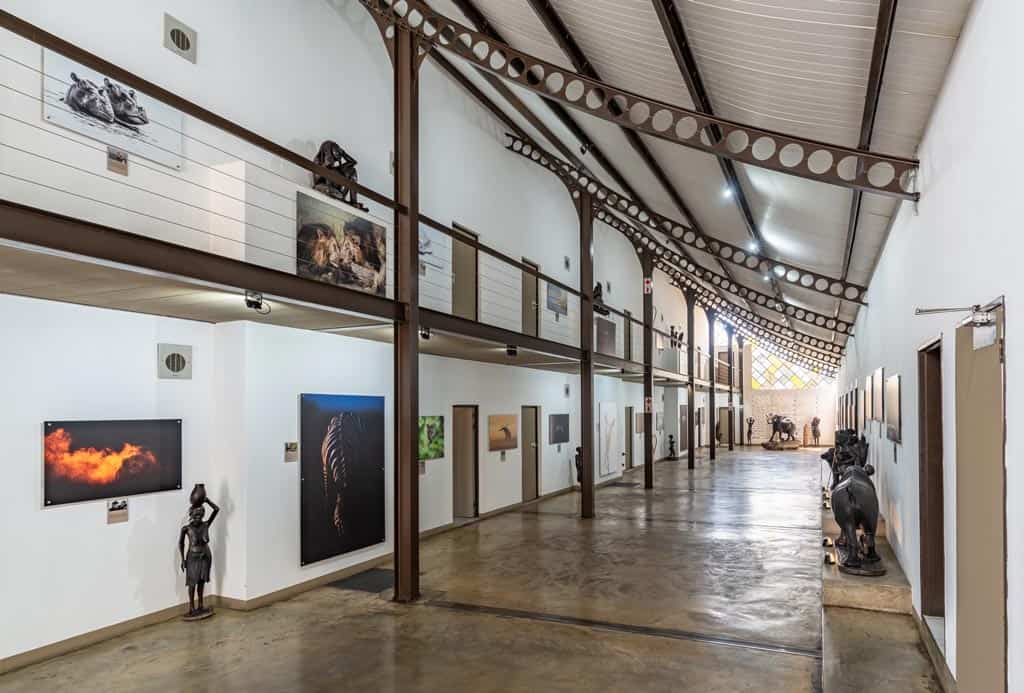
However there is another element to a safari with Pangolin that few other companies offer and no one else matches – unrivalled access to some of the best wildlife photographers in Africa with comprehensive mentoring and workshops.
The ethos of Pangolin were born out of frustration that photography workshops were often marketed to hardcore enthusiasts or professionals who paid exorbitant amounts of money to travel alongside their favourite photographer.
This traditional design made these workshops our of reach for most people, because the dates were entirely dependent on when the host wanted to lead the group (if those dates didn’t work for you, you’re out of luck), were very expensive and you needed to provide your own gear.
And anyone who has gotten into photography knows just how pricy it can be.
Guts and Toby, the two founders of Pangolin, flipped the industry on its head by creating a product where anybody could visit at any time of year and have access to world class photographers and even borrow camera gear if desired.
It was a revolution, and Pangolin Photo Safaris has been taking the photography world by storm ever since.
Even though we’ve been professional photographers for almost a decade and been fortunate enough to travel to some of the world’s best wildlife destinations, such as Antarctica , the Galapagos and Alaska, we learnt more in one week and captured our best images ever all thanks to the team at Pangolin.
If you’re a photographer, whether amateur or professional, and always wanted to travel to Africa with your camera, our Pangolin Photo Safaris review will go deep into what makes this place so incredible, and help you decide whether or not it is the right experience for you.
Let’s dive into it!
Quick Fire – 10 Things We Love About Pangolin Photo Safaris
- Mentoring by a professional wildlife photographer on every safari throughout your entire stay.
- The Pangolin boats are designed specifically for photographers with centre-row swivel seats and fully articulating tripod mounts.
- High quality Canon cameras and Sigma 150-600mm telephoto lenses for use by guests at no additional cost.
- The hotel staff are absolute legends, being some of the nicest people we met in Africa (plus being funny as hell when you chat with them).
- The lodge is luxurious and comfortable without being pretentious, complete with a permanent photo art exhibition
- All-inclusive high quality food and drinks, including premium wine, spirits and cocktails, as part of your stay.
- Communal meal times mean you get to know all the other guests staying at Pangolin, creating long-lasting friendships.
- Chobe National Park is an absolute mecca for wildlife, with the largest population of African elephants on the continent.
- The team are also safari planners with a wide network, and can help you book other lodges and safaris around Africa, including the wildebeest migration in Kenya or fly-in safaris in the Okavango Delta.
- A portion of the profits goes towards protecting the critically endangered pangolin species through their Pangolin.Africa non-profit organisation.
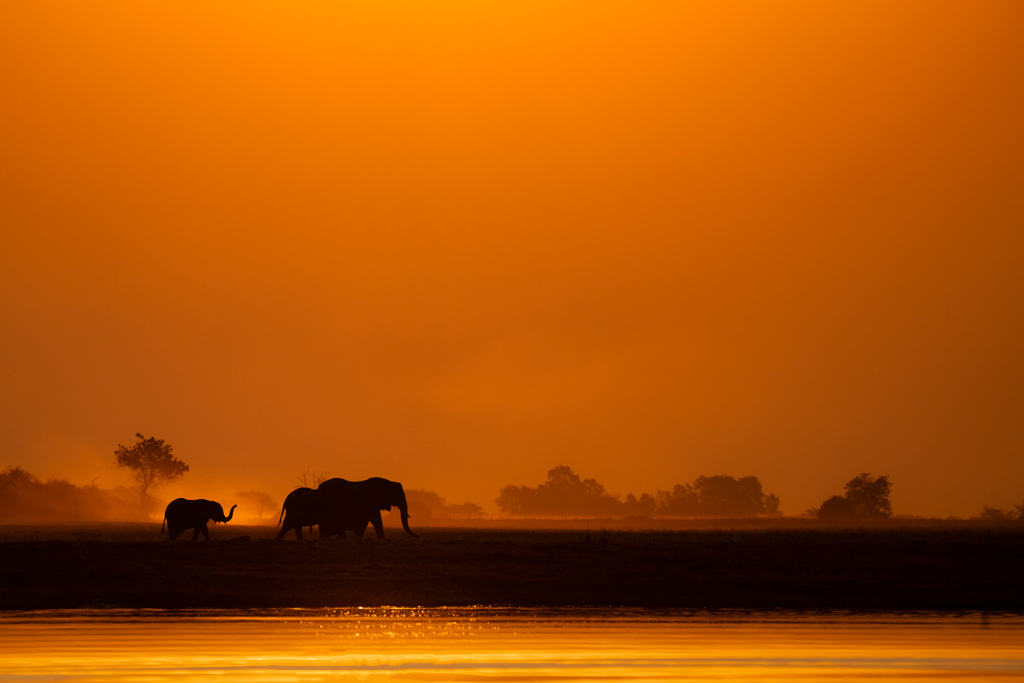
Pangolin Photo Safaris is based in Kasane, Botswana, right on the edge of the Chobe National Park.
Just a short drive away from the Chobe River, the main lodge is on the outskirts of town, making it quite peaceful and also regularly visited by wildlife including baboons, antelope and even elephants and lions.
The Chobe National Park is a wildlife enthusiast’s paradise, boasting a remarkable diversity of animals, including 4 of the Big 5.
It’s home to the largest population of elephants on the African continent, as well as an abundant amount of hippos, crocodiles, lions, leopards, giraffes, buffalo, impala, sable, water buck, other antelopes and of course a massive variety of bird life.
Pangolin’s location makes it an exceptional destination for game drives and Chobe River cruises, perfect for safari enthusiasts and photographers who a re looking for incredible encounters with Africa’s remarkable wildlife in their natural habitat.
READ MORE: Hitting the road in search of epic photography experiences? Check out our latest guide to the best cameras for travel right now!
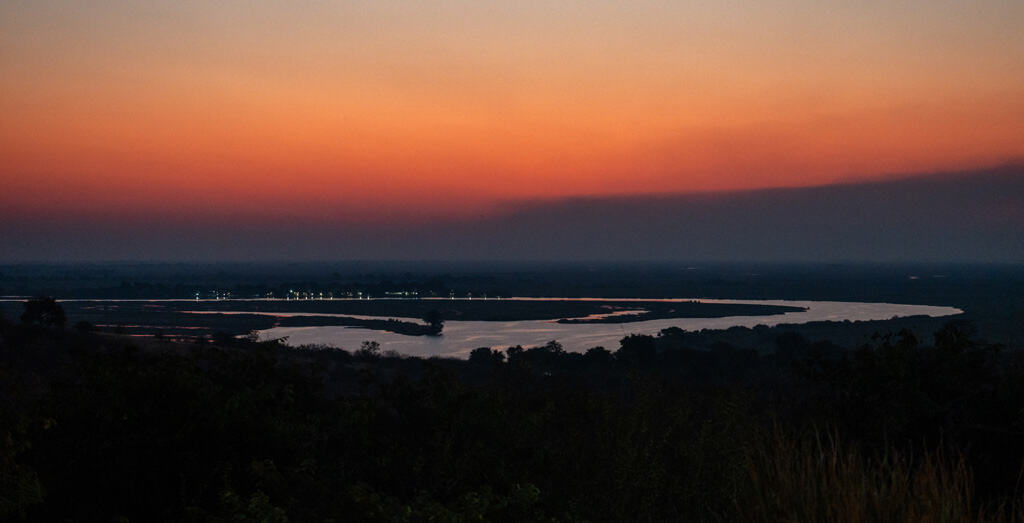
Pangolin is only a few minutes away from Kasane International Airport, meaning you can fly directly into the town and somebody from the team will pick you up and drive you back to the lodge.
However Kasane isn’t the most well-connected airport in Africa, so a more convenient option is to fly into Victoria Falls, Zimbabwe or Livingstone, Zambia, and have Pangolin organise your short transfer from there.
We personally did the short transfer from Livingstone, and it was absolutely seamless from hotel pickup (we just told the sales team where we were staying beforehand) to crossing the Botswana and Zambian borders and arriving to the lodge.
It’s about a 2-hour drive from either location.
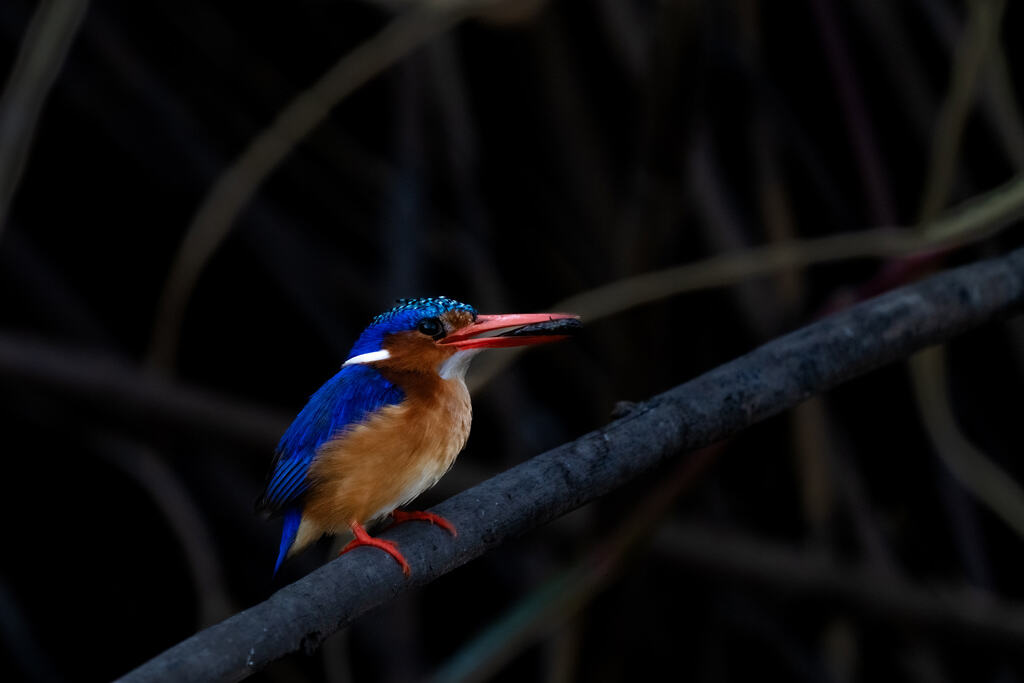
The Accommodation – Pangolin Chobe Hotel Review
Pangolin Photo Safaris operate two different accommodation options out of Kasane – the original Pangolin Chobe Hotel, and the latest addition, Pangolin Voyager houseboat.
The Pangolin Chobe Hotel is a luxury lodge in Kasane, Botswana, right on the edge of the Chobe National Park boundary and minutes away from the Chobe River.
It’s the perfect blend of high-end comfort, quality amenities and homeliness, encouraging guests to enjoy time with each other rather than maintain a celebrity-style exclusiveness.
Personally, we love that style.
We only stayed at the hotel so will discuss that here in our review. But there’s a little write-up about the houseboat further down our article.
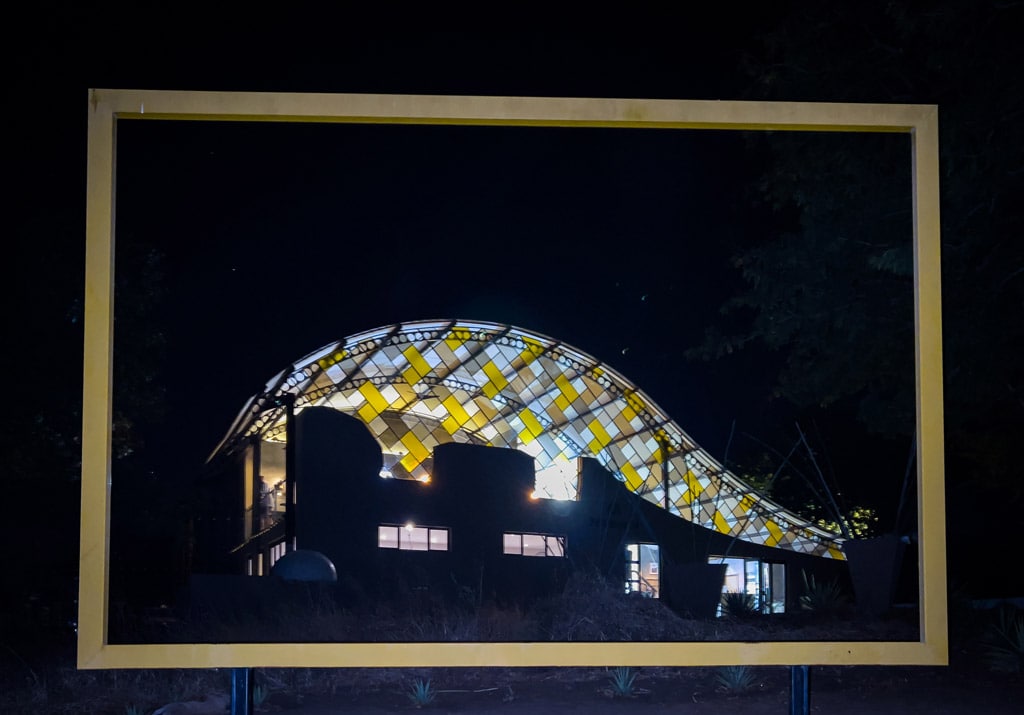
The rooms at Pangolin are designed for comfort and practicality, along with a suitable dose of epic art and photo prints, ensuring guests have everything they need for their stay.
There are enormous windows and balconies, providing ample natural light and a view of the Chobe River in the distance.
Some of the top floor rooms also look down over the watering hole, so if you’re lucky you’ll be able to spot wildlife right from your balcony.
The rooms come with all the essential amenities that travellers appreciate. The oversized beds are incredibly comfortable, ensuring a good night’s sleep after a massive day of safari adventures.
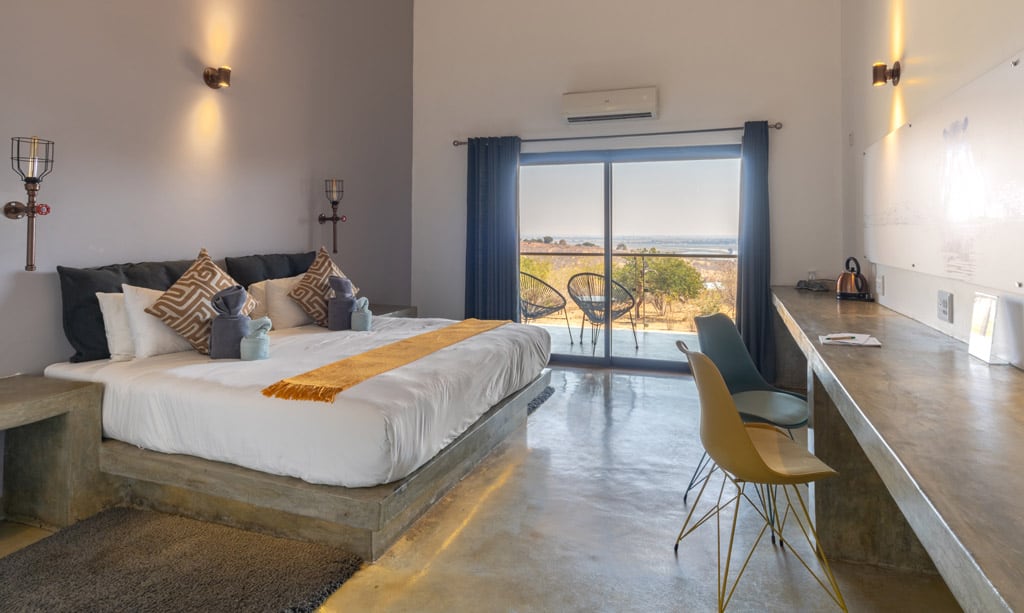
Of course it’s air conditioned and heated to keep the African weather at bay, and complimentary Wi-Fi, so you can stay connected or share your experiences with family and loved ones.
The bathrooms have a clean, industrial style to them, with exposed pipes and lots of hooks and bench space along with the large shower.
Finally there’s no forgetting that there are photographers staying here, and photographers tend to have a lot of gear. Cameras, batteries, lenses, chargers, accessories , laptops and more.
Knowing that, every room has a huge, solid bench that runs against the far wall with plenty of universal power outlets and USB points so you can spread your gear all over the place and keep everything charged.
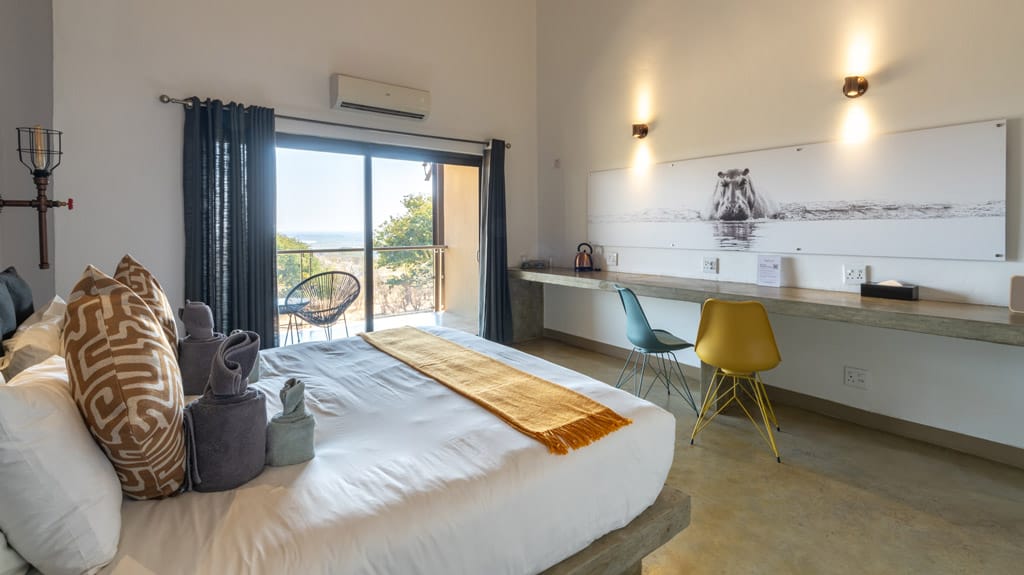
The Pangolin Chobe Hotel features a wildlife photography gallery through their halls that showcases some of the most incredible, inspiring images you’ve ever seen.
There are powerful images of big game to intricate shots of birds and even landscapes from around the world printed in large formats around the lodge.
The photos are taken by Pangolin’s photo hosts and a handful of photography guides that have brought groups to the Chobe on a Pangolin safari. (Hopefully us one day?)
We must have walked around the lodge dozens of times becoming mesmerised by all the shots hanging up, and becoming more inspired than ever to get out and create.
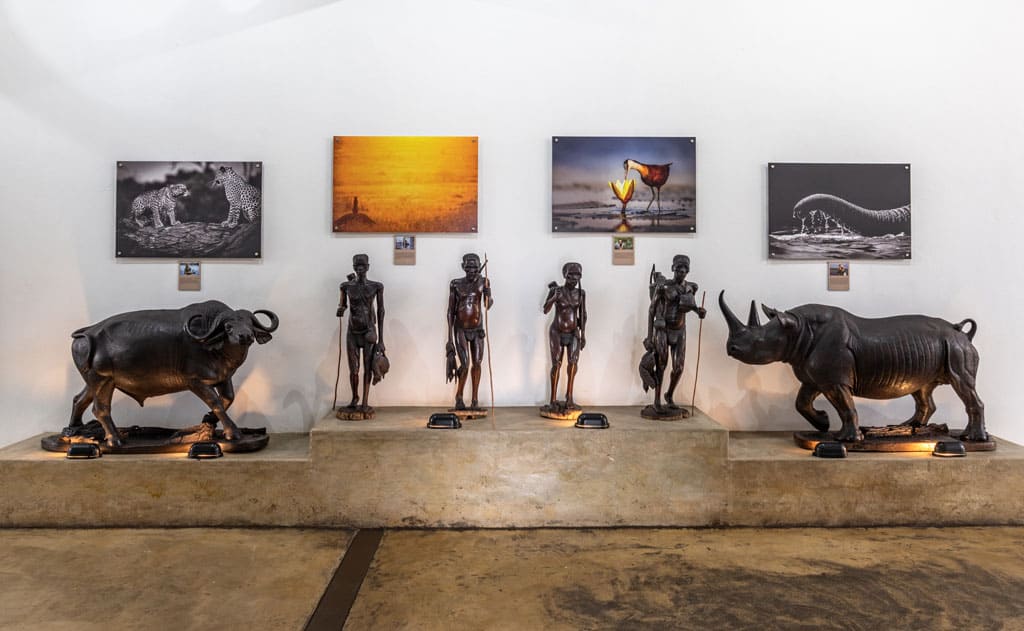
On the top floor of Pangolin Chobe Hotel is the large lounge area, which is the place to be in between safaris or after dinner when the stars come out and the cocktails are flowing.
You’ll find plenty of seating space, with sprawling couches and chairs to kick back on and a decent collection of wildlife and landscape photography books scattered around to read.
The bar runs the full length of the lounge with a formidable bronze pangolin statue in the middle, and there’s a barista coffee machine along with every type of drink you’d like.
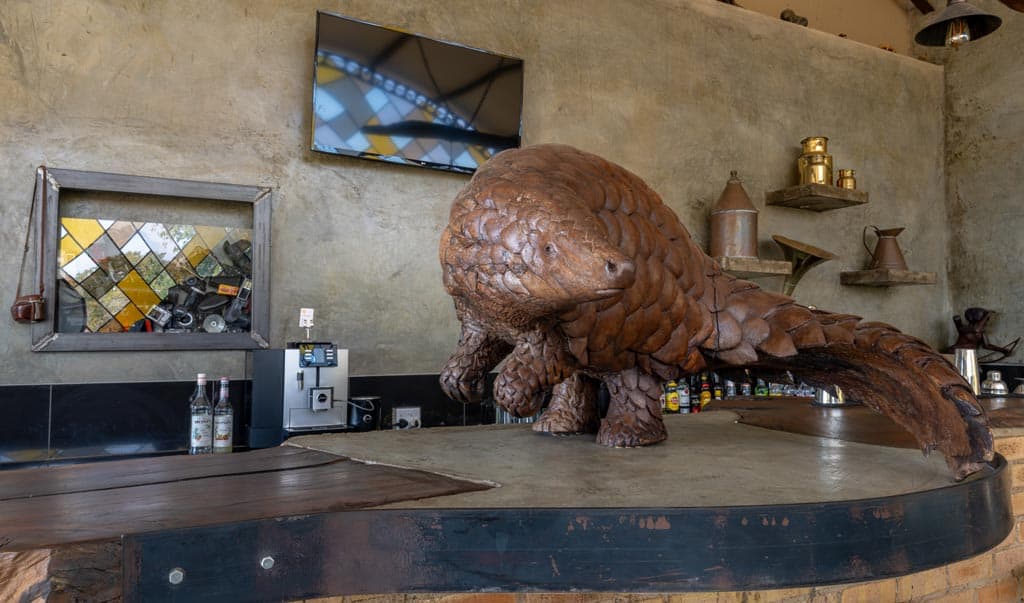
In the evenings a bartender is on hand to whip up signature cocktails or pour any type of drink you’d like, and the rest of the time you’re free to help yourself behind the bar for any of the pre-made drinks like soda, beers, etc.
If you’d like anything else like a coffee or mixed drink just ask one of the friendly staff who are always around.
The lounge has a great view over the downstairs dining area, watering hole and all the way out to the Chobe River, making it an awesome place to chill.
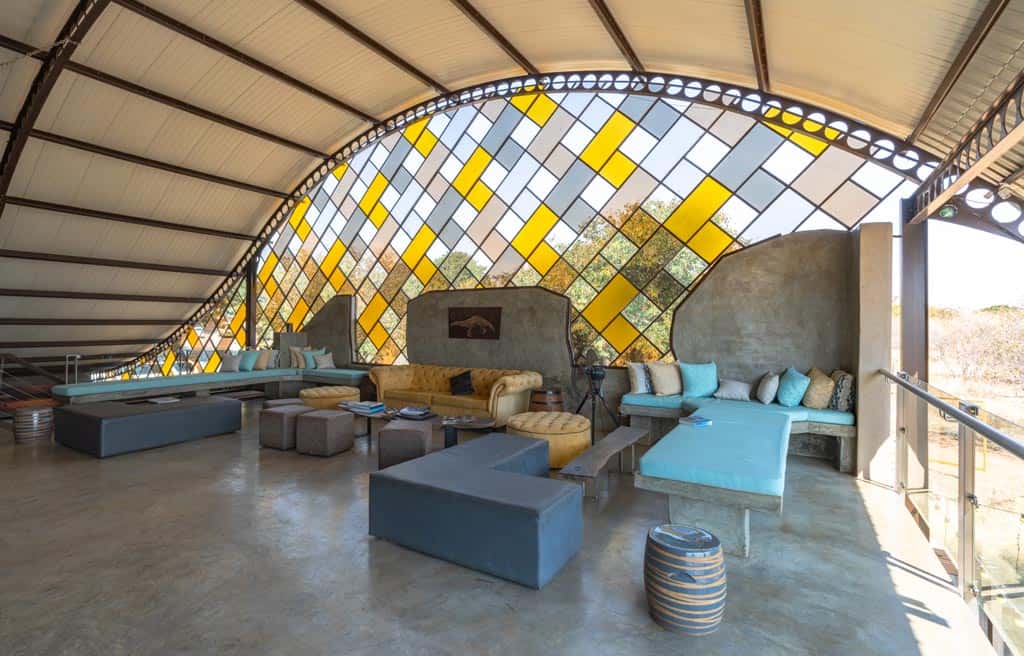
Downstairs you’ll find the dedicated photo editing room for workshops hosted by your photography guide in between safaris.
The dark room has a projector setup so the guide can broadcast their screen for everybody to see while they go through step by step what their editing workflow is like.
There are also a couple of PC and Apple computers available for guests to backup their own images or edit photos, in case you didn’t bring a laptop.
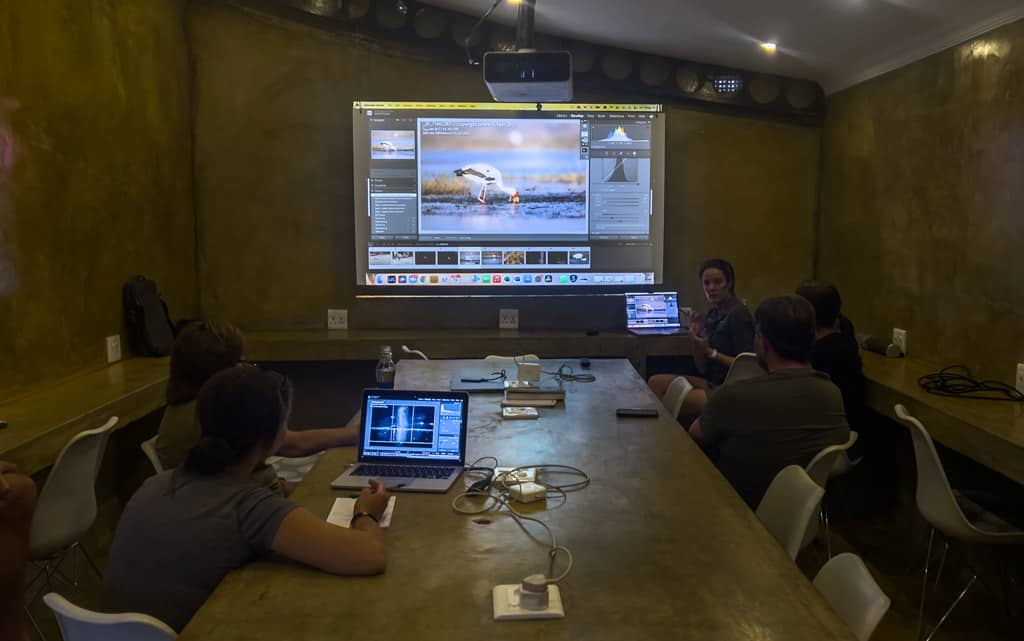
There are two places where meals are served at the lodge, both on the downstairs floor.
For breakfast, morning tea and afternoon tea, a buffet is laid out in the inside dining room, with a number of tables to spread out.
There’s a coffee and tea station, snacks and fresh lemonade to enjoy at any time.
In the evenings the fun moves outside, as all sunsets in Africa should, with a fire being lit for sundowner drinks.
READ MORE: Looking for another epic safari in Botswana? Do not miss Dinaka in the Kalahari Desert ! Read our full review for more information.
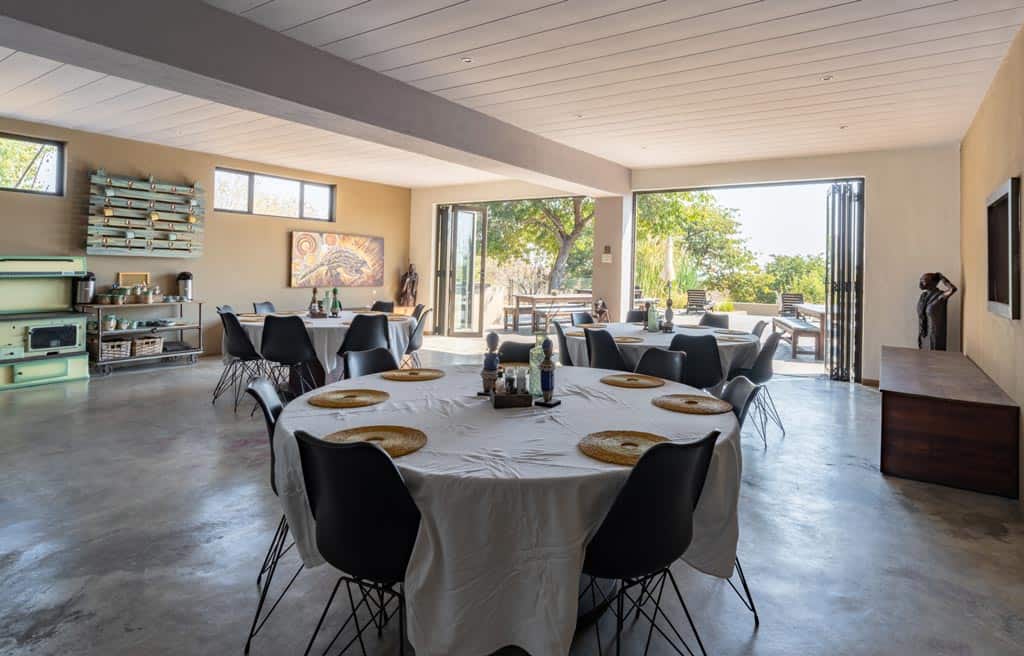
Dinners are prepared by the executive chefs, with entrees being served directly to your table and mains in buffet style. Desserts, of course, follow the mains.
Waiters wander around collecting drink orders too, so you don’t have to run upstairs to grab another one when your glass is empty.
We absolutely loved our outdoor meals, and one of the photography guides always hosts the meal too, sharing interesting stories and engaging with the guests.
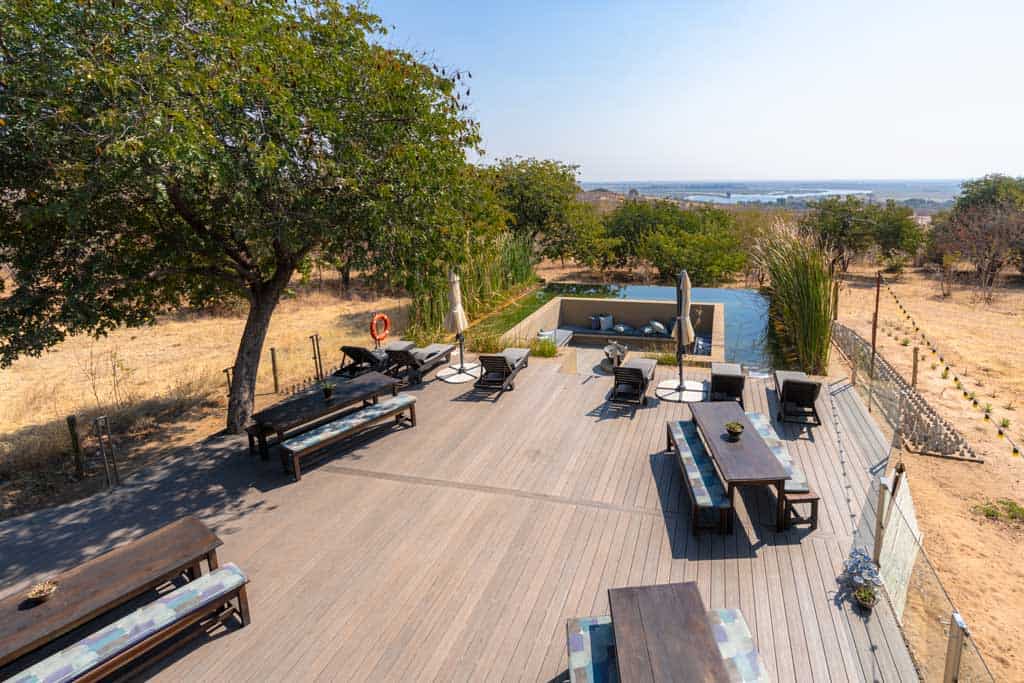
Oh boy, where do we start with the food? All the meals we ate at Pangolin were simply divine!
You’re served 4 meals a day – a light breakfast before your morning safari, a large morning tea when you return around 11am, a light afternoon tea before the next safari, and a massive dinner in the evening.
All dietary requirements are catered for, including vegetarians and vegans, as well allergies being looked after.
In the evenings there are often different themes, such as pizza night or a braai, and during our week at Pangolin we never were served the same dinner twice.
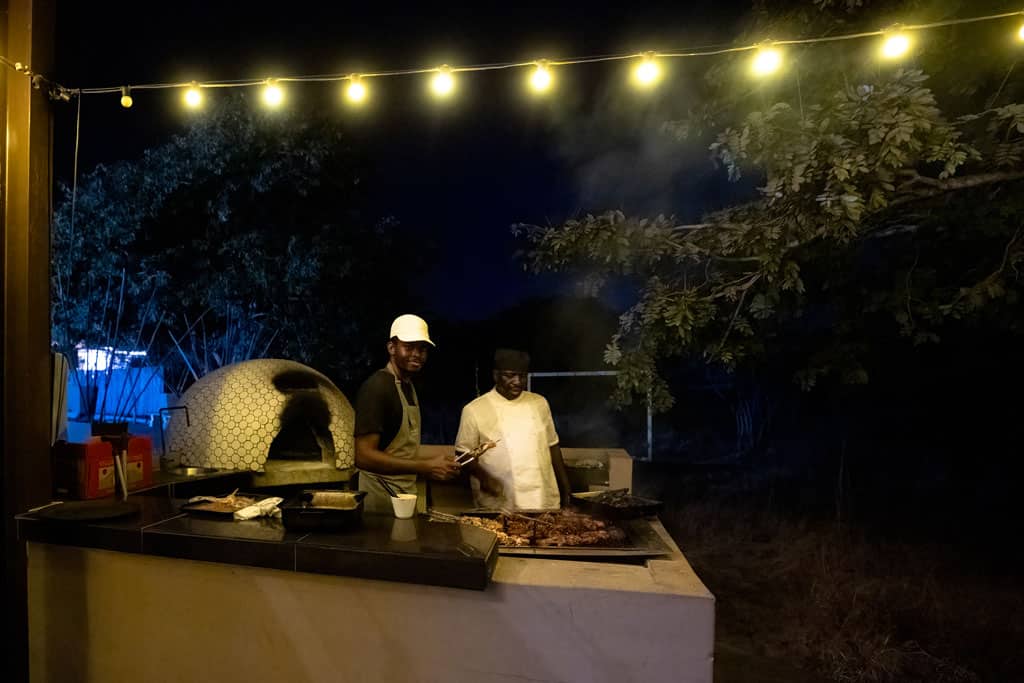
Finally one of the most amazing features of the Pangolin Chobe Hotel is the watering hole located right outside the rooms.
With recycled water being pumped into it constantly, the watering hole becomes a bit of a gathering point for a lot of wildlife, including antelopes, elephants and even lions.
You can watch the watering hole from the comfort of your balcony, but the best place to go is the underground bunker, or hide, that gives a water-level view.
READ MORE: Check out our full review of one of our favourite lodges in South Africa, Jaci’s Lodges in Madikwe !
You access the hide through a concrete tunnel, and once you’re down there you’ll find seats, power outlets, a bench and of course a narrow, open window for incredible vistas at the edge of the water
If you’re lucky and get down there with a few animals you can capture some remarkable photos. Unfortunately for us the wildlife always seemed to appear while we were on safari or sleeping (Pangolin has a web camera set up so they can monitor it), but hopefully you’ll have better luck than us.
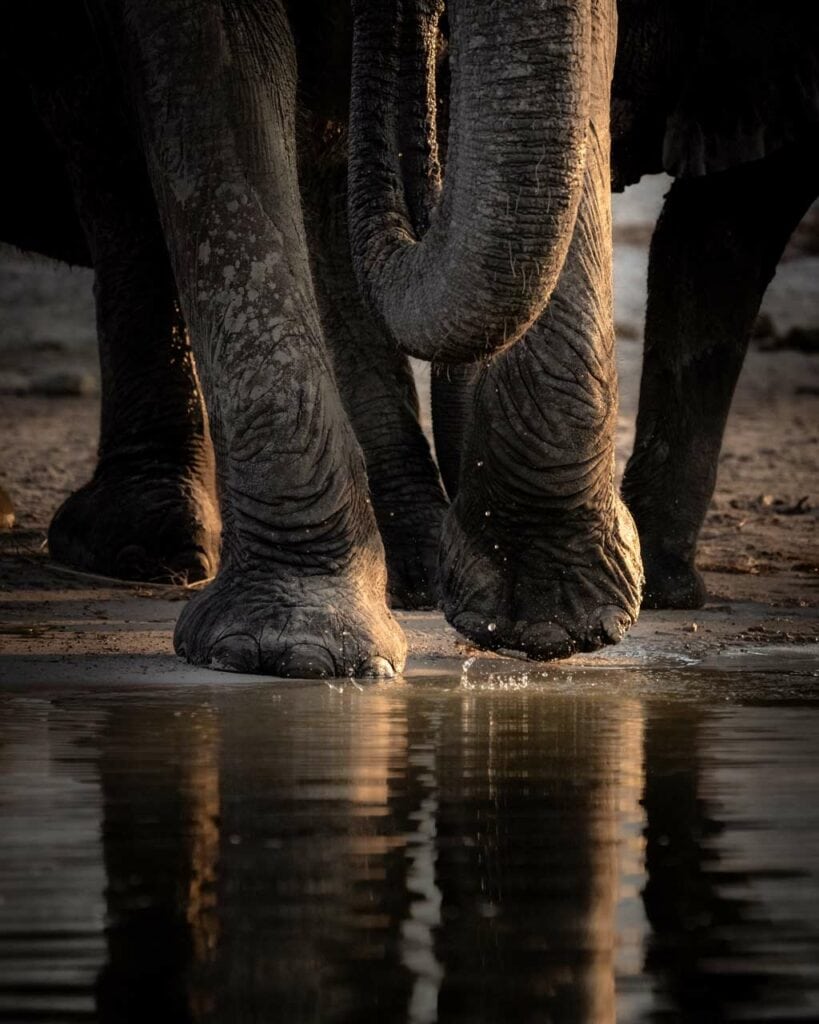
In addition to the hotel, Pangolin now owns and operates a Chobe River luxury houseboat on the Namibian side, with four cabins housing up to ten guests and its own dining room.
Guests who choose to book the houseboat stay onboard for anywhere from 2-5 days, with 3-4 being the most common.
The entire experience is supposedly epic, as you can get much deeper into the Chobe National Park then you can on day excursions, opening up a whole new landscape and wildlife hub, such as Namibia’s Caprivi floodplains.
The safaris are the same as when based on land, with the same photo boat being towed behind which you head out on for sunrise and sunset on the river directly.
The difference is rather than going back to the hotel, you sleep and eat on the floating lodge.
We didn’t have the chance to stay here as it was already booked out (seriously consider booking early if you want to stay there, it’s popular!), but we’ll definitely plan better next time to have a few nights onboard.
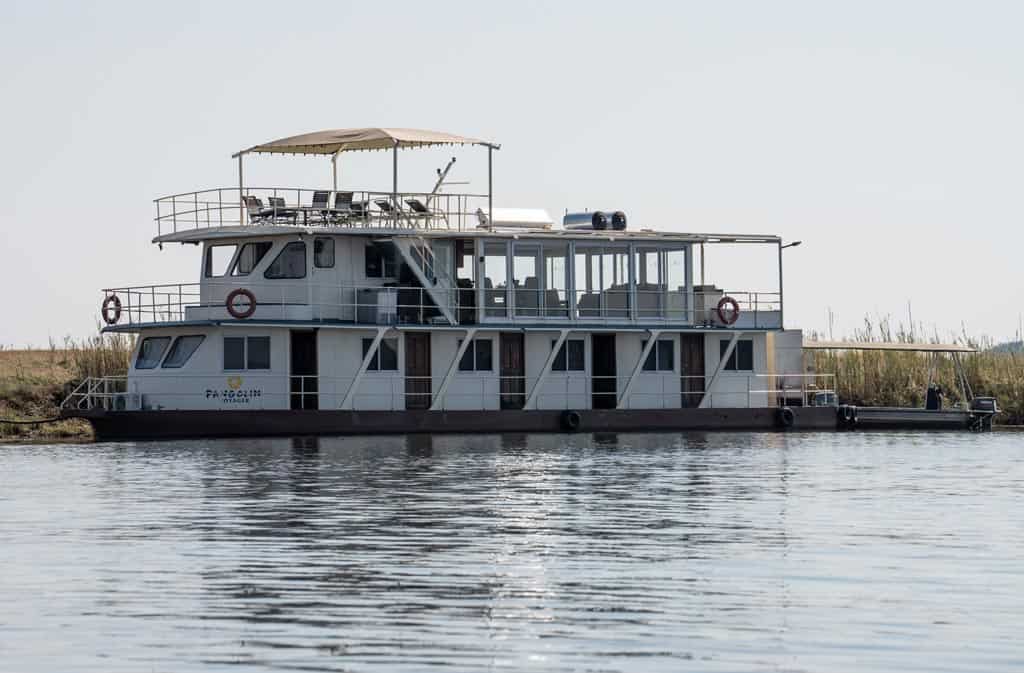
The Safaris
Pangolin Photo Safaris offers two different types of excursions twice a day; river-based and land-based.
When you sign up for a photo safari in Chobe National Park with Pangolin you’re assigned to a group and photo host (unless you’re already travelling as part of a group) so these excursions are usually scheduled for you.
But if you want to do one instead of the other you can do as you please.
That being said most guests opt to spend most of their time on the river, and that’s what Pangolin focuses on, as the photography opportunities are usually more diverse and interesting from the water.
READ MORE: We just published our latest safari review from the exclusive, luxurious Ker and Downey Shinde Camp in the Okavango Delta!
Photographers know that the absolute best time to take pictures is during golden hour, the time just after the sun has rose and just before the sun is setting, but sadly 95% of safaris you do in Africa don’t prioritise taking photos during this spectacular golden light.
At Pangolin though the entire excursions are designed to have you in the best place for optimum light, so you’re not going to find yourself suddenly stopping for a gin and tonic in a featureless plain during sunset.
Instead you’re chasing light and capturing animals at the exact time you want to be!
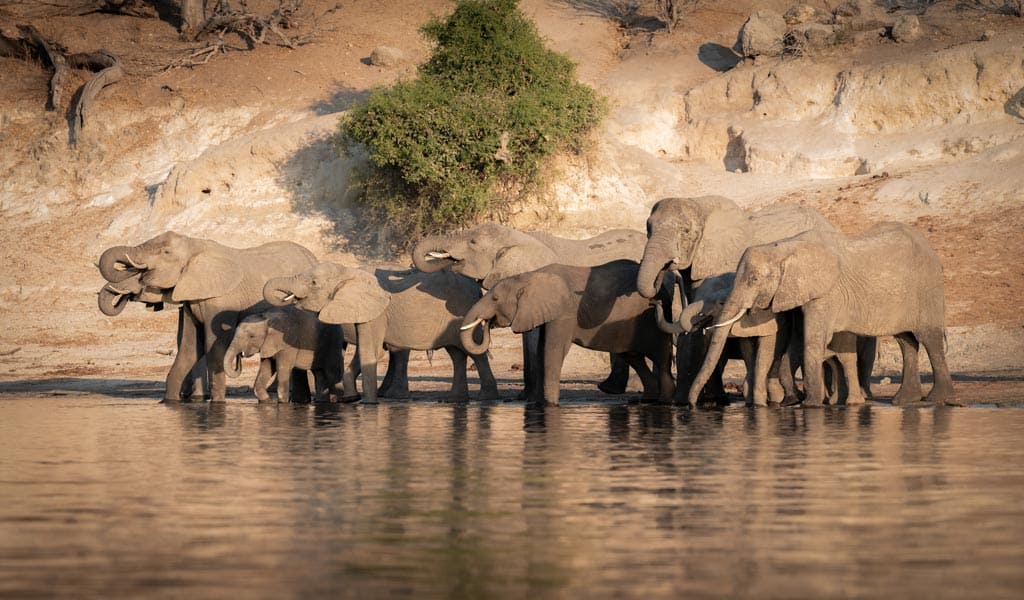
There’s also no time limit when you do spot an animal you’d like to photograph. While other safaris are often about quantity, rushing from one animal to the next, with Pangolin you have as much time as you’d like with whichever animal you want to photograph.
Stumbled across a herd of elephants that look like they might cross the river? The guys will move the boat into position for the best lighting and angles, and then simply wait to see what happens.
READ MORE: Don’t forget that you need to carry your gear somehow! Find the right bag for you with our detailed guide on the best camera backpacks for travel .
See a pack of baboons playing in a tree? Why not wait a while to see what kind of behaviour you see.
Miss the shot on your first attempt? No worries, let’s try again.
After all, as any experienced wildlife photographer will tell you, it’s all about patience and watching the animals.
Here are what the two different Pangolin safaris in Chobe National Park are like:
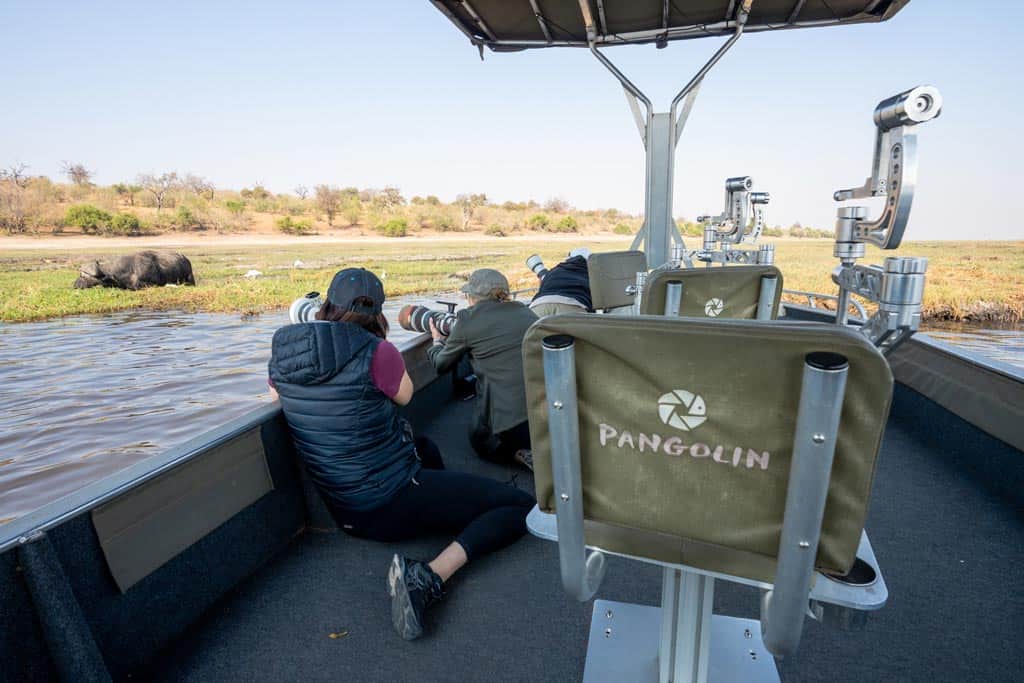
Chobe River Safaris
The real highlight, and style that originally launched Pangolin, are the river safaris that take place on the Chobe River.
There are two timings for the river safaris – one leaving about 30 minutes before sunrise and staying out for around 4 hours (depending on what you see), and another heading out around 3 hours before sunset and returning about 30 minutes after the sun dips below the horizon.
After a quick five minute transfer to the dock with your group you jump into your specialised photography boats (more on those below) and then head out in search of animals.
Most other safari companies in Kasane do land safaris in the morning and sunset cruises in the evenings, so the boat activity on the river is real minimal first thing.
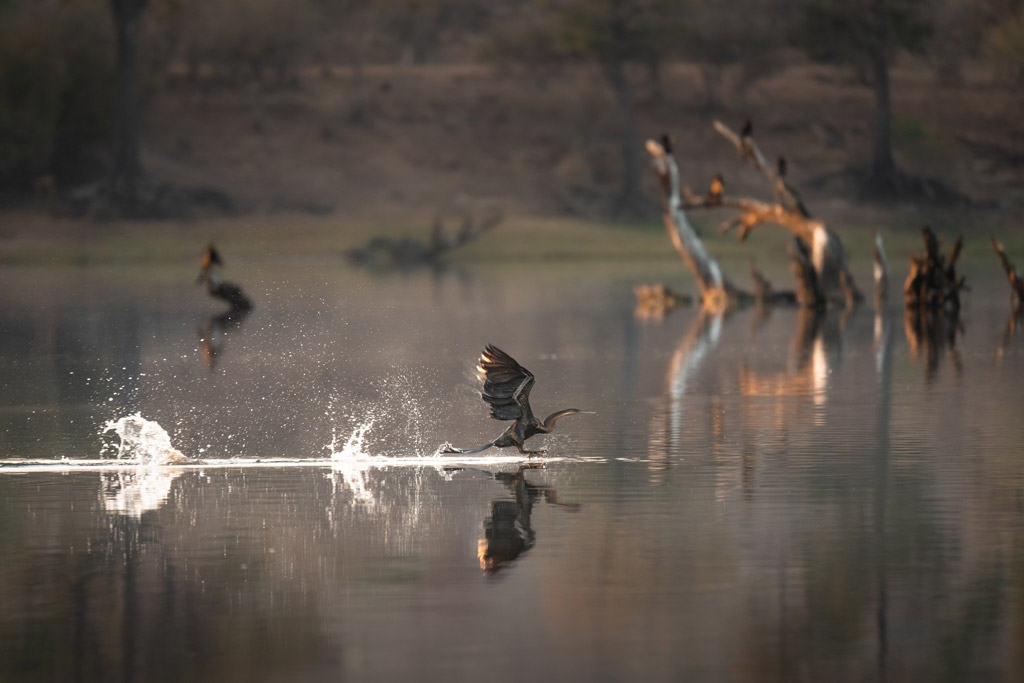
In the mornings the river is often incredibly still with mirror-like reflections, and while the larger game aren’t usually active then it’s a perfect time to chase bird life.
The boat drivers and photo guides will often go searching for malachite kingfishers, bee-eaters, storks, herons and other types of birds, and even if you’re not necessarily a birder it’s a wonderful experience watching and trying to photograph these gorgeous species.
Once the sun gets higher and the light turns from a golden glow into a harsher white it’s a great time to practice high key and low key photography, keeping everyone on their toes while getting creative with hippos, crocodiles, buffalo, antelope and elephants.
After a few hours you stop for a freshly brewed coffee and toilet (bushy bushy) break then continue the search for photographic opportunities before making your way back to the lodge around 10:30ish.
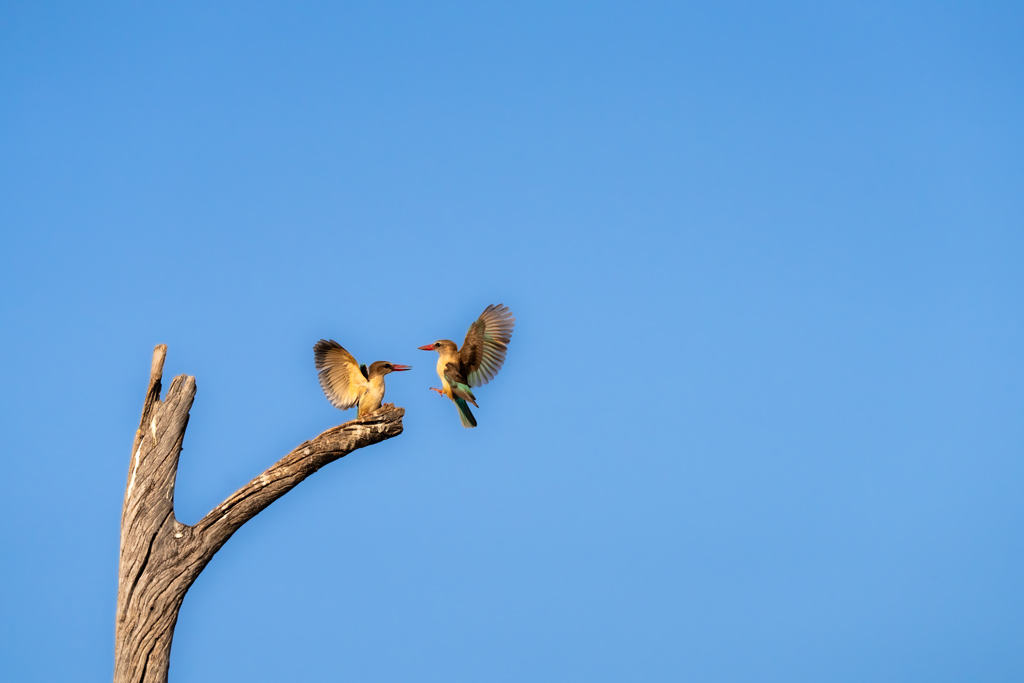
The afternoon trips operate in much the same way, except the big game sightings are often much more abundant.
Heading out around 3pm the group usually heads west, encountering huge herds of elephants along the way.
The guides have a number of places that they know are reliable for particular wildlife encounters and great photos, and depending on what the guests are looking for or what they’ve seen previously, the guides will loosely structure the safari to increase new opportunities.
For example there’s a little island that Africa skimmers often nest, and in the afternoons they are very active, flying around and fishing which makes for fun and challenging photography.
Then there’s Ele Bay, and with a name like that you can already guess what you’d expect to find there.
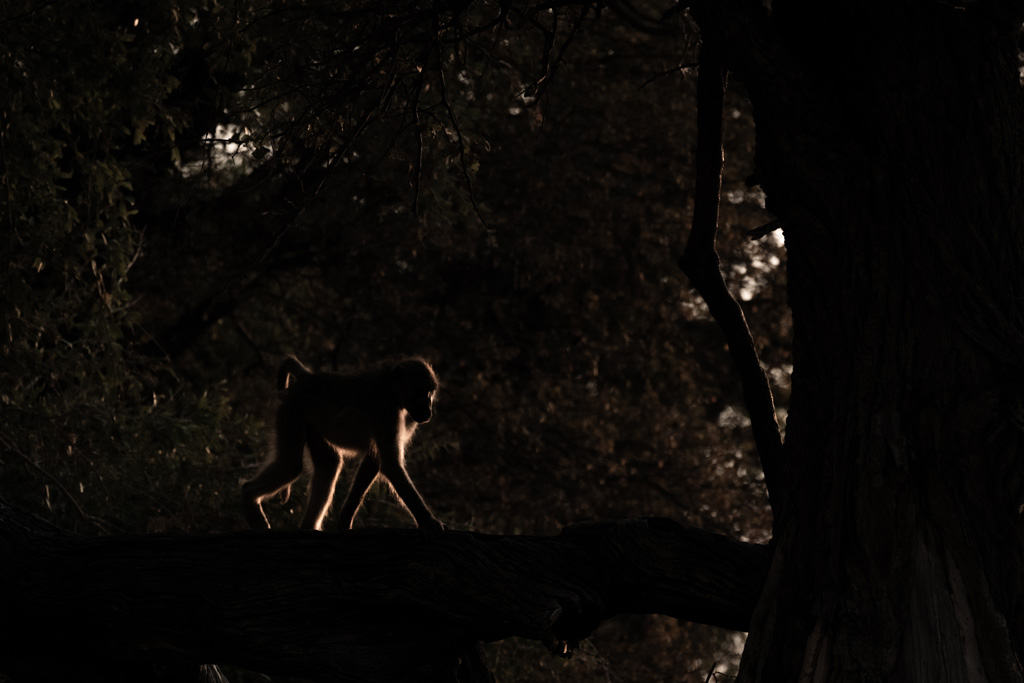
Huge numbers of pachyderms wander down most afternoons to drink from the water and play.
It’s also a great spot for hippos and baboons.
And finally as the sun starts to set most of the Pangolin boats will make a dash to Namibia’s Caprivi floodplains where you never know what animal will wander across the far horizon as the sun dips down.
For 3 different nights in a row we saw a herd of elephants, a tower of giraffes and a pride of lions. Pretty remarkable, and our absolute favourite images captured came from here.
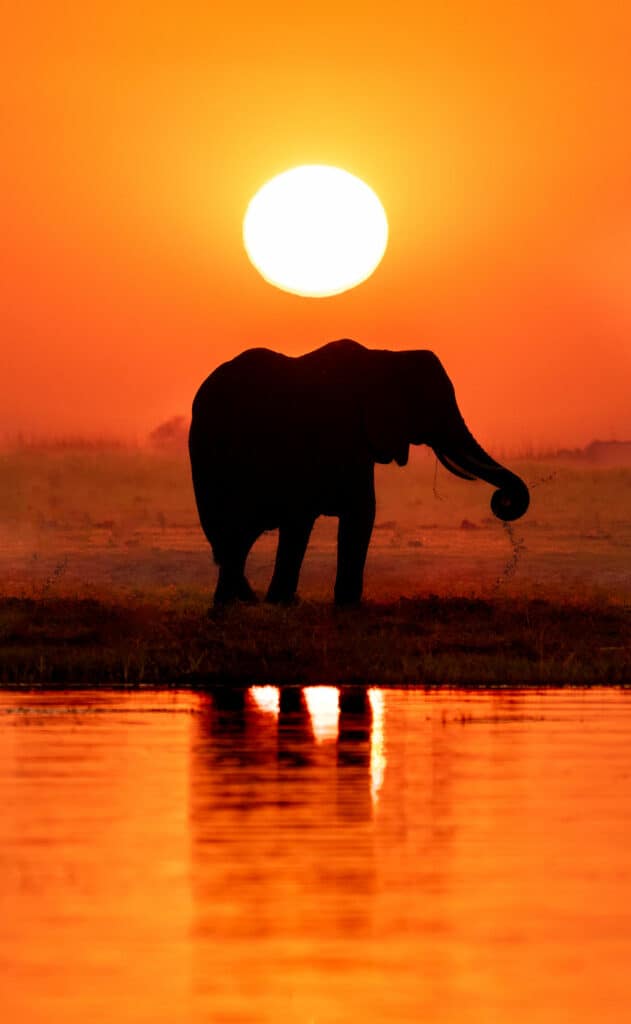
The boats that Pangolin owns and operates are a massive drawcard for why you should book a trip with them, and when out on the water they often have tourists from other cruise companies snapping photos of them.
The long, narrow aluminium boats were personally designed and built by Pangolin co-founder Gerhard ‘Guts’ Swanepoel, and were what initially kicked off Pangolin Photo Safaris before the lodges and tour company were developed.
There are 8 comfortable chairs lined down the centre that swivel 360 degrees, ensuring there’s no such thing as the ‘bad side’ of the boat.
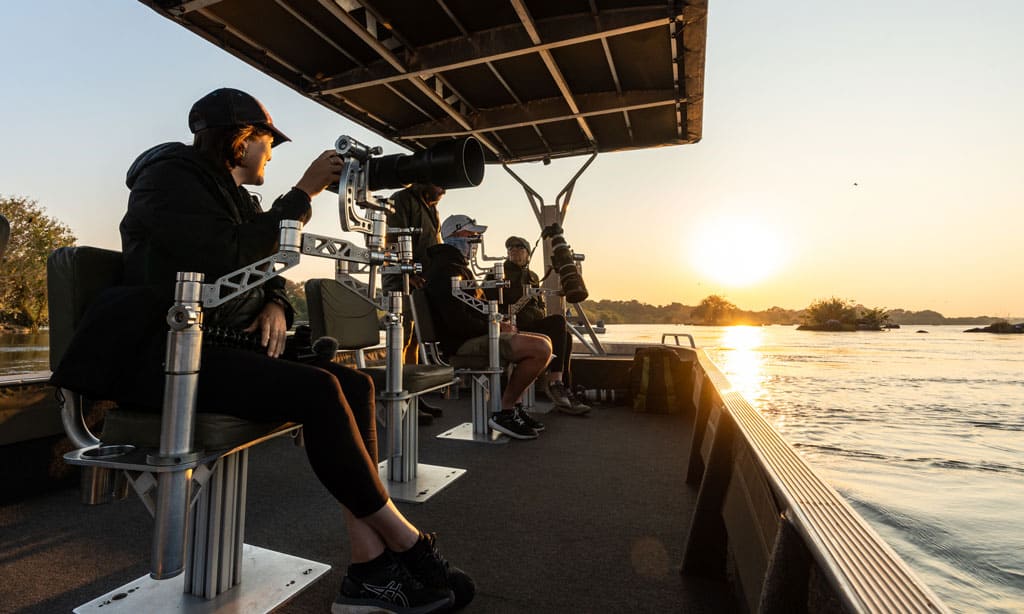
On the port and starboard side as well there is lots of floor space so you can jump out of the chair and get down low or move around if you’d like a different angle.
The thing you’ll first notice though that sets Pangolin’s boats apart from the rest are the heavy duty camera mounts that are attached to each set.
These fully adjustable arms have a standard tripod mount on the top and articulate in just about an infinite amount of ways, so you can put your heavy telephoto lenses on the mount and save your arms from burning.
They also allow for much sharper images when shooting at long focal lengths as it minimises camera shake, and improves video stability.
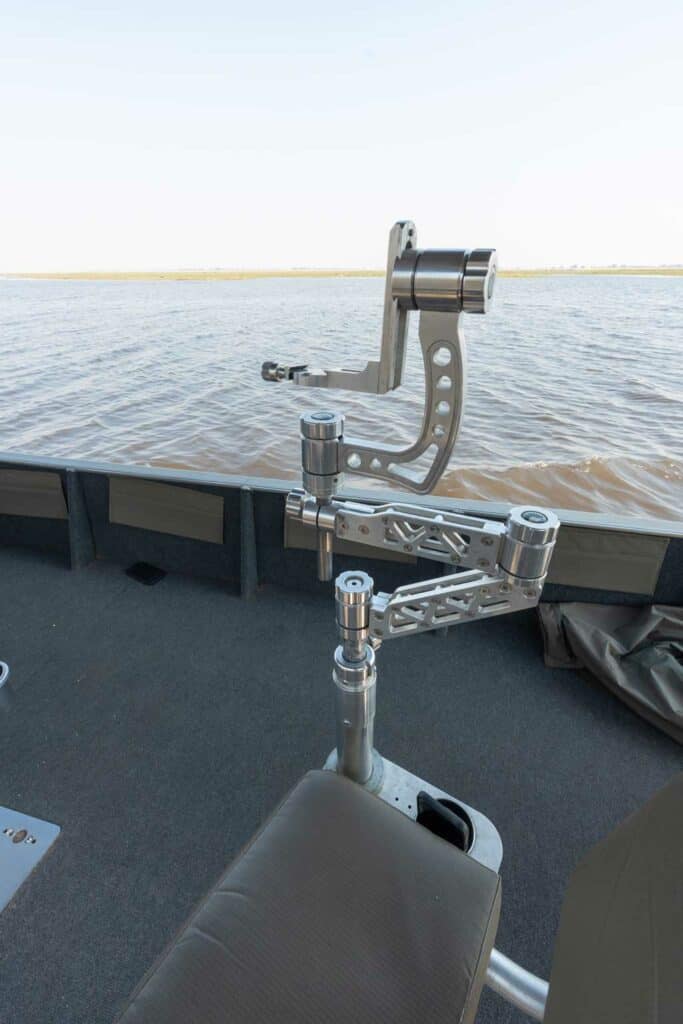
Another benefit of being on the Pangolin boats is the opportunity to get your camera nice and low for unique perspectives, which in wildlife photography is essential for more intimate images.
The boats have a shallow draft as well so they can get closer to the shore and between narrow channels as well, but are still more than stable enough for any type of conditions.
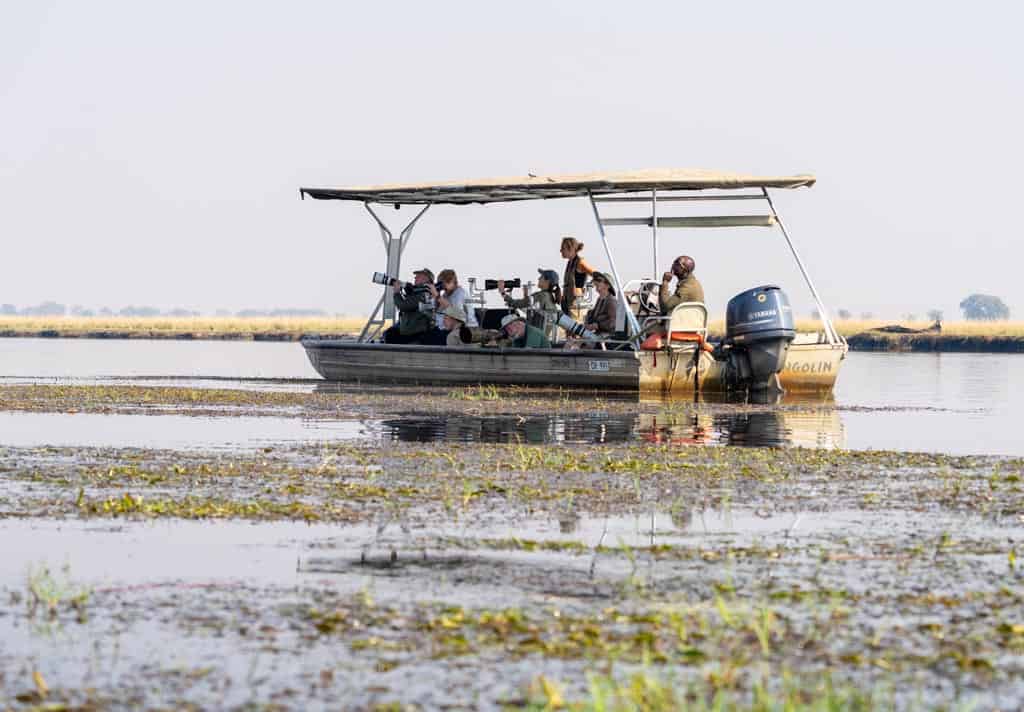
While the main attraction is usually the river safaris on the Chobe, the land safaris in the national park are well worth experiencing.
There’s a lot to see in the park, including lions, giraffes, elephants and if you’re really lucky leopards.
Jumping into one of Pangolin’s comfortable open-air Land Cruisers you head out into the park either morning or night, and while you’re usually not the fist vehicle in the park, the guides make a conscious effort to avoid most of the other trucks.
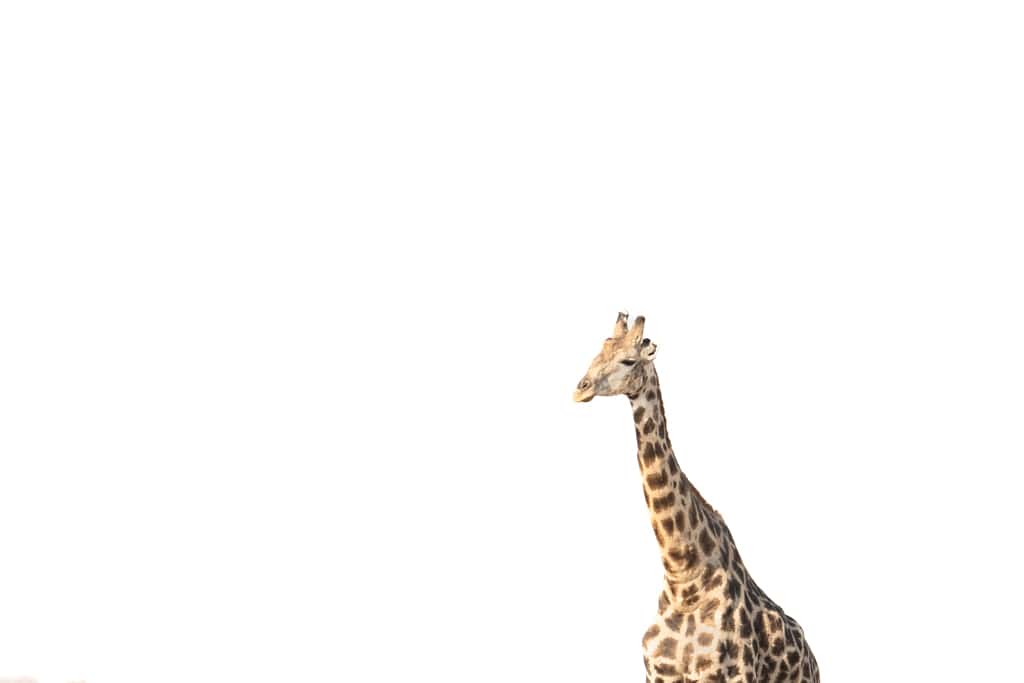
Photography is the name of the game, so if the choice is go see a male lion along with 20 other cars with poor angles, or go find giraffes drinking from a water hole with no one else around, the quieter option often wins (unless it’s something none of the guests have seen before like a leopard.
The land safaris with Pangolin do result in great photos, and you absolutely should head out on at least one during your time at the lodge.
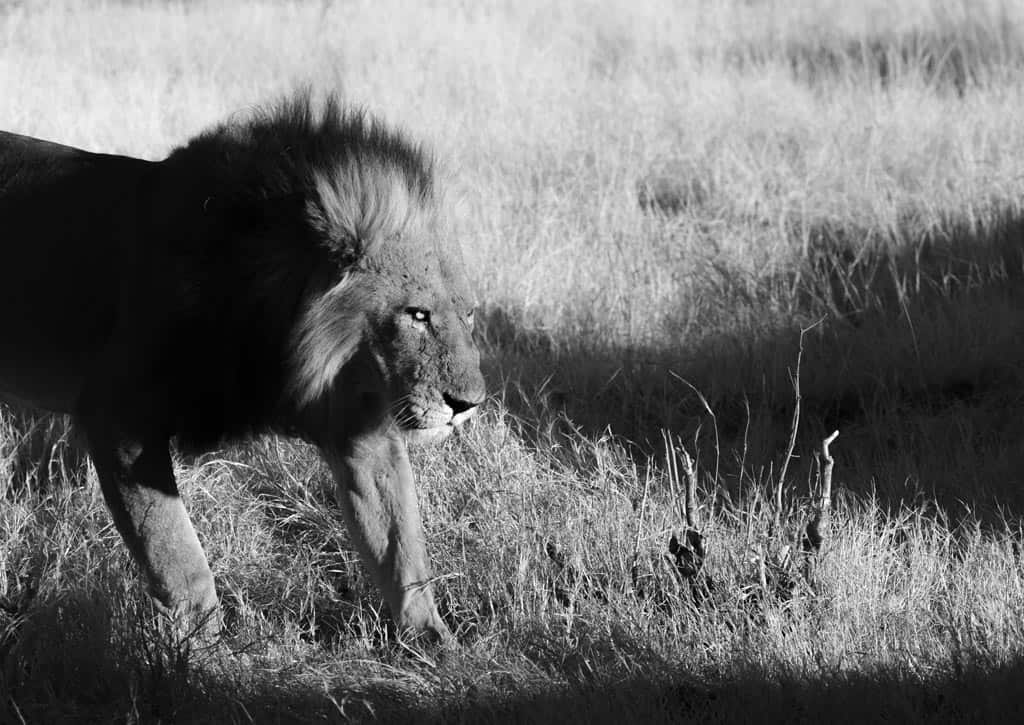
You’ve heard us talk about the Pangolin photo hosts a bunch by now, but we’re going to dive a little deeper into them to explain a) why they’re so awesome and b) why they really make your visit to Pangolin so much more complete.
The company was co-founded by Guts Swanepoel, one of the world’s best wildlife photographers, on the premise that wildlife photography should be enjoyed by everybody, regardless of skills and gear, and that with just a little bit of guidance anybody can walk away with incredible images of animals.
The other co-founder, Toby Jermyn, is more of a hobbyist photographer with a passion for the African bush and animals, and in this style is the exact reason why a company like Pangolin exists and is so successful – come one come all, bring your camera, or borrow one, and capture beautiful images and discover a newfound appreciation for African wildlife.
Every single safari would be lead by Guts, who imparted all his knowledge on how to capture exquisite images and get better at using your camera, and the formula started to gain worldwide recognition.
As Pangolin grew in popularity there was a need to hire more photo hosts, and Guts and Toby set off on the difficult task of selecting professional photographers who were not only exceptional in their craft, but also fantastic teachers and selfless guides.
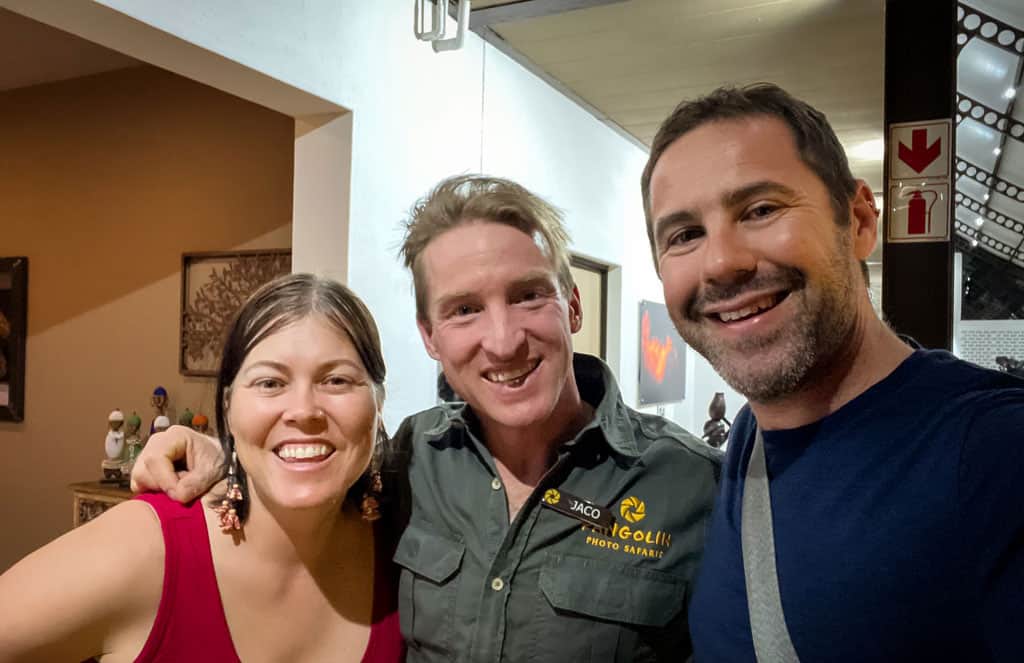
Fast forward to today and Pangolin has achieved just that, with a whole team of photo hosts that are the absolute best in the business.
When you check in at Pangolin you’ll become part of a group that’s led by one of the experienced photo hosts, and they’ll become your personal mentor throughout your stay.
On every safari you’ll be joined by them, and their job is to ensure you capture mind blowing photos.
They rarely take a photo themselves (partly because their portfolios are already enormous), and instead walk up and down the boats or give guidance from the Land Cruisers to make sure you’re doing ok.
If you have a question about your camera, they are there to help.
Need some ideas for which settings to use? The photo hosts will chat about what they would select and why, giving suggestions on how to capture high or low key images, birds in flight, slow panning shots, or whatever else you’d like to create.
READ MORE: Thinking about joining a small group photography workshop? Check out our international photo tours !
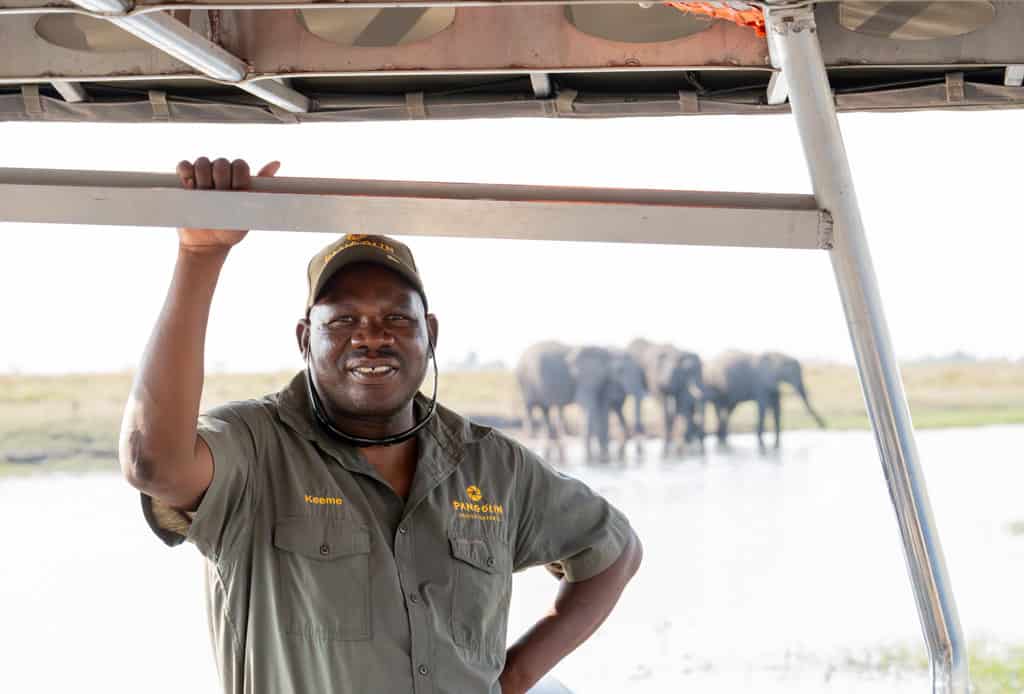
The hosts though aren’t overpowering, and are more than happy to stand back and let the guests do their own thing if they’re feeling confident.
Back at the lodge the photo hosts head to the editing room to work on some of their images, and also those of the guests if they wish, to show exactly what they’re workflow is and teach some of their tricks of the trade.
During our time at Pangolin we actually had the chance to bounce between a few different photo hosts as we weren’t part of any one group.
We were privileged enough to have Jaco, Janine, Pusetso and even Guts as our guides on our visit and thanks to them came away with not only the best wildlife photos we’ve ever taken, but also an entire new skill set and appreciation for this art form.
Having the opportunity to spend time with and learn from some of Africa’s top wildlife photographers is something that cannot be taken for granted.
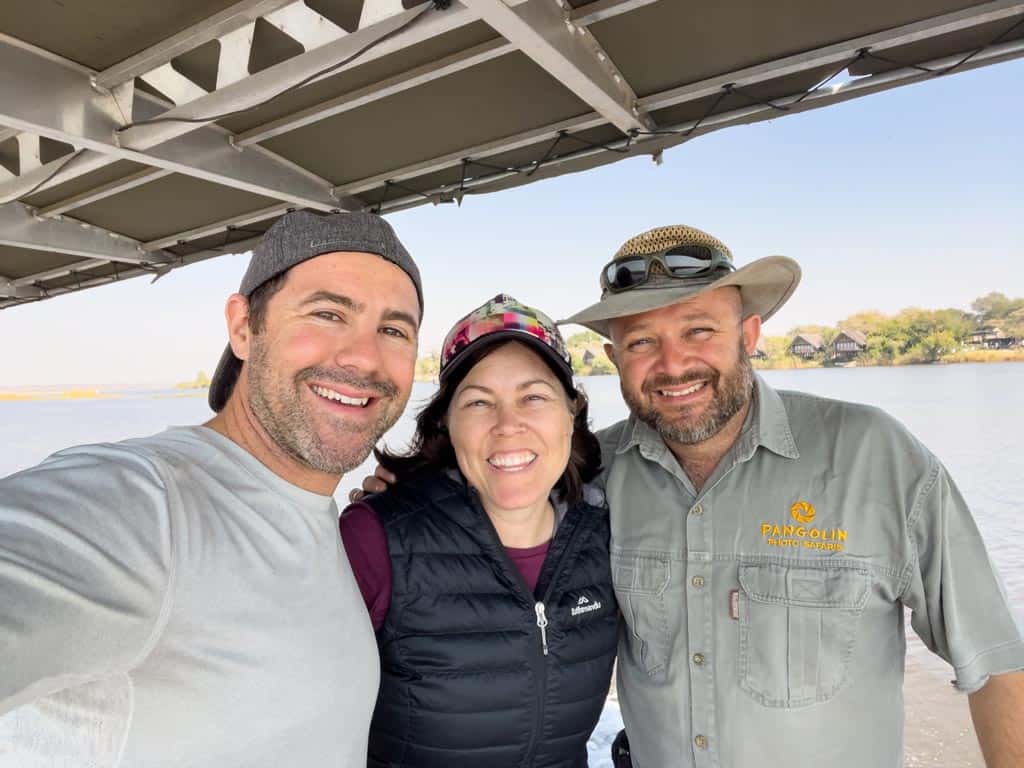
You might think that because Pangolin run ‘photo safaris’ that the only way to join is if you’re a professional yourself.
That is not the case at all!
In fact most people who travel with Pangolin, either to their lodge or houseboat in Kasane or on any of their other African safaris, are beginner or hobbyist photographers who just have a desire to capture great images of animals or improve their skills.
Some people bring their own camera gear, while others will use the equipment supplied by Pangolin.
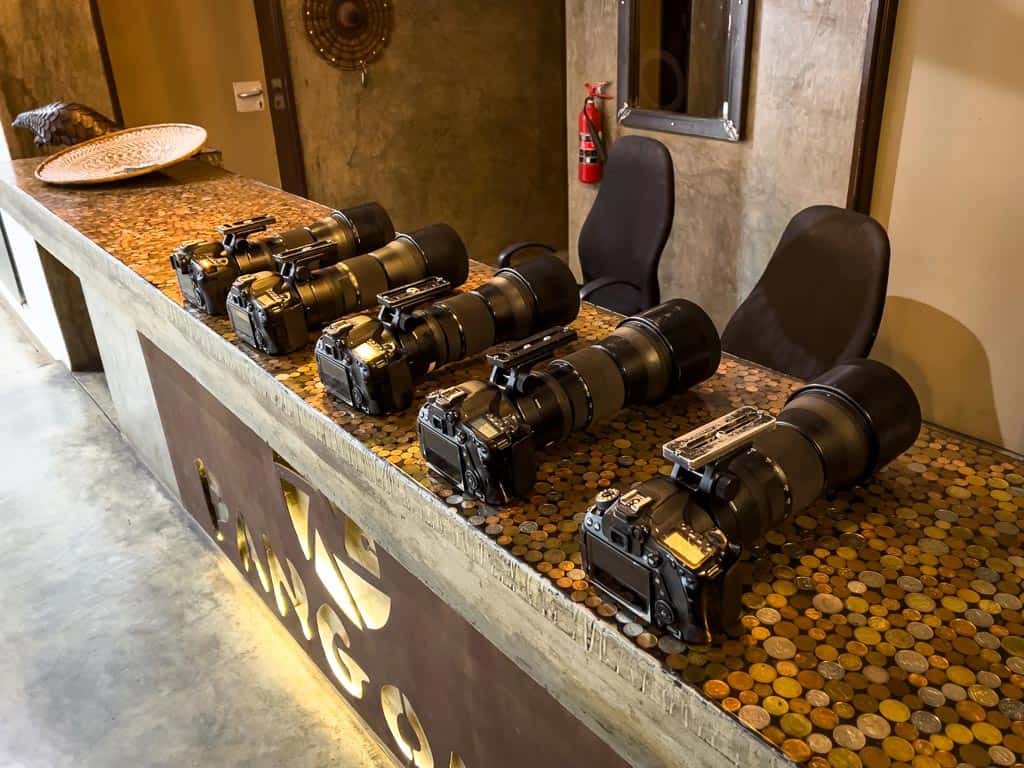
Some guests also have no interest in photography at all, and on our particular safari one of the ladies didn’t even touch a camera, and instead just used binoculars to observe the animals.
While each safari is designed with photographers in mind, this is not on an exclusive basis and a benefit of travelling with Pangolin as a non-photographer is that you spend much more time with individual species than other companies in Chobe National Park do, and you have a very experienced local guide and wildlife photographer with you to talk about animal behaviours and facts.
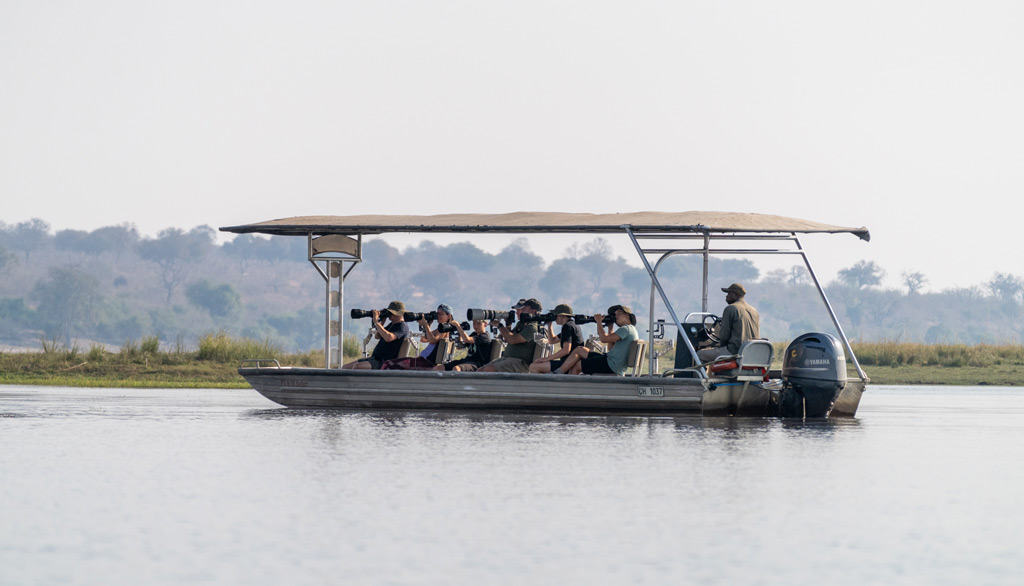
The story of how Pangolin got its name is a fascinating one (if Guts is there when you stay, ask him about it), and for anyone that is aware, the pangolin is one of the most endangered species in Africa thanks to illegal poaching.
Because some cultures wrongly believe pangolin scales have medicinal benefits (spoiler alert: they don’t! A pangolin scale is made of keratin, the exact same substance your finger nails are made from) a massive black market trade has emerged around hunting these fascinating animals.
Toby and Guts have decided to take charge of this disastrous crime by launching a not-for-profit organisation called Pangolin.Africa that is dedicated to the conservation and protection of the four African species of pangolin.
When you book a stay here $5 per night is donated to the charity which creates initiatives for locals to protect not harm pangolins and raise awareness.
As of this year they have also launched the ‘Pangolin Champions’ programme which is a fun, interactive online course you can do either at home or at the lodge.
With education comes awareness, and if Toby, Guts and their entire team have their way the pangolin will bounce back and be around for many generations to come.
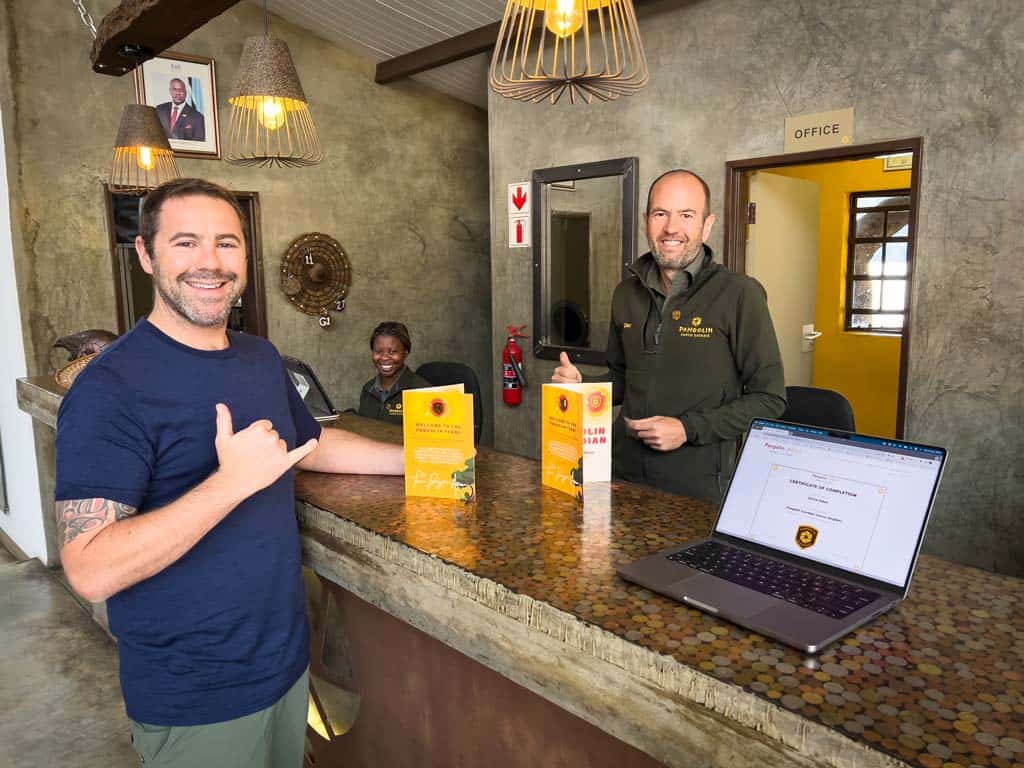
A Typical Day at Pangolin Photo Safaris
So what exactly is a typical day like at Pangolin?
If you’re working your way through our Pangolin Photo Safaris review and still wondering if it’s for you, this is what you can expect on your visit.
You wake up at 5:30am (during the winter months) and head down for a light breakfast and coffee at 6am.
Around 6:30am you jump in a minivan or car and head down to the dock to board your boat (or take a Land Cruiser into the Chobe National Park for a game drive).
For the next few hours you’ll chase the light, being guided by what the local guides and photo host see, having plenty of opportunities to photograph the wildlife.
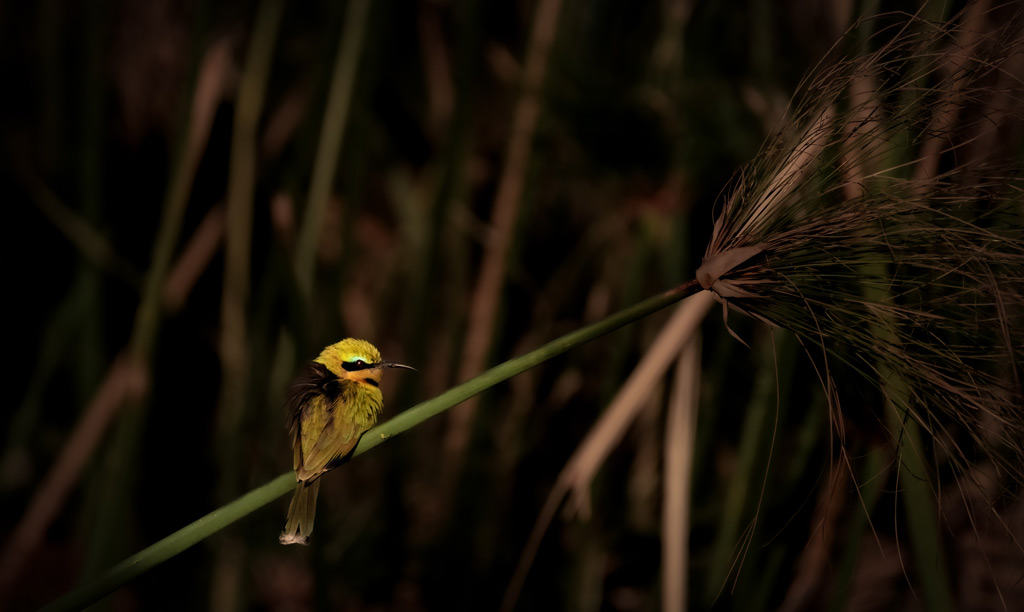
Around 9am you’ll stop for a coffee break, and the photo host will whip up fresh batches of tea, coffee and biscuits.
If you need the bathroom the boat driver will also find somewhere on land that is safe to go in the bush.
At about 10:30am you’ll start making your way back to the lodge.
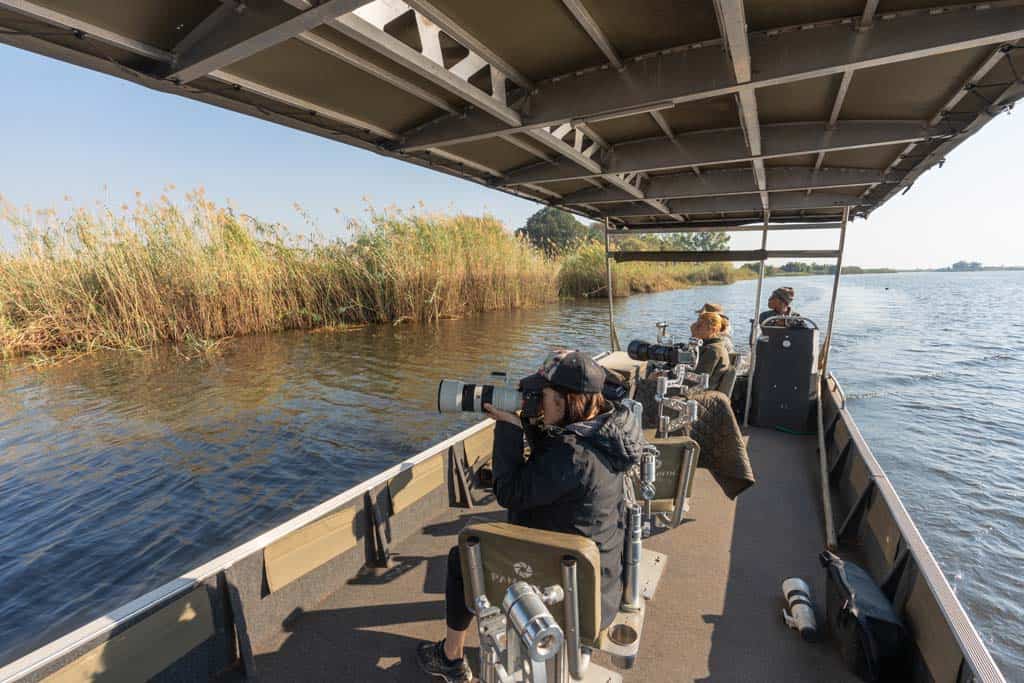
It’s 11am and time for brunch, which is served in the downstairs dining room buffet style. There’s a great variety of healthy, filling food to tuck into, as well as more coffee and tea of course.
Once you’ve finished eating you have the next few hours to relax. It’s a perfect opportunity to back-up your photos, clear your SD cards and maybe have a bit of a nap or read in the lounge.
If you’re interested in doing a bit of an editing workshop your photo host will book in a time at the editing room so you can sit down and learn how the best in the business use Adobe Lightroom, Photoshop, Topaz and other software to make their images pop.
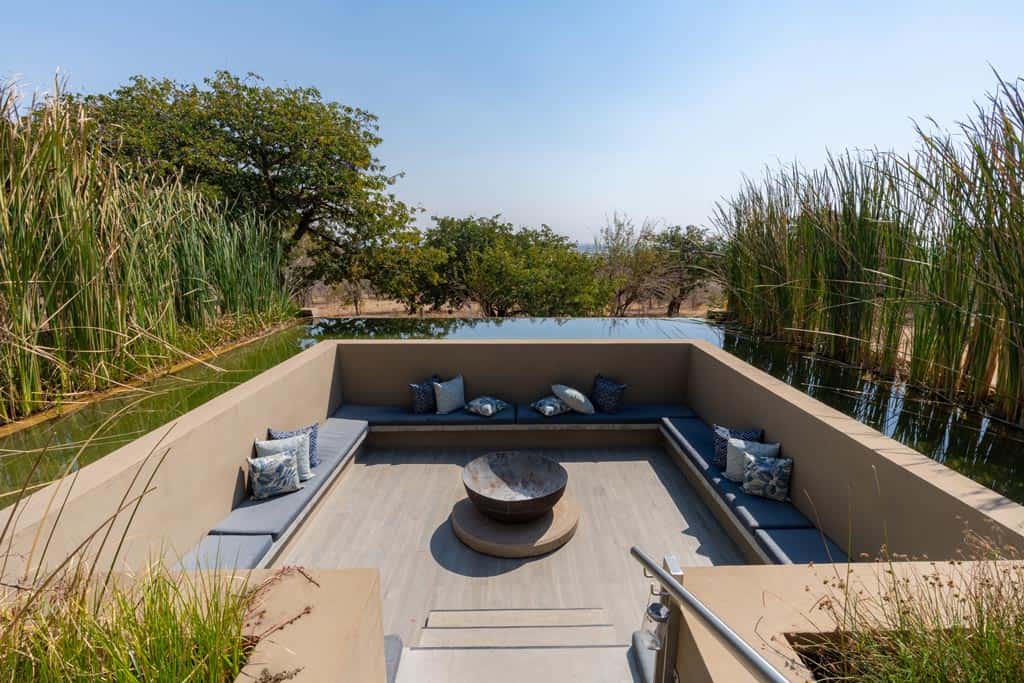
For us we’d usually head in around 1:30pm with our host and dive into their workflow. It really is a wonderful, interactive opportunity, and you have the option of working together on some of your own images, or watching our the host edits their own photos.
For beginners you can also go through an ‘Introduction to Photography’ workshop where the photo host dissects all things photography such as the Exposure Triangle , focus modes, basic editing, etc.
At 2:30pm there’s afternoon tea in the dining room so you can get some energy before the next activity.
3pm it’s time to head out on the last safari for the day. This will either be on the boat or a game drive, depending on what you or the group would like to do.
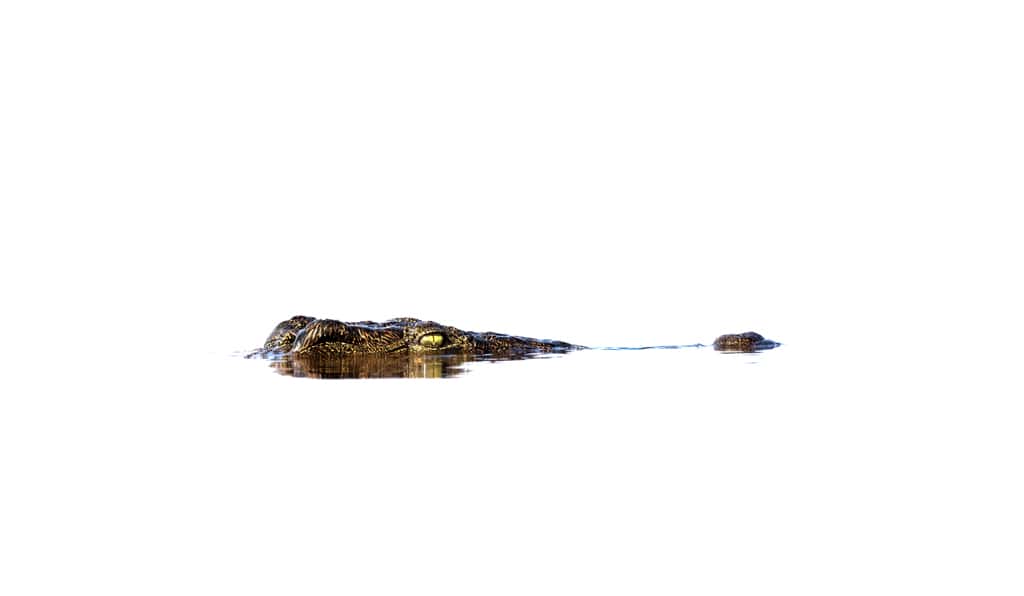
The afternoon safari is much the same as the morning, with a different focus on the types of animals you’ll encounter and more chances to get creative with your pictures.
Along the way there’ll be a short toilet break if required, otherwise the cooler is always open for soda, beer, wine or anything else you feel like drinking while photographing wildlife.
When golden hour approaches your photo host and driver will head to the perfect spot to catch sunset. As mentioned earlier this isn’t about where is prettiest to enjoy a cocktail – it’s about where the best animal encounters will be!
The Chobe National Park has a strict closing time for when everybody needs to leave the park, and this is just before it gets dark.
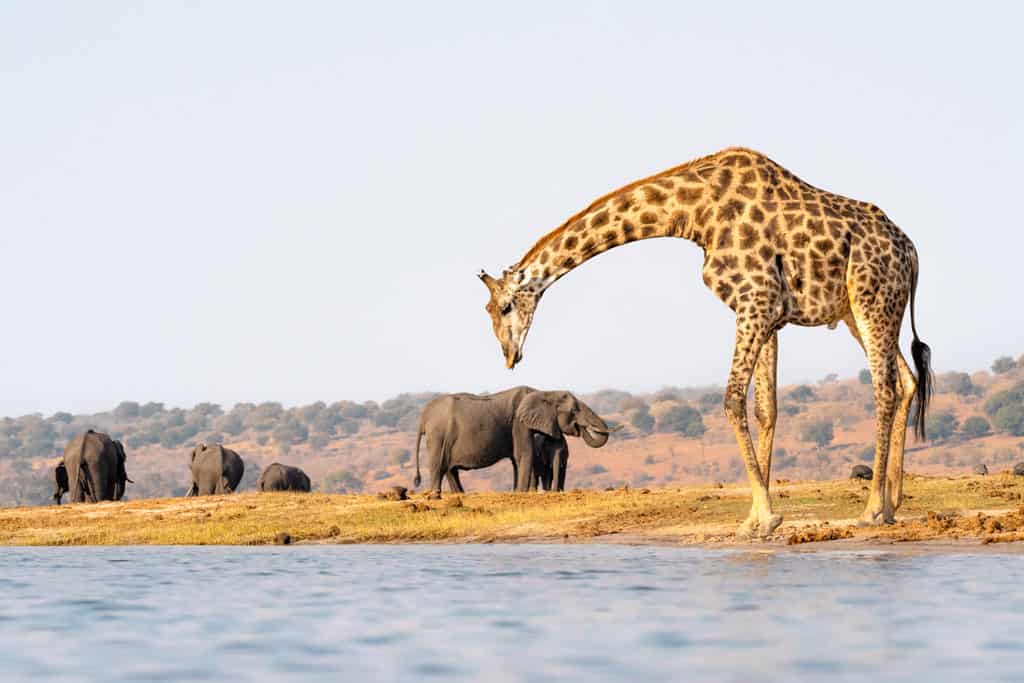
As a result most boat cruises are already well on their way back to the boat dock before the sun has set to beat the deadline, meaning for photographers you’re missing the best light.
However the Pangolin boats are a lot faster than the majority of other companies, so they can stay a lot deeper in the park after the sun has dipped below the horizon and still get back to the dock before the park closes.
Once you’ve captured some absolute bangers you’ll zoom back to the dock with a drink in hand and take the transfer back to the lodge.
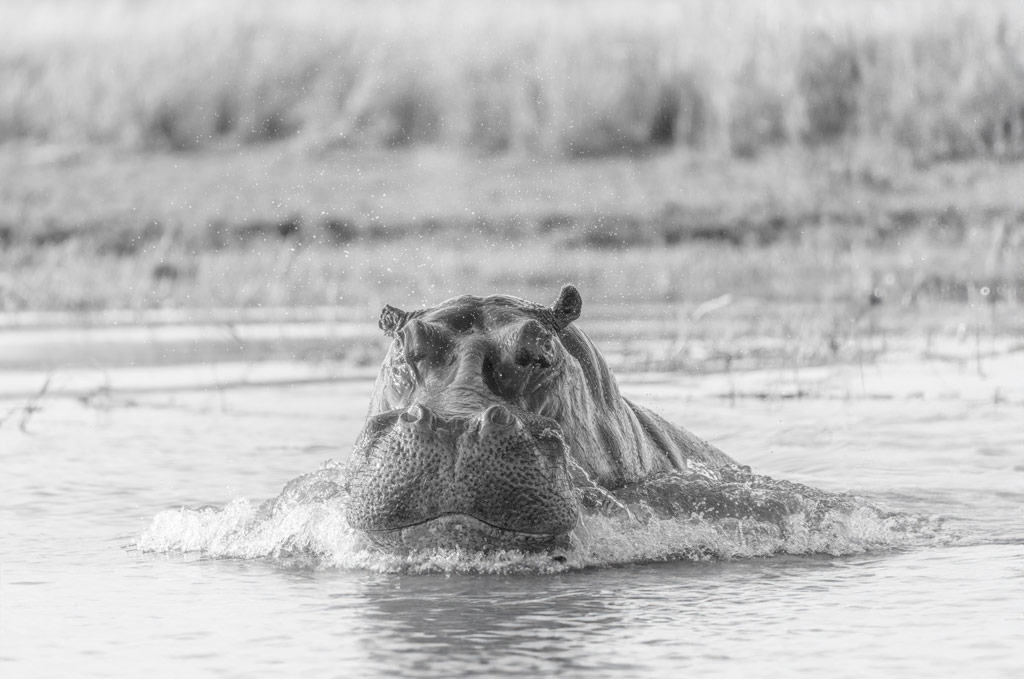
Back at the hotel around 6:30pm the fire is now roaring outside and cocktails are free flowing from the bar.
Grab yourself a glass of your favourite beverage and join your new friends and other likeminded people for a laugh and share stories of what kind of experiences you had out on safari.
At 7pm dinner is served outside, and you can pick a seat anywhere you’d like on the communal tables.
The chef comes out and talks about the meals their team have been busy whipping up, accompanied by a healthy dose of laughs and banter.
3 courses are served up, the waiters continue to bring the drinks out, and then the rest of the evening is free for you to do as you please.
Some retire early after a massive day while others head up to the bar to continue the socialising. The bar is open as long as there are guests wanting to have a drink, so there’s no bedtime to adhere to (although out of respect to the other guests they ask for noise to be kept to a minimum after 10pm.
Hit the sack and grab some sleep so you’re ready for another big adventure tomorrow!
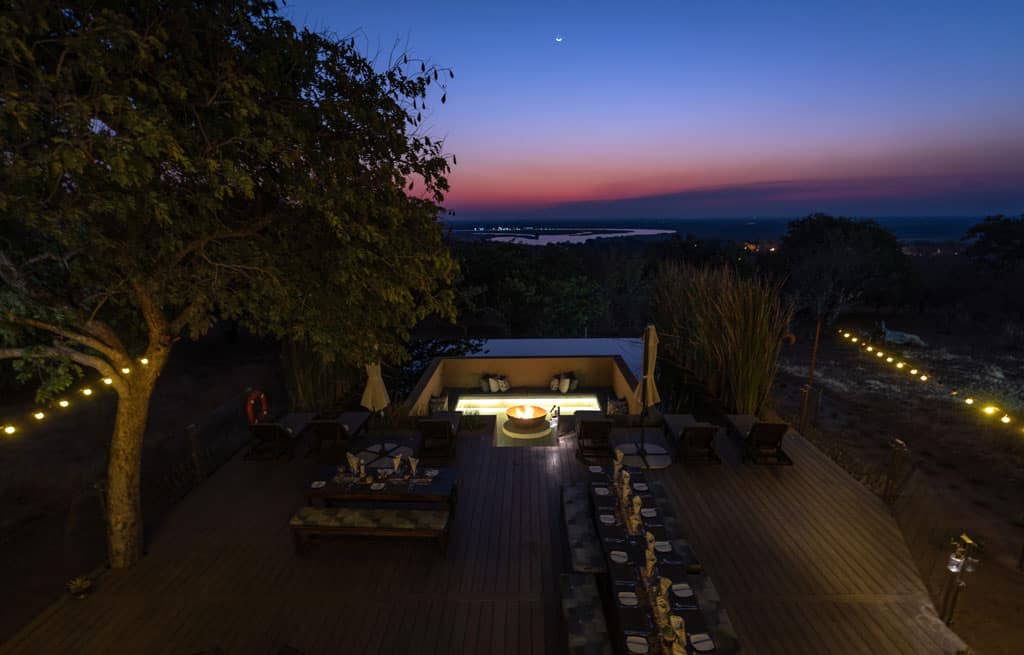
Our Review of Pangolin Photo Safaris – 9/10
We absolutely loved our time at Pangolin Photo Safaris in Botswana. After two months travelling Africa and going on more safaris than we can count, we can honestly say that our visit to Pangolin was our absolute highlight of the entire trip.
There were so many fantastic elements that made up this being our favourite place in Africa.
The guidance from the photo hosts, the beautiful accommodation, divine food, fantastic staff, unique photography boats and of course the wildlife – it all added up to making a superb experience even more exceptional.
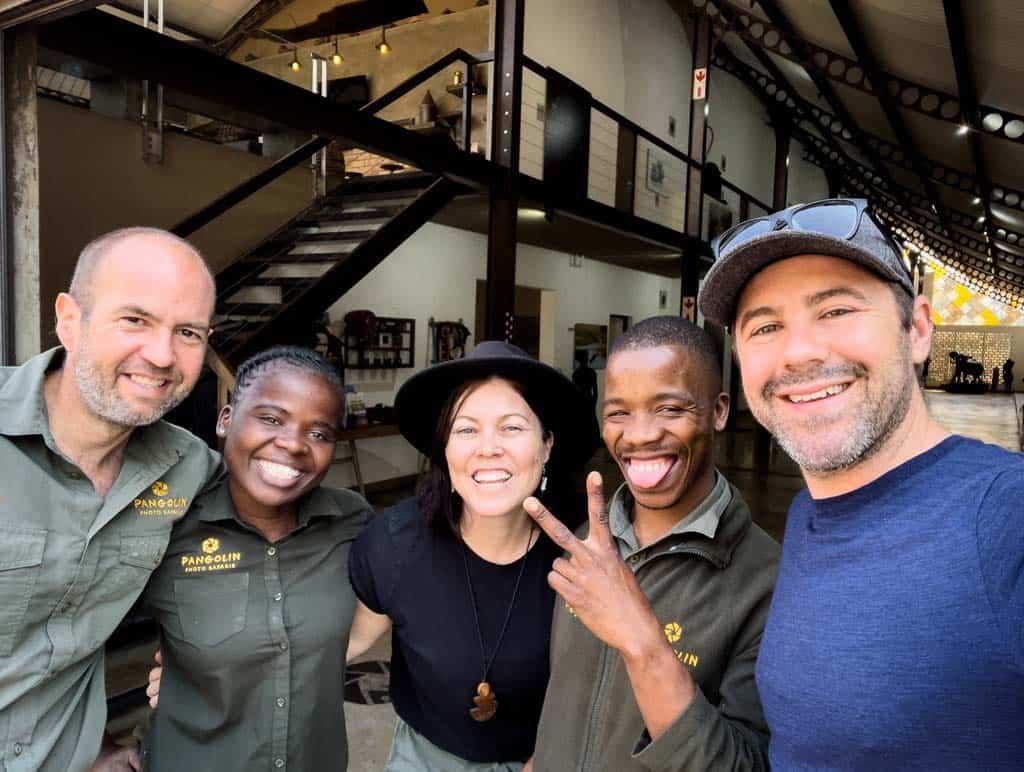
Thanks to Pangolin we came away with the best wildlife photos we have ever captured, and we know that if it wasn’t for the encouragement and mentorship from Guts, Janine, Jaco and Pusetso we wouldn’t have grown so much as photographers.
Their insightful ability to share their knowledge and push our creativity has reignited our love of photo art.
So was Pangolin perfect? Well, no, nothing is perfect.
For us the wifi was a little slow in the rooms (fine in the lounge), but this is Africa after all. What do you expect?
Really though, that’s pretty much the only thing we could fault it on.
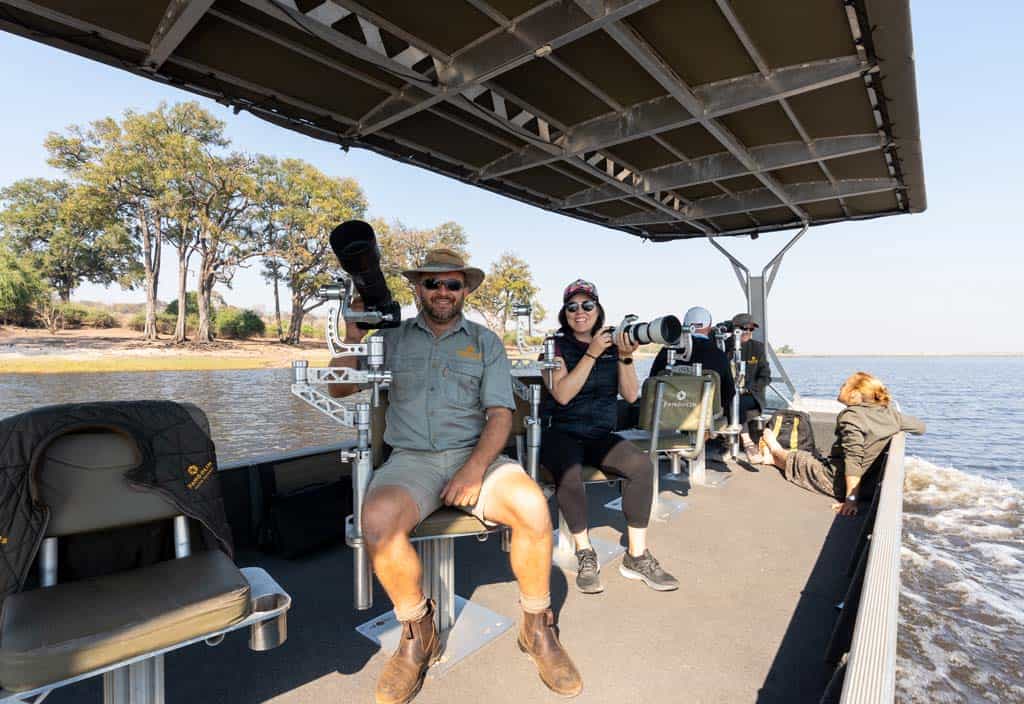
We enjoyed our time at Pangolin Photo Safaris so much that we’re already planning our return next year, and will be looking to run a NOMADasaurus Photography Tour here in Botswana in 2025!
What did you think of our Pangolin Photo Safaris review? Have you stayed here before or thinking about staying here in the future?
Drop a comment below with your thoughts, or drop us an email if you have any questions. Always happy to help.
Trust us – you’ll be hard pressed to find a better photo safari in Africa than with Pangolin.
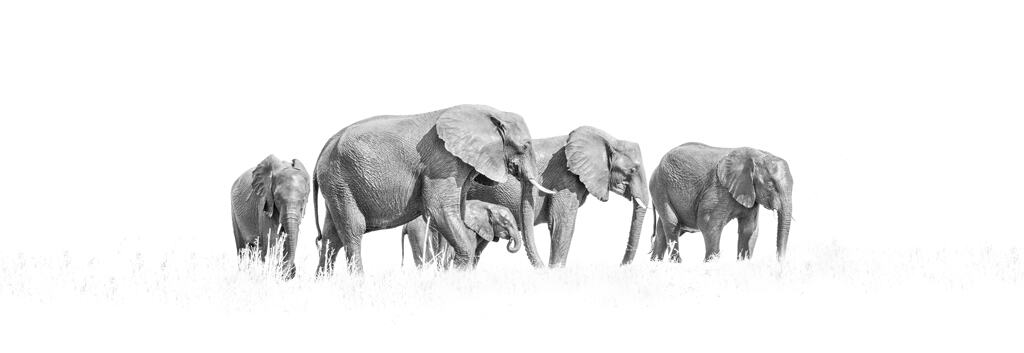
Pangolin Safaris is owned by Gerhard ‘Guts’ Swanepoel and Toby Jermyn, two friends with entirely different backgrounds. Guts is an award-winning wildlife photographer who is very hands on and loves nothing more than helping guests have the best African safaris imaginable while also improving their photographic abilities. Toby is a hobbyist photographer who thrives on growing Pangolin to be the best photo safari company in Africa. Combined they make a perfect partnership.
A photo safari is a one-day or multi-day experience in the African wilderness that is heavily geared towards people who like taking photos. These are often led by professional wildlife photographers who provide guidance and advice to guests, and excursions are structured around creating unique images with the best light.
A photo safari at Pangolin in Botswana ranges in price depending on the time of year you visit, how long you stay and where you would like to visit. At Pangolin Chobe Hotel in Kasane prices start at around $3,250 for 7 days of hosted photo safaris. This includes accommodation, all meals and drinks, two safaris a day and a dedicated photo host on each safari.
What is the best time of year to go on a safari in Botswana?
The best time to go on a safari in Botswana is in the winter months from June to September, when temperatures are at the coolest and less rain means animals congregate around watering holes and are easier to spot amongst the vegetation. But a Botswana safari can really be enjoyed at any time of year, as each month has its own unique wildlife experiences.
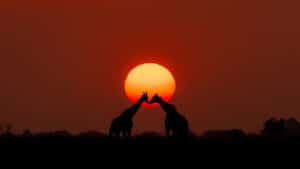
In our Pangolin Photo Safaris review we break down whether this lodge in Chobe, Botswana really is the best African safari for photographers.
- Comfortable luxury lodge
- Dedicated photography boats
- Award-winning photography guides
- Excellent food and drinks included
- The heavy photo focus might not be suitable for non-photographers
Alesha and Jarryd
Hi, We’re Alesha and Jarryd!
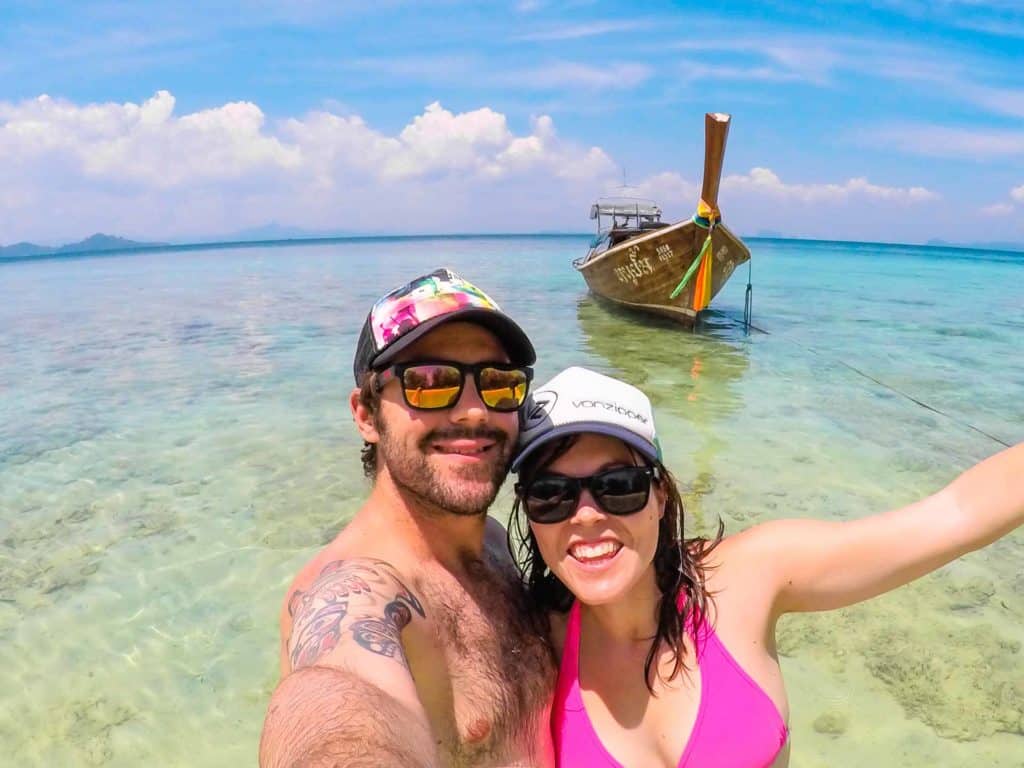
We’ve been traveling the world together since 2008, searching for the planet’s best destinations and adventures.
Love Travel?
Sign up for our free weekly newsletter for the best travel tips, ideas and deals!
We respect your privacy. Unsubscribe at any time.
READ MORE...
The Best Time To Visit Antarctica – Month By Month Breakdown
Siyam World Review – The Best 5-Star Resort in the Maldives
Sun Siyam Iru Fushi Review – 5-Star Luxury in the Maldives
Related Posts
Kayaking in doubtful sound – everything you need to know, lijiang – china’s disneyland (without the rides), happiness and simple pleasures, 5 days in cusco, the sacred valley and machu picchu, 4 thoughts on “pangolin photo safaris review – the best african safari for photographers”.
Would like to know where you folk got the camera mounts for your boat… Would to get one for my boat here in Alaska. Thank you!
Hi David, they are great aren’t they. Best to contact Pangolin Photo Safari Lodge. All the best
Great review, we spent a week between the Pangolin Hotel and under canvas in the Okavango in 2022. Echo everything you say. We spend time travelling every year but were drawn back to Pangolin and will be heading back again in the next year or two.
Nice review. You guys are fun! Hope to see again
Leave a comment Cancel reply
Save my name, email, and website in this browser for the next time I comment.

The 7 Best Photo Safari Destinations in Kenya and Packages

The best Kenya photo safari destinations set our travel soul’s ablaze. They linger, and we wish our cameras could capture not only their look but also their feel. But which are the best Kenya photographic safari destinations?
This article discusses the best places for a photo safari in Kenya . These are surreal African safari destinations that will take you and your camera through what is best described as the Holy Grail of photographic safaris in Africa.
The article also highlights our best-value African photo safari packages. And guess what? For as low as \$200, you could be off to a fun-loaded, African photo safari tour with our safari guide.
Our photo safari guides were born and raised in Kenya . They are the local experts of Kenya safaris tours , and they will have you coming back for more. Their sea-depth knowledge and expertise come unmatched, their passion a light that will guide your every step.
What’s more, they know Kenya , Uganda, and Tanzania like the palm of their hands. So, whether you wish to go on a Masai Mara photo safari, Uganda photo safari, or a Tanzania photo safari with us, expect extraordinaire. Expect awe-inspiring mountain, lakes, and parks with sceneries and more/
How to Book Your Safari with Us
At ajkenyasafaris.com, we are committed to helping you plan and book the best tour for you and your loved ones. We are a team of travel consultants who call Kenya home, and nothing makes us happier than seeing the broad smiles on your face after taking your on lifetime trip.
Book your safari now by sending us an email at [email protected] or [email protected] . You can also call or WhatsApp us at +254-748-258-880 .
Our Most Booked Kenya Safari Packages
Best photo safari destinations in kenya – the best african photo safaris packages.
Next, we share our best-rated Kenya safari packages and destinations that give you a chance to capture awe-inspiring photos and videos.
1. African Photo safari packages Destination #1. Masai Mara National Reserve
The Masai Mara has a soul of its own. A soul kept alive by its vibrant, completely dumbfounding flora and fauna. The park is one of the reasons the Great Rift Valley is so great. Its open grassland a magnificence your camera ought to capture.
A selfless giver, the park shares her immense beauty with you, with over 95 mammal species and 400 bird species to see. The sunny weather makes those Kenya wildlife photos even better, the sunrise and sunset an opportunity you would hate to miss.
For the wildlife and scenery, we have the park’s western escarpments with animals such as the Big Five, cheetahs, hyenas, elands, zebras, and impalas frequenting the place.
The Mara Triangle is as fascinating, a point the spectacular Mara River helps put across. To capture is the great wildebeest migration, an occasion graced by over a million wildebeests and an almost equal number of zebras and impalas.
The adrenaline-packed experience is levitating, those hippo-pounce-on-zebra shots a treasure you will thank us for. For aerial shots, we have the balloon ride, which is, in all honesty, the best way to experience the park.
Also, fun to capture are the Maasais in their cultural villages.
2. African Photo Safari Tours Destination #2. Amboseli National Park
Mount Kilimanjaro has to be the highlight of every Amboseli visit. The view from there is effortless, with the park offering Africa’s highest-peaking mountain in angles any photographer would kill for.
Not one for boring, the park makes sure to keep your photo safari in Kenya as interesting as possible by entertaining you to its five incredibly different habitats. To make sure your Kenya wildlife photos are wholesome is the park’s observational hill. The hill overlooking the swamp gives you a bird’s eye view of the park, giving you a go at those prize-worthy shots.
To capture is the large wildlife population, which heightens the park’s appeal to insane lengths. Elephants, leopards, cheetahs, giraffes, zebras, lions, buffaloes, over 600 bird species, and wild dogs being among the must-sees. The elephant population is the highest in the region, their number nearing the 900 mark.
An interaction with the local Maasai people is also on the cards.
3. Kenya Photography Safari Destination #3. Lake Nakuru National Park
Mix that flamingo pink with a light baby blue, and you get Lake Nakuru… And there, right by its shores, is Lake Nakuru National Park . The KWS managed park spreads its magnificence over 69.5 square miles of land, right at the floors of the Great Rift Valley. To prove worthy of the title ‘best photo safari destination in Kenya , is its seamless scenery encompassing picturesque marshy and woody grasslands.
There are over 56 different mammal species to photograph, some of which include the waterbucks, impalas, warthogs, Rothschild giraffes, white rhinos, the highly endangered black rhino, and the buffaloes. The nearby Lake Nakuru is a definite attraction largely for its popular flamingo-filled waters. Also to see are the great Makalia falls, known to draw in thousands of the 450 bird species in the park. To help with that perfect shot are the lion hill, baboon cliff, and out-of-Africa viewpoints.
4. Kenya Photography Safari Destination #4. Hell’s Gate National Park
To have inspired a movie as great as the Lion King is enough explanation as to why the Hell’s Gate National Park made it to our list of the best Kenya tourist attractions. The scenery here is bananas, and the ambiance is the park’s way of reminding us why she is more than just rock.
Your fingers will go numb at the camera flicking, for there’s not an inch of the 68.25km Squares you will not want to capture. With the scenery comes soaring cliffs, water emptied gorges, rock towers, scrubbed volcanoes, and geothermal streams. To top it off is a wide array of wildlife, which includes the hartebeest, buffalo, baboon, zebras, Thompson gazelles, reedbucks, antelopes, and over 100 bird species.
Also captured are the hot springs, Olkaria Geothermal Station, Mervyn Carnelly Hide, raptor nesting, and the tourist circuits. The photos you can take during game riding, rock climbing, biking, or hiking here.

5. Kenya Photography Safari Trips Destination #5. Diani Beach Kenya
There’s nothing quite like it. Nothing even close to the Diani magnificence. With as small as a 17 km shoreline, the beach, with its impeccable white-sandy beach, has managed to top the World Heritage list of ‘best beaches in Africa’ for 5 years in a row now.
Its waters are a bewitching blue, its overall scenery a thing that will have your camera running wild. Blending perfectly with the insane amounts of Diani blue is the lush green forest that is the very life of this beach.
A must-see is the coral mosque overlooking the beach, and the monkey sanctuary just next by. A boat ride will see you to the Shimba Hills, turtle information center, and Wasini Islands, which are equally taking.
Boat rides, and activities such as kitesurfing, deep-sea diving, and skydiving, will help you capture this beauty.
6. Best Photo Safari in Africa Destination #6. Lewa Downs
Lewa sits at the northern slopes of Mount Kenya with so much grace you’d be jealous. And there, from above it, brilliant views of the Samburu reserve, Mt. Ololokwe, and the great Ewaso Nyiro River.
A ridiculously gorgeous landscape coupled with a great wildlife variety is what makes this conservancy such a great Kenya photo safari destination . The Grevy’s Zebra population, for example, is the highest there is in the world, while the highly endangered black rhino population in the conservancy is the highest in East Africa. Other animals in the park include the sitatungas, big five, elephants, cheetahs, and the Oryx, among many others.
The conservancy’s open grasslands are remarkable, and to supplement them comes the gorgeous Lewa swamp, a stunning natural forest, and a view of the Mt. Kenya.
Also to see is the Ngare Ndare Forest, which is an amazing combination of lush greenery, a waterfall, river, and huge amounts of elephants.
7. Photographic Safaris in Africa Destination #7. Aberdare National Park
If sensational was a place, then it would definitely look like the Aberdares. The park’s scenery is dreamlike, its open moorland and forested ravines the very definition of perfect. A must-see are its outstanding waterfalls, river valleys, and ridges.
Calling the park home is an array of black rhinos, buffaloes, elephants, bushbucks, olive baboons, hyenas, leopards, warthogs, and the colobus monkeys. Rarities in the parks include the African wild cat, Giant forest hog, bongo, and the serval cat.
A visit up the Karuru Waterfalls will have you interact with the over 250 bird species in the park. Common sightings include the sunbird, eagles, plovers, and the Francolins
8. Photographic Safaris in Africa Destination #8. Ol Pejeta Conservancy
364 sq km in size, the Ol Pejeta is a wildlife conservancy cushioned between the slopes of the Mt. Kenya and those of the Aberdares. The conservancy’s beauty is boundless, its wildlife-to-area ratio beating that of any park or reserve in the country.
More than 1000 mammals call the conservancy home, as well as the big five and a large variety of the Grevy’s zebra, Jackson’s Hartebeest, cheetahs, and hyenas among many others.
A photo safari here gives you the chance to take home pictures of the only two remaining northern white rhinos in the world. Also to see are the highly endangered southern white rhinos and close to 80 white rhinos.
The Chimpanzee Sweetwater Sanctuary is also a delight. The sanctuary is a rescue for chimpanzees rescued from Central and West Africa.

Why a Photo Safari with the AJKenyaSafaris?
Why should you consider taking a photo safari to Kenya with AjKenyaSafaris.com? Here are some of the reasons to book with us.
1. We are affordable
We know how hard you work, and that is why we work even harder to bring you Kenya safaris tours that do not leave a dent in your pockets. Our safaris are as good for the students as they are for the tycoons. They fit right into your budget, no matter how ridiculous the amount might seem. Paychecks are not the thing with us, your comfort-ability, fun, and peace of mind are!
2. Our knowledgeable born and raised in Kenya safari guides
Your trip is as good as the guide accompanying you, and as you will later come to approve, our guides are the best in the market. Born and raised in Kenya, our guides could take you through the country blindfolded. Their knowledge is ocean floors deep, a thing only their hospitality matches. With them, you are assured of a great time. With them, you will feel right at home.
3. Our flexible, tailor-made safaris
Our safaris are tailored to meet your every need and expectation; all you have to do is communicate your concerns through phone or Skype calls. Some of our deals include; airport transfers, multilingual tour guides and transport costs to and from all the destinations. Additional arrangements can be made for those traveling from India with kids or as a group.
4. Our expertise
Think travel, think us. We are your safest bet yet, if what you are looking for is a fun, unforgettable experience. We go over and beyond, relying on our previous experiences, to make sure that your photo safari experience is like none other. Our highly positive online reviews are all the evidence you need. Mediocre isn’t ever a thing with us.
5. We are easily accessible
With us, you are a phone click away at planning the best photo safari of your life.

We are travel. We are local. We are your wildest safari expectations fulfilled. We show you Kenya better than anyone.
Itineraries
- 3 Days in Masai Mara
- 4 Days Masai Mara
- 18 days Kenya Family safari
- 18 Days Kenya Safari
- 16 days kenya safari
- Diani Beach
- Amboseli Park
- Booking Terms and Conditions
More guides
- Mombasa beach
- Kenya Safari
- Kenya Photo safari
- Kenya wildlife safari
- Kenya Adventure
- Kenya Migration Safari
- Honeymoon Packages
- Kenya, Kiambu County, Ruiru Town Greec Towers, Office Number D7 and D8
- +254-704-532-105
- [email protected]

21 Safari Photography Tips for Capturing Stunning Safari Photos
As a passionate ethical wildlife photographer and qualified safari guide, I've gathered some valuable safari photography tips to help you elevate your safari experience. Even if you've never held a professional camera, you can still capture the raw beauty of the wild with just a few tips and tricks.

Embarking on a safari in Africa is a magical journey, and capturing these moments through photography allows you to relive the excitement and share the beauty of the African wilderness with others. Photography on safari also encourages you to pay attention to other things that might have gone unnoticed. By actively seeking unique angles and observing moments to capture, you become more attuned to the intricate details of the wildlife and the breathtaking landscapes surrounding you. It helps you notice small details and appreciate nature even more.
Read my 21 safari photography tips for capturing stunning safari photos :
1. Immerse Yourself in the Experience

Each day on safari brings unique moments. Photography not only preserves memories but also encourages you to notice intricate details and appreciate nature. Seek unique angles and moments to capture, and let the beauty of the wild inspire you.
2. Be mindful of the Environment and Respect Wildlife

Patience is key to capturing natural behavior. Maintain a respectful distance, observe quietly, and avoid disrupting the animals' natural rhythm. Remember, you are a guest in their home and therefore this is one of the most important wildlife photography tips . Always respect local regulations, cultures, and environments. Your patience will be reflected in the authenticity of your safari photos.
If you approach an animal sighting, always be careful to not disturb the animal and minimize noise. How to show respect for the animals during wildlife photography?
- Maintain a respectful distance
- Approach animals indirectly
- Avoid positioning yourself upwind from the animal
- Keep your voice extremely low
- Switch your camera to silent mode to avoid startling wildlife
- Don’t use your flash
Whether you're a beginner or an experienced photographer, adhering to a code of conduct ensures the well-being of wildlife, contributes to conservation efforts, and ensures a more authentic safari experience.
3. Utilize Your Guide's Knowledge

Collaborate with your local field guide who possesses invaluable knowledge of animal habits, territories, and behavior. Communicate your photography preferences, and leverage their expertise to position yourself for the perfect shot. Guides can anticipate lighting conditions and animal movements, enhancing your photography experience. For example, positioning the vehicle in a way that the sun is in your back instead of in your lens to have nice lighting on the animal or landscape you want to capture. However, on some occasions, it’s also great to photograph towards the sun to create a nice rim light around the animal.
As a nature and wildlife enthusiast, I encourage you to ask your safari guide lots of questions to learn more about the behavior and habitats of the wildlife you encounter. This knowledge helps you anticipate movements and position yourself for the perfect shot.
4. Pay Attention to Composition

Crafting attractive compositions on safari is key to impactful photography. Be creative. Explore angles, perspectives, and framing techniques to create visually appealing images.
Rule of Thirds

Apply the rule of thirds by placing your subject off-center for dynamic images. Utilize paths, tracks, or natural elements like bushes, rocks or trees for depth and scale. These composition tips elevate your photos without requiring advanced technical skills. Most cameras also have a grid that helps you to better frame your subject. Also, always think of leaving an empty space in the direction the wildlife is heading or the direction the animal is looking. In some occasions, it's also a good idea to put your subject in the middle.
Shoot from a low angle

Shooting from a low angle (on the ground) can also make your composition more attractive. Safari in a game drive vehicle mostly doesn’t allow you to get out of the car to photograph wildlife, but on some occasions it might be possible. Another occasion could be if you’re on a walking safari . The advantage of getting low on the ground is that you are able to change the background in your scene. Being on eye-level with your animal also establishes a better connection.
Please consider the ethics of your framing – prioritize the well-being of the wildlife you encounter.
5. Show animals in their natural environment

Capturing close-ups of the Big Five is often popular among safari tourists, and wildlife photographers, but don’t forget the beautiful environment these animals live in.
Their natural environment is equally important as they form that bigger picture together. And it’s those areas that we need to protect to save wildlife from extinction.

Every part of the ecosystem is dependent on each other. That’s the beauty of nature, and it allows the viewer to understand where the animal lives and flourishes. As a conservation photographer, I also love to showcase the wildlife’s home that we need to protect.
6. Master the Exposure Triangle

Light is a fundamental element in photography, and understanding the exposure triangle is a fundamental part to master the art of safari photography. Understanding aperture , shutter speed , and ISO allows you to adapt to various lighting conditions. These three factors work together to determine how bright or dark your photos will turn out, as well as the level of sharpness and graininess.

Adjust aperture for light control and depth of field , use shutter speed to freeze or create motion of animals, and set ISO for sensitivity (lower during the day, higher when it’s getting darker).
7. Use Shutter Priority Mode for moving wildlife

If you’re used to photographing in automatic mode, it can feel like a puzzle if you want to photograph wildlife manually. Therefore, my best photography tip is to set your camera on shutter priority mode (S). It means that you only have to think about the shutter speed and the camera does the rest like your ISO and Aperture (semi)automatically.

This technique ensures sharp and clear images, especially when photographing animals in motion on your safari. Use a fast shutter speed to freeze fast-moving wildlife action, and try to practice with various settings between 1/250th of a second up to 1/2500s. Additionally, fast shutter speeds can help prevent camera shake, particularly when shooting handheld.

A rule of thumb: choose a minimum shutter speed based on the focal length you are shooting. An example: I often capture wildlife with a focal length of 400 mm, meaning my minimum shutter is 1/400s. If you are in a moving safari vehicle, boat or hot air balloon, and/or the animal you want to photograph is moving fast, then use a minimum of 2 times the focal length. So, shooting at 400 mm would mean a shutter speed of 1/800s. To capture moving birds in flight , you might want to practice choosing shutter speeds to up to 1/2000s.
8. Choose AI Servo (AF Continuous) Mode for moving wildlife

AI Servo is the best mode to capture wildlife that is moving, to automatically keep track of and stay focussed on the moving animal.
9. Practice with Aperture Priority Mode for a ‘blurry’ background

Aperture Priority in safari photography allows you to set the desired aperture, controlling the depth of field in your wildlife shots. In situations where you want a blurred background to emphasize the subject, or conversely, a broader depth of field to capture more details.

Aperture Priority mode gives you this creative control. For example, when you want a close-up of a lion or a colorful bird with a blurred background effect, like the Lilac-breasted Roller in the above image. The more zoom and the lower the aperture number, the more you are able to eliminate the background in your image and create that nice compression.

On the other hand, if you want to photograph a group of animals like a herd of elephants, I recommend choosing an aperture of f/8 to get the whole group of animals in focus (and not only one).
10. Try Burst Shooting Mode in Safari Photography

Shooting in burst mode is an important wildlife photography tip for safari enthusiasts, catering to both beginners and advanced photographers. Wildlife is unpredictable, and animals often move swiftly. Burst mode allows you to capture a series of rapid shots, increasing the chances of freezing dynamic moments, ensuring you don't miss critical actions or spontaneous behaviors.
Beginners benefit by having a safety net, capturing shots even if timing is a challenge. For advanced photographers, burst mode offers creative opportunities to select the perfect frame from a sequence.
11. Focus on the eyes of an animal

Always focus on the eyes of the animals ; that’s the cardinal rule of wildlife photography! This golden tip elevates your shots, creating a connection between the viewer and the wildlife subject. Instead of hastily snapping numerous wildlife images, wait for the moment when the animal turns its gaze towards you.
Focusing on the eyes provides viewers with a unique perspective. It creates a visual connection, as if the animals are looking directly through the photograph at the audience. This transformative approach adds depth and emotion, making your wildlife images more memorable and resonant, especially when capturing close-up shots of animals. This technique enhances the details in the eyes, showcasing the intricacies and expressions that might be missed in broader shots.
Aim for a shutter speed between 1/250s to 1/2500s, depending on the animal's movement, and an aperture between f/2 to f/6, depending on your lens. These settings ensure both eyes are in focus, capturing the essence of the wildlife subject.
Remember, the eyes are the windows to the soul , even in the animal kingdom. So when focusing on the animal’s eyes, you can create truly remarkable and memorable wildlife photographs.
12. Shoot in RAW if you can

Shooting in RAW format on a safari offers several advantages.
RAW images provide a higher dynamic range compared to JPEG, capturing more details in both shadows and highlights. This is crucial in the diverse and often challenging lighting conditions encountered during a safari.
RAW files contain more image data , allowing for extensive post-processing without compromising quality. This flexibility is valuable when adjusting exposure, contrast, color balance, and other elements during the editing process (I usually edit my wildlife images in Lightroom).
Shooting in RAW preserves the original quality and detail captured by the camera's sensor. This is especially important in wildlife photography, where preserving the authenticity of the scene is crucial.
13. Timing is Everything: The Golden Hour and Beyond

The golden hours of sunrise and sunset conveniently align with the typical timing of game drives during a safari when the animals are most active. The warm, soft light enhances the colors and textures of the African landscape, creating a captivating backdrop for your photos.
The advantage of photographing during the Golden Hour , sometimes called ‘Magical Hour’, is that the soft golden light reduces harsh shadows and creates a golden glow. Patience during these hours rewards you with captivating glimpses into the animals' daily lives.
14. Equip Yourself Wisely with the right camera gear

Ensure you have the right camera equipment for safari photography.
Bring a DSLR (Digital Single Lens Reflex) camera and zoom lenses with 200-600 mm range or a quality compact camera for versatile quality wildlife photos. Safari photography on a smartphone is not the best option to photograph wildlife, but it is, of course, a great option to create short videos, stories, and reels.
Zoom lenses for safari photography
I highly recommend a long lens with a minimum of 200 mm zoom to capture distant wildlife. A zoom lens allows you to effortlessly switch between photographing animals from a distance without disturbing them and capturing intricate details of flora and fauna up close.
More ideally, a zoom lens with a focal length of 300 mm+ is great for capturing wild animals or birds. If you’re using a full-frame camera, I would suggest a 400 mm zoom lens and if you are a keen birder a 600 mm long lens is perfect for bird photography on safari.
Wide-angle lens
Apart from zoom lenses, I always carry a wide-angle lens (for example 16-35 mm), great for capturing the beautiful African landscapes and its animals or magical sunsets.
Essential accessories
Don't forget essential accessories, such as memory cards, extra batteries, cleaning wipes, a charger, a camera bag, and a rain cover. Consider a beanbag for stability.
Hire photography gear for safari
Not having the right camera gear ? Nowadays, the quality of compact cameras is pretty good as well, and it’s also possible to hire photography gear .
15. Consider bringing a tripod and/or beanbag
Bringing a tripod and/or beanbag on safari is a crucial photography tip for the following reasons:
- Stability for Clear Shots: A tripod or beanbag provides stability, reducing camera shake and ensuring clear shots, especially when using longer lenses.
- Flexibility in Composition: Both tripods and beanbags allow photographers to compose shots with precision. A tripod is ideal for setting up shots in a fixed position, while a beanbag provides a more flexible option, allowing quick adjustments and movements.
- Support for Heavy Equipment: Professional camera gear, including telephoto lenses, can be heavy. A tripod and/or beanbag offers robust support for heavier equipment, preventing fatigue during extended periods of shooting.
- Long Exposure and Low Light Conditions: In low light or during sunrise/sunset safaris, a tripod is essential for capturing long-exposure shots without introducing motion blur. A tripod is also great to practice with star photography and photographing the milky way when you're back at the safari lodge .
- Silent Shooting with Beanbags: Beanbags are preferred for wildlife photography as they provide a stable base without the noise associated with adjusting tripod legs. This is especially important to avoid disturbing animals in their natural habitat.
- Versatility in Safari Vehicles: Safari vehicles often have limited space, and tripods may be cumbersome. Beanbags are more versatile, easily adapting to the contours of the vehicle and providing a stable platform for photography.
16. Make a back-up of your images on safari

I always back up my images while traveling. When my memory card is full, I back up my images onto an external hard drive. That is mostly enough, but for people who want to travel longer, I highly recommend backing up to a second external hard drive (kept in different locations). Hard drives I use are Lacie Rugged, Samsung, and Seagate.
If you are using your phone only, I also recommend backing up your images in the cloud, for example iCloud, Dropbox, Google Drive, Google Photos, you name it.
17. Keep it Simple and Be Patient

Wildlife photography requires patience . Allow yourself time to observe and wait for the right moment, focusing on mastering basic techniques. Don't be overwhelmed by settings; simplicity often reveals the raw beauty of wildlife.
18. Edit your photos

Editing your safari photos is not essential, but if you want to step up your safari photography game, I highly recommend learning how to edit your wildlife images in, for example Adobe Lightroom (for both desktop and smartphone) and Photoshop . Especially if you are planning to print your photos, post-processing is an important step.
Get in touch for a private workshop on how to edit your safari photos or join me on a photo safari where I will share editing tips to improve your wildlife photography.
19. Know Your Camera

If you're a beginner photographer, all the settings on your camera can be a bit overwhelming. When I first started photography, my camera was a puzzle to me. I kept using the automatic mode until I learned the basics of photography during a volunteer program in South Africa . Having two game drives per day in Thanda Game Reserve in KwaZulu-Natal was the perfect way to start practicing shooting in manual mode and learn more about the best settings for safari. I highly recommend to start learning more about your camera and camera settings before you go on safari. Go through your camera manual to find the buttons and settings of some of the technical photography tips I mentioned in this article.
20. Embrace Learning and Growth

Whether you're a beginner or experienced photographer, nurture your interest in learning photography. Books about photography, online photography courses, workshops and guided photo safari tours with photography experts offer opportunities to enhance your safari photography skills; including my small group photo safaris . To master a new skill, learning by doing is often the most effective approach to get to know your camera better. So please remember, anyone can learn photography, and the wonders of a safari in Africa can ignite your passion for capturing the mesmerizing beauty of our planet's wildlife.
21. Join me on a photo safari to Africa

Do you want to improve your photography skills on safari and travel with like-minded travelers? Join me on a small group safari to Africa . As a professional wildlife photographer, I can help to improve your photography skills on safari by sharing hands-on experience and valuable tips. Instead of rushing to tick off the Big Five, we will spend our time carefully during the beautiful golden hours around sunrise (morning game drive) and sunset (afternoon game drive).
It doesn't matter if you're a beginner, intermediate, or professional photographer. Having an interest in photography and and being prepared to learn are the most important aspects.
Safari Photography Tips to take the best photos on safari
These tips, coupled with the expertise on my photographic safari trip to Africa , will undoubtedly enhance your safari photography journey. Capture the essence of Africa's breathtaking wildlife and create lasting memories with every click of your camera (or even your smartphone).

Protect Your Trip »
12 once-in-a-lifetime african safari vacations.
Cross this must-do activity off your bucket list.
Top African Safari Vacations

Courtesy of Expert Africa
Safari vacations in Africa are just as diverse as the continent itself, though these types of trips typically require a large sum of money. Whether you want to spend a few days gorilla trekking in Uganda or a couple weeks spotting the "big five" – lions, leopards, African elephants, rhinos and Cape buffalos – in South Africa, you'll find an array of experiences to suit your needs. To help you narrow down your options, U.S. News compiled a list of 12 can't-miss African safari tours. Read on to find your once-in-a-lifetime trip.
Note: Some of the African countries visited by tours in this article may require travelers to get an entry visa and certain vaccinations (particularly yellow fever) in order to visit. Jump to the list of visa and vaccination requirements by country for more information.
&Beyond: Kings of the Jungle Tour

Courtesy of &Beyond
Length: 10 days Starting price: $14,265
Visitors who don't want to sacrifice creature comforts while on safari will appreciate &Beyond's diverse offerings across numerous African destinations. For a classic safari, consider the tour operator's 10-day Kings of the Jungle tour, where travelers will see breathtaking natural wonders like Ngorongo Crater and the Maasai Mara savannah with its elephants and cheetahs. Arguably, the highlight of this journey is its four-night stay at Tanzania's Serengeti National Park .
After watching animals like wildebeest and zebras partake in the great migration while also spotting lions, giraffes and more, vacationers retreat to high-end tents and lodges with private bathrooms. Prices start at $14,265 per person, but are higher around the peak season of June to October.
Wild Rwanda Safaris: Bwindi Gorilla Safari

Courtesy of Wild Rwanda Safaris
Length: Three days Starting price: $1,450 for two people with lowest-cost lodging
Adventurous travelers sticking to a more conservative budget should consider Wild Rwanda Safaris' Bwindi Gorilla Safari. The three-day package features a full day in southwestern Uganda's Bwindi Impenetrable National Park (a haven for gorillas) and adjacent Batwa Pygmy communities. Wild Rwanda Safaris offers a choice of midrange, luxury and super luxury accommodations, allowing you to keep costs down if necessary.
The company's packages include the $700 permit required to visit the gorilla park. The round-trip journey by safari vehicle to and from Kigali, Rwanda, as well as English-speaking guides are covered in all rates. The tour can begin from Kampala, Uganda, as well, although you'll spend a lot longer on the road to the park. Contact the safari company for pricing information.
Nomad Tanzania: Southern Tanzania

Courtesy of nomad-tanzania.com
Length: Eight days Starting price: $6,055
Sign up for Nomad Tanzania's Southern Tanzania safari and you're bound to get an up-close look at Tanzania's diverse wildlife. Offering eight days of activities, including game drives and boat trips in Ruaha National Park and Nyerere National Park, this safari gives you prime opportunities to spot lions, cheetahs, leopards and elephants, among other species.
You'll get around the parks with the company's custom-built vehicles, ideal for catching a glimpse of that spectacular wildlife. What's more, the package rates include lodging at the company's campsites; select meals; and the short, scenic flights to and from Dar es Salaam as well as to the parks. Prices are only available upon contacting the company; they vary depending on the time of year, and the tour isn't offered in April and May.
Micato Safaris: The Micato Grand Safari

Courtesy of Micato Safaris
Length: 15 days Starting price: $29,500
If you want to explore multiple destinations while on safari with plenty of comfort (but a price tag to match), book the 15-day Micato Grand Safari. This extraordinarily thorough itinerary from Micato Safaris starts with a two-day visit to bustling Nairobi, Kenya, before continuing to the Lewa Wildlife Conservancy, Maasai Mara National Reserve, and the Amboseli and Serengeti national parks. You'll be treated to wildlife-viewing excursions that just might check every animal off your bucket list, from lions and cheetahs to rhinos, hippos and more. During your trip, you'll get to see Mount Kilimanjaro as zebras, gazelles and more roam in the foreground.
The package costs at least $29,500 per person (based on double occupancy rates) and includes activities like a sunrise hot air balloon ride and a camel tour led by members of the Samburu tribe. Lodging at upscale properties like the Serengeti's Four Seasons Safari Lodge and glamorous safari camps with en suite bathrooms is also included. The company also offers various extensions allowing you to explore other parts of Africa, from the island paradise of Zanzibar to the deserts of Namibia.
Rothschild Safaris: Essence of Tanzania

Courtesy of Rothschild Safaris
Length: Nine days Starting price: Contact company for pricing details.
If your ideal safari vacation consists of customizing your trip from start to finish, consider an outing with Rothschild Safaris. The company offers itineraries in locales like Zambia and Ethiopia, but if you're hoping to catch a glimpse of the "big five" animals, the Essence of Tanzania safari is a good bet.
This nine-day experience, which embarks from Arusha, Tanzania, and returns there by plane, includes game-viewing drives spotting animals like ostriches, zebras and impalas in Tarangire National Park, plus accommodations like luxurious tents and farmhouse lodges. You'll also have the opportunity to go on a nighttime safari to spot nocturnal wildlife. If you time your safari right, you may also be able to see the famed wildebeest migration, when more than a million animals move between the Maasai Mara Reserve in Kenya and Tanzania's Serengeti plains.
Tips on Trips and Expert Picks Newsletter
Travel tips, vacation ideas and more to make your next vacation stellar.
Sign up to receive the latest updates from U.S News & World Report and our trusted partners and sponsors. By clicking submit, you are agreeing to our Terms and Conditions & Privacy Policy .
Lion World Travel: The Best of Cape Town & Botswana

Courtesy of Lion World Travel
Length: 10 days Starting price: $4,899
As the trip name implies, the 10-day Best of Cape Town & Botswana vacation package from longtime safari operator Lion World Travel combines a few days of sightseeing in Cape Town, South Africa – where you'll visit the iconic Table Mountain and the Cape Peninsula – with a classic safari in Botswana. During the latter half of the itinerary, visitors will explore Botswana's Okavango Delta, home to cheetahs, crocodiles, hippos and more; you'll have the option of a helicopter flight to spot wildlife from above for an extra fee. Then, you'll visit Chobe National Park, which is believed to have the world's largest African elephant population.
Prices start at $4,899 per person based on double occupancy. Rates cover game drives; many of your meals; and stays in a four-star hotel in Cape Town as well as luxury tents in Botswana. You'll need to pay an extra charge for the flights within the tour (from Cape Town to Botswana and from Botswana to Johannesburg ).
Discover Africa: Botswana – Chobe, Okavango & Makgadikgadi

Matthys Van Aswegen | Courtesy of Discover Africa
Length: Nine days Starting price: $4,800
For an inside-out trip through the natural wonders of Botswana, Discover Africa's nine-day trip through the country's sprawling game reserves and national parks is a formidable option. You'll start out at a riverside lodge on the Chobe River – a great location for spotting elephants – before moving on to the marshy Okavango Delta, a wildlife-rich area where you can spot a huge range of animals like leopards, rhinos, hippos and more. The safari ends at the Makgadikgadi Pans National Park, a good place to admire wildlife such as zebras and buffalo on the savannah as well as the ethereal white salt pans from a former lake.
You'll stay in upscale lodges and camps within close reach of the wilderness. All meals and transport along the tour are included in the price tag (which starts at $4,800 per person and varies by time of year), but international flights to get to Botswana are excluded.
Wild Wings Safaris: 8 Day Battlefields, Bush & Beach Safari

Onne Vegter | Courtesy of Wild Wings Safaris
Length: Eight days Starting price: About $4,160 for self-drive option
If you're looking to have a broader experience that mixes in some local history and beach time, consider Wild Wings Safaris' eight-day Battlefields, Bush & Beach Safari. With an itinerary focused on the east of South Africa, you'll start off visiting some of the country's historic sites from the Boer wars, including locations where local Zulu warriors defeated the British, before moving on to Phinda Private Game Reserve. This park doesn't allow day visitors, so you should be able to look out for the "big five" without too many crowds.
The tour wraps up at Thonga Beach Lodge, where you can snorkel or scuba dive near coral reefs in the Indian Ocean. Kayaking and walks through coastal forests are other activities on offer here. As far as safaris go, this one is a somewhat more affordable option, starting at about $4,160 per person with all meals included as well as a rental car; for the cheapest price, you will need to drive yourself between the destinations, but it's possible to pay an additional fee for a driver to guide you instead.
Cuckoo Safaris: 4-Day Discover Victoria Falls, Chobe National Park and Hwange National Park

Getty Images
Length: Four days Starting price: $1,015
This tour company kicks off many of its tours from the majestic Victoria Falls in Zimbabwe, with a host of safaris that range from three to nine days, across Zimbabwe, Zambia and Botswana, including some family-friendly choices. For an affordable option, consider the four-day Discover Victoria Falls, Chobe National Park and Hwange National Park safari. It will take you on two full-day tours to Chobe National Park in Botswana and Hwange, Zimbabwe's largest national park, where you should keep your eyes peeled for lions, elephants and more, while also visiting rural villages. This safari includes a wildlife spotting boat cruise on the Chobe River as well.
The price starts at $1,015 per person, which includes the tours plus breakfast, lunch and well-rated lodging in Victoria Falls. Travelers will need to pay for their own travel to Victoria Falls. Dinners aren't included, although you'll be staying in the town of Victoria Falls, with access to restaurants.
Compass Odyssey: 8-Day Namibia Wildlife Safari

Courtesy of Compass Odyssey
Length: Eight days Starting price: Contact company for pricing details.
Explore the savannah and deserts of southwest Africa with Compass Odyssey's eight-day Namibia Wildlife Safari. You'll visit a community-based conservation area in Damaraland – known for its desert-adapted elephants, oryx, giraffes and other wildlife – while staying in the rustic-chic Doro Nawas Camp. Travelers will also spend two days in Etosha National Park, seeking wildlife like giraffes, zebras and elephants at the park's bustling waterholes by day and embarking on an evening game drive with a knowledgeable ranger as well.
The company provides prices on request. The tour includes most meals and all park entry fees, but not flights or the optional "Cheetah Walk." Compass Odyssey allows the tour to be customized on request.
Expert Africa: Big Cat Fly-in Safari

Length: Nine days Starting price: $5,010
Expert Africa offers safaris and other tours in a host of African countries. For a relatively classic tour, consider the Big Cat Fly-in Safari. It offers two different looks at Kenya's stellar wildlife. Firstly, you'll fly north for four nights at the Lewa Wildlife Conservancy, a sanctuary that channels all its profits into protecting the wildlife in its roughly 100-square-mile reserve. You'll stay in classic tented rooms and enjoy three-course dinners, with the option of going on horse- or camelback safaris for an extra fee.
Despite the tour name, you're most likely to see elephants, giraffes, zebras and rhinos here. In fact, you're more likely to see big cats at the tour's second stop, when you fly south to the Maasai Mara National Reserve. The tour company reports a high success rate for travelers spotting lions (and a decent chance of spotting leopards or cheetahs too). Here, you'll spend four days in upscale tents and have the option of soaring over the plains in a hot air balloon. The tour starts at $5,010 for eight nights, with all transport within Kenya included – although Expert Africa customizes most of its tours, so you can likely adjust your safari to your preferences.
Volcanoes Safari: 7 Day Gorilla and Chimpanzee Safari

Courtesy of Volcanoes Safaris
Length: Seven days Starting price: $8,430
If you're looking to spot some great apes, Volcanoes Safari focuses exclusively on primate tours within Rwanda and Uganda – and with partnerships with the Jane Goodall Institute and Dian Fossey Gorilla Fund, they're responsible too. One of its signature tours, this seven-day itinerary kicks off in Uganda, taking travelers to the famed Kyambura Gorge to spot chimpanzee communities, as well as on a trek through the Bwindi Forest to look for gorillas.
But it's not all about monkeys: The tour also includes chances to see lions on the Ugandan plains and to meet locals engaging in cooperative work raising bees and roasting coffee. Along the way, guests stay in stylish lodges with views of Uganda's mountains and forests. The tour starts at $8,430 per person based on double occupancy in the low season, with all meals included.
Vaccination and visa requirements for African countries
Some popular safari destinations may require you to have received certain vaccinations in order to enter the country as a tourist. Although COVID-19 vaccination requirements no longer exist, it's not uncommon for countries to require you to be vaccinated against illnesses such as yellow fever before departing on your trip. Be sure to bring proof of vaccinations with you. If you are transiting through another country en route to your safari tour, you must check that you also meet immunization requirements for the stopover location.
For many destinations, there are a number of other vaccinations that aren't mandatory but are still recommended, such as for cholera or rabies. Consult with a doctor and ensure you're up to date and fully protected before you travel. In addition, many safari locations are prone to malaria; you should consult with your doctor about potentially bringing anti-malaria medication on your trip.
Safari countries have varying visa requirements for travelers from the U.S. – these are detailed below. Depending on your itinerary, you may need a single- or multiple-entry visa, and some visas require you to apply in advance of traveling and/or have a certain number of blank pages in your passport. Regardless of destination, your passport should be valid for at least six months before you leave for your trip.
Here are the vaccine and visa requirements for major safari destinations as of July 2024:
Botswana: If you have recently visited or transited through a country where yellow fever is common, you will need to be vaccinated against this illness. This does not include the U.S. but does include a number of countries in Africa as well as Central and South America. Consult the Centers for Disease Control and Prevention's list of countries with risk of yellow fever transmission, including Kenya and Uganda.
U.S. citizens and nationals can stay in Botswana for 90 days per year without a visa.
Kenya: Kenya is a country where you'll be at risk of yellow fever transmission; it also requires those traveling from other places where yellow fever is endemic to be vaccinated against it. The CDC recommends that you protect yourself against yellow fever before your trip here.
Americans need an eVisa to enter Kenya. You should apply online at the eVisa government website no less than two weeks before your trip, as visas are not available upon arrival in Kenya. See more on the U.S. Department of State's website .
Namibia: Those traveling from a country where yellow fever is common need to be vaccinated against it. No visa is required as long as you're staying for 90 days or less per year.
Rwanda: If you're coming from a country where yellow fever is endemic, a yellow fever vaccination is required before departure.
U.S. citizens and nationals can be issued a 30-day visitor visa on arrival in Rwanda or through the Rwandan Embassy in Washington, D.C. A single-entry visa costs $50 for a single entry or $70 for multiple entries, and it's recommended you bring sufficient cash in U.S. dollars to pay for this (although credit card payment may be accepted at Kigali International Airport). Consult the State Department website for more information.
South Africa: A yellow fever vaccination is required if you're traveling from a country with a risk of transmission, including transits of 12 hours or longer in such countries. No visa is required for stays of 90 days or less.
Tanzania: Yellow fever vaccines are mandatory if you're traveling from a location where yellow fever is present – including if you spend more than 12 hours in transit in such a country. The vaccine should be administered 10 days or more before arrival
Visas are required for tourism in Tanzania. You can apply for a single-entry, 90-day visa online for $50 or a multiple-entry, one-year visa for $100. Be sure to print a copy of the approval (called a "grant notice") to bring with you. The processing period takes up to 10 days. You can also obtain a single-entry visa on arrival in most cases, although the Tanzanian government still recommends the advance online application. Find more Tanzanian visa information on the State Department website .
Uganda: Like Kenya, Uganda is a country with risk of yellow fever transmission. All visitors must show proof of vaccination against yellow fever to enter Uganda, regardless of where you're traveling from.
American visitors to Uganda must apply online for an electronic visa before departure. The processing time is around seven days, but the Ugandan government recommends applying 30 days before you travel; arriving in Uganda without completing this process could result in your detainment. A single-entry visa costs $50. Visit the State Department website to learn more.
Zambia: Yellow fever vaccines are only required if you're coming from an area considered at risk, including long transits (12 hours or more) through such countries. Visas are not required for U.S. citizens visiting Zambia. Check the State Department website for more details.
Zimbabwe: As with other countries on this list, visitors from countries with yellow fever outbreaks require a vaccine against this illness. This includes long transit stopovers of 12 hours or more.
U.S. visitors can obtain a 30-day, single-entry visa upon arrival in Zimbabwe for $30. If you're taking a tour that requires you to leave and reenter Zimbabwe, be sure to get a double-entry visa for $45. You can learn more from the State Department website .
You might also be interested in:
- The Best Zoos in the U.S.
- The Best Glamping Resorts in the U.S.
- The Best Treehouse Hotels in the World
- The Best Carry-on Luggage
- The Best Travel Insurance
The 21 Most Beautiful Waterfalls

Tags: Travel , Vacation Ideas
World's Best Places To Visit
- # 1 South Island, New Zealand
- # 4 Bora Bora
If you make a purchase from our site, we may earn a commission. This does not affect the quality or independence of our editorial content.
You May Also Like
Top music-themed cruises.
Gwen Pratesi Aug. 23, 2024

The Best Rome Tours
Kyle McCarthy and Ann Henson Aug. 23, 2024

The Best Kids Sail Free Cruises
Holly Johnson Aug. 21, 2024

7 Best San Francisco Wine Tours
John Rodwan and Marisa Méndez Aug. 20, 2024

The Best Weekend Getaways From LA
Sharael Kolberg Aug. 20, 2024

The 6 Best Chicago Walking Tours
Holly Johnson Aug. 20, 2024

The 9 Best Mexico City Tours
Gwen Pratesi Aug. 20, 2024

Best Horseback Riding in Estes Park
Gwen Pratesi Aug. 19, 2024

The Best College Town Hotels
Rachael Hood Aug. 19, 2024

The Best Rome Colosseum Tours
Laura Itzkowitz Aug. 19, 2024

- SUN SAFARIS HOME
- KRUGER PARK SAFARIS
- BOTSWANA SAFARIS
- SOUTH AFRICA SAFARIS
- ZIMBABWE SAFARIS
- ZAMBIA SAFARIS
- KENYA SAFARIS
- TANZANIA SAFARIS
- HELP ME PLAN

Sun Safaris Travel Blog

Best Safari Photographic Hides in Africa
The best safari photographic hides in Africa all have something in common. They’re normally built in high wildlife traffic areas and ideally positioned for photographers to capture never-seen-before angles of wildlife. Some hides are elegant structures kitted out with state-of-the-art equipment, while others are delightful bush hideaways. From immersive to underground and overground, there’s a hide waiting out there for all levels of shutterbugs.
“Sometimes, it’s not about the camera, it’s about your position and proximity to wildlife. It can be quite hard to get that money shot while out on a game drive, especially while you’re fiddling with shutter speeds and ISO settings. Getting that iconic and noteworthy picture requires patience. That’s why hides were invented! Hides are small little hideaways or bunkers expertly built and uniquely positioned. Click, click, click…and there you have a Nat Geo style photo!”
Here is our choice of the best safari photographic hides in Africa.
Best Safari Photographic Hides in Kruger
Indlovu river lodge.
Indlovu River Lodge’s Thapama hide truly is the Kruger’s best-kept secret. Located in a unique biome spanning 9000 hectares in the Karongwe Private Game Reserve , Indlovu holds great appeal for photographers.
This sunken hide is built at a thriving waterhole frequently visited by the Big 5. The hide provides a rare opportunity for avid photographers to practically go underground to get that iconic wildlife photo. Thapama isn’t just some makeshift rustic hide. Careful thought and planning have gone into the build of this fantasy photographic lair. The entire inside is carpeted to minimise noise, while 5 adjustable wheelable director’s chairs provide an uber sense of comfort. Photographers will delight in knowing there are gimbals on a support system, ideal for getting those hard-to-capture angles. A range of telephoto and wide angle lenses are required, and the hide will need to be booked in advance.
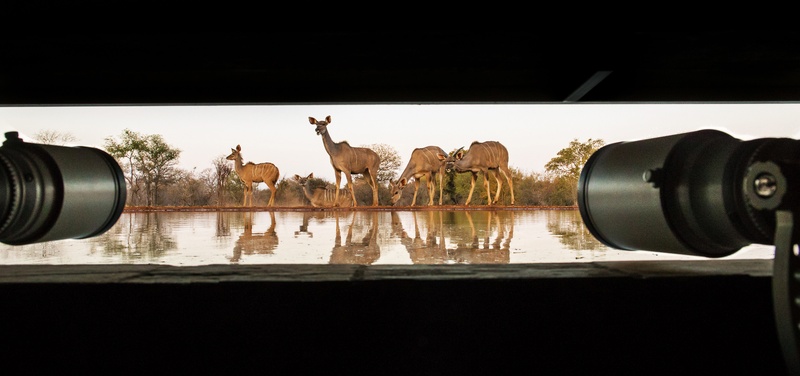
Jaci’s Lodges
Jaci’s Lodge’s are located in the magical Madikwe Game Reserve in the North-West province. This Big 5 reserve encompasses 75 000 hectares of mountainous terrain, seasonal wetlands, perennial rivers, and typical savannah. a rich landscape supporting a wealth of creatures just waiting to be photographed from the one-of-a-kind Terrapin hide.
Talk about going below deck! Jaci’s quirky Terrapin hide is located INSIDE a waterhole. Just like its namesake, the hide hovers at eye level. Never quite fully submerged, but never quite terrestrial. The hide is within walking distance of Jaci’s Tree Lodge and Jaci’s Safari Lodge , but is only available for guests staying at Jaci’s Tree Lodge. Accessed via an underground tunnel with windows looking below the surface into the murky waters, really puts Jaci’s on the map as a premier safari destination.
The low ground level angles provide plenty of scope for creative photographs of giant beasts and marauding predators. Perfectly positioned to take advantage of both morning and evening light, the hide is accessible 24-hours a day. Professional and amateur photographers can expect a unique space fully equipped with LED interior lights, spotlights, and radio for safety.
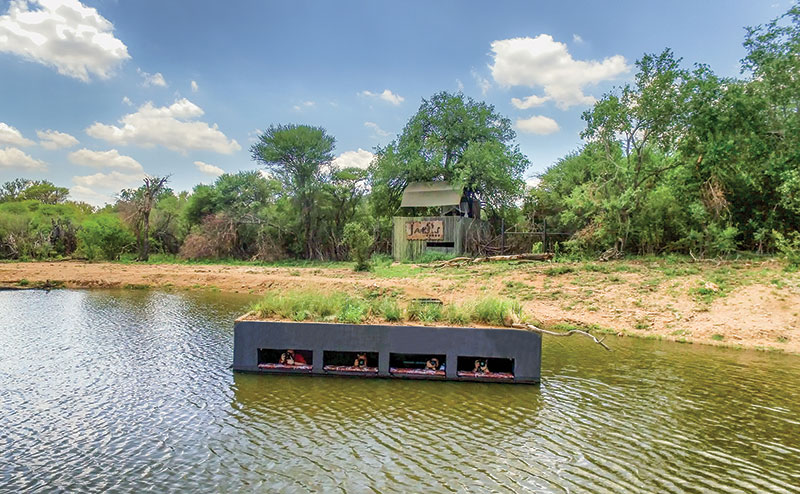
Makumu Private Game Lodge
Makumu Private Game Lodge is situated on a hill overlooking the lesser-known Klaserie Private Nature Reserve, a reserve rich with wildlife and home to the Big 5.
Makumu Private Game Lodge offers an unprecedented opportunity for keen photographers to explore a photographic bunker that’s eye level with the shimmering waters of an active pan. If you want a luxury hide, iThumbela hide is your answer. A staircase leads into the bunker that’s kitted out with an extra lounge comfy couch, coffee and tea making facilities, bean bags for cameras, bar stools, and a cooler box filled with drinks. Hyena, lions, leopards, wading birds, vultures, and an array of small critters regularly visit the pan; ensuring there’s always something to photograph.
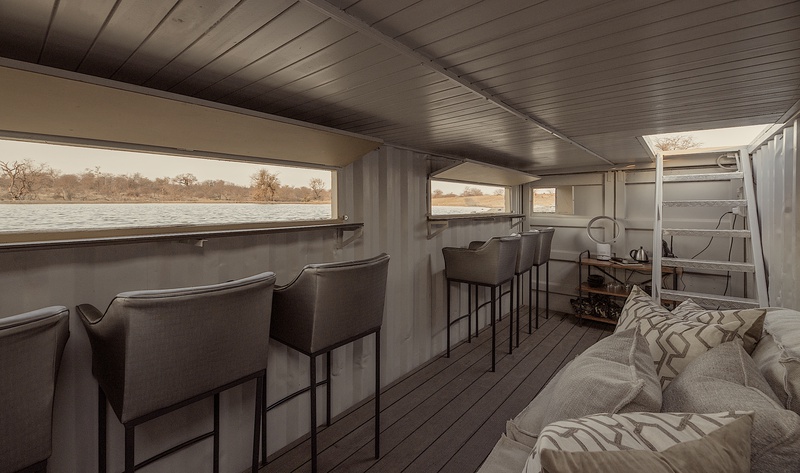
Best Safari Photographic Hide in Botswana
Mashatu game reserve.
Mashatu Game Reserve offers a choice of hides to snag that perfect photograph. The reserve is situated in the Northern Tuli Game Reserve in an area that serves as a wildlife corridor between South African and Zimbabwean national parks. This reserve offers an exclusive safari experience and is popular for horse riding safaris, cycling safaris, and walking safaris.
The reserve is proud of its uniquely positioned hides. A ground-level hide at a waterhole has been set up specifically for elephant photography. This particular waterhole is where guests regularly spot breeding herds of elephants. There is an array of semi-permanent hides that are moved to the various waterholes and seasonal riverbeds throughout the reserve. In addition, there are 2 bird hides available for passionate Twitchers. The infinity bird hide is perfect for spotting passerines and forest-dwelling birds. The bee-eater colony hide is ideal for spotting the flurry of migratory white-fronted bee-eaters – birders won’t be disappointed with this one!
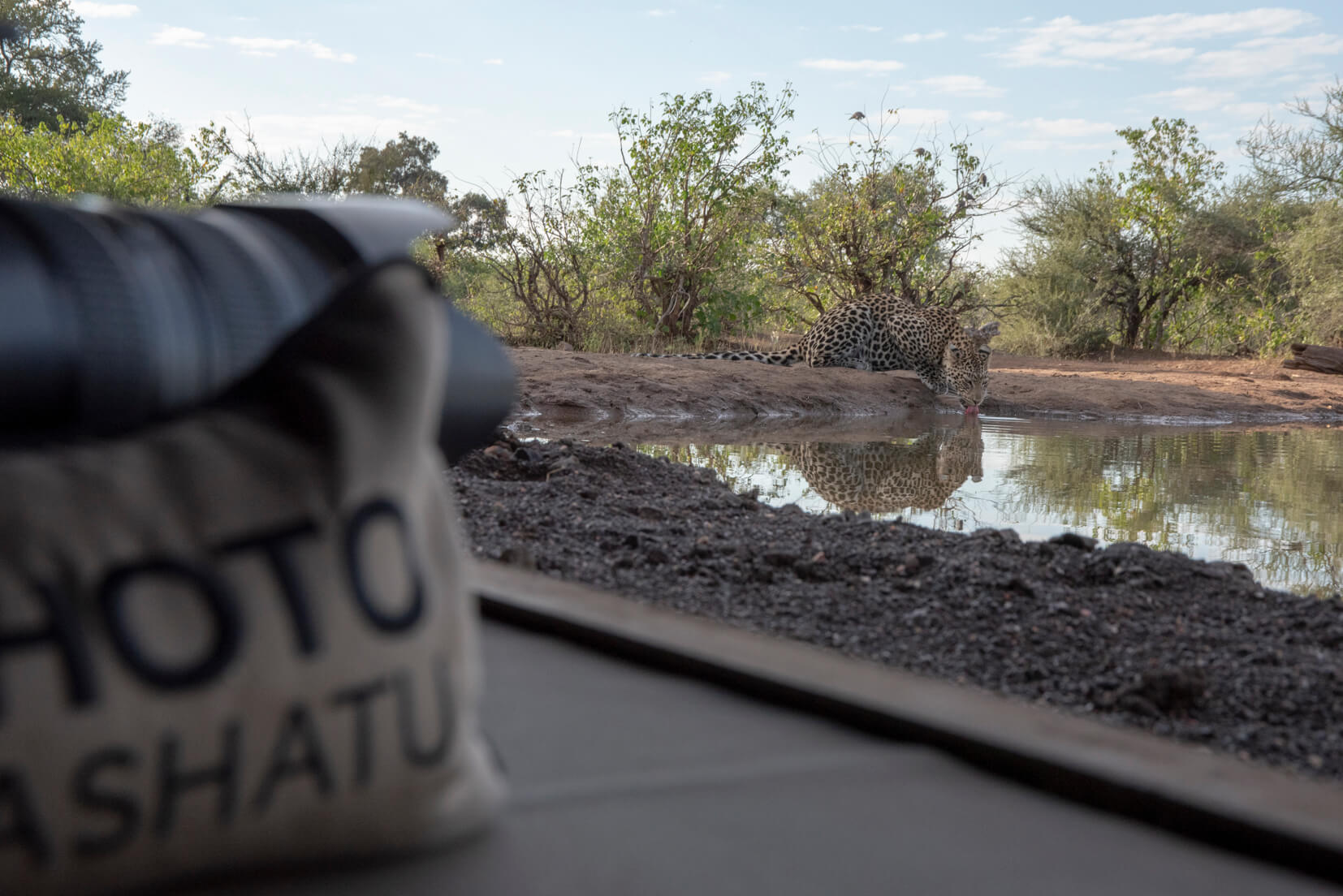
Best Safari Photographic Hides in Zambia
Kaingo camp.
Ideally located on the banks of the Luangwa River in Zambia’s South Luangwa National Park , Kaingo Camp is an original Zambian classic camp. 6 rustic chalets adorn the riverfront, providing abundant opportunities to observe game from the comfort of camp – in particular hippos and elephants.
The Hippo hide at Kaingo Camp is a favourite hang-out for visiting photographers. Strategically positioned in the confluence of the Luangwa and Mwamba rivers, the hide is neatly carved into the bank of the river, and even has camera props and ultra-comfy seating. This is the best place in Africa to spot hippos ! Massive bloats of hippo descend upon the area during the peak safari season, and put on quite the show for their onlookers. Photographers can spot breeding pods, bachelor pods, and even tiny calves.

Mwamba is an exclusive bush camp conveniently located on the Mwamba River in south Luangwa, and offers guests a rare opportunity to stay in accommodation with skylights. This camp really is all about wilderness and wildlife experiences. South Luangwa is hailed as one of southern Africa’s top wildlife sanctuaries and is certainly no stranger to exceptional predator sightings.
The ever famous Last Waterhole Hide is a hide that’s built into the banks of a waterhole, and is situated within walking distance from Mwamba’s natural-looking thatch chalets. This means that guests are free to wander to the hide at their leisure. The waterhole hosts a “wildlife party” between 8 and 9 am; a very popular time for all sorts of species to visit the waterhole. August is prime time to visit the hide, as this is when the other waterholes have dried up.
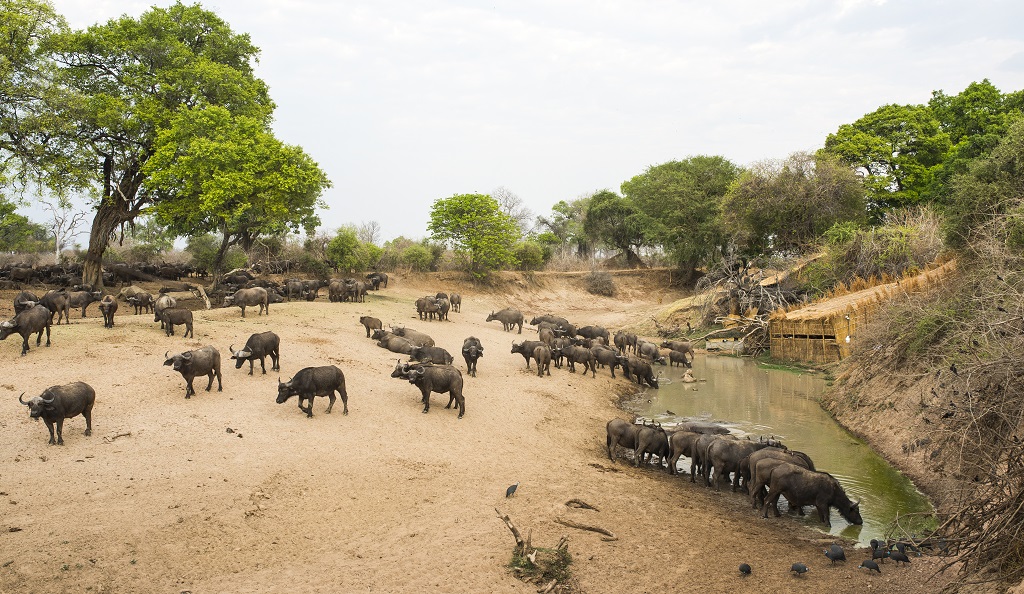
Best Safari Photographic Hides in Kenya
Chyulu Hills National Park is a remote destination sandwiched between Tsavo West National Park and Amboseli National Park. Mount Kilimanjaro serves as the backdrop to this unusual terrain characterized by volcanic cones and craters. Common residents include buffalo, leopard, zebra, elephant, and a wealth of birdlife. The bold and contemporary ol Donyo sits bang in the middle of the breathtaking Chyulu Hills, and offers guests a timeless experience reminiscent of ancient explorers. Stone suites with private plunge pools that have views of flat landscapes carpeted with iconic acacia trees, a giraffe’s snack of choice.
Set just below this premier lodge is the hide. Affectionately known as the “logpile hide”, this little spot provides a front-row seat to some incredible wildlife spectacles. The hide is made from a pile of local wood and is situated right at the waterhole. This perch is ideal for sitting and observing an array of wildlife. The Logpile hide is the perfect place to photograph a plethora of species.
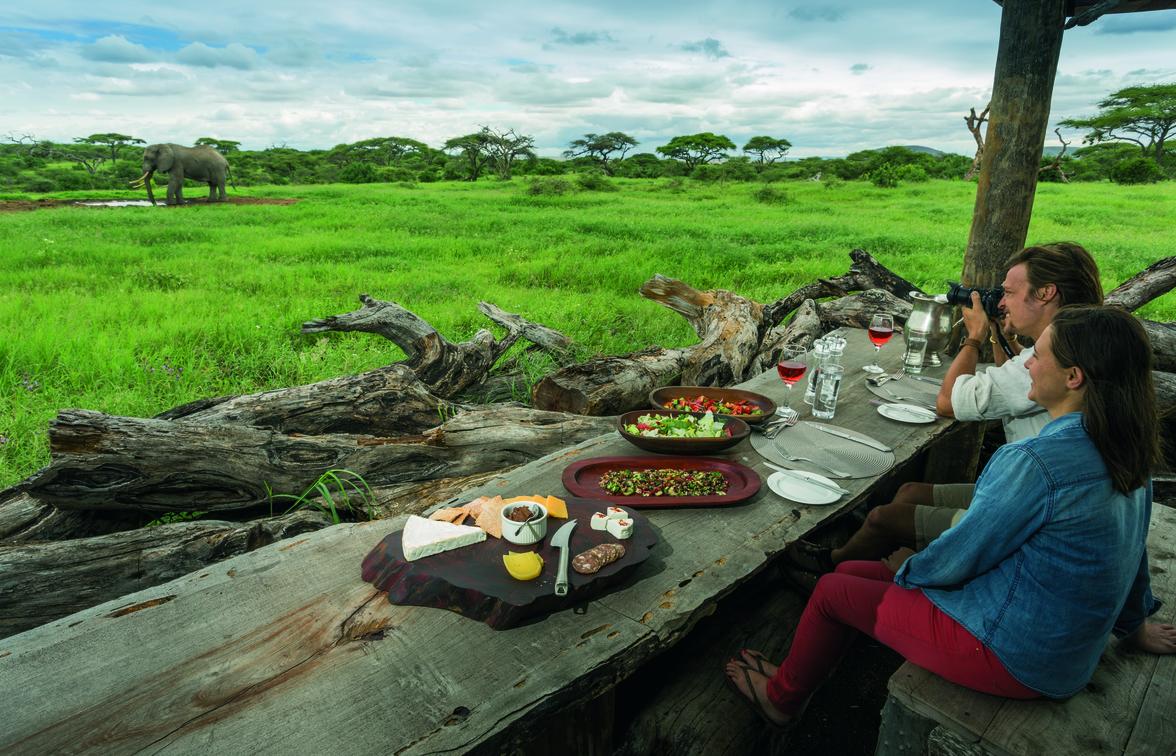
TOP DESTINATIONS
- Kruger Park
- Okavango Delta
- Serengeti National Park
- Victoria Falls
TOP COUNTRIES
- South Africa
TRAVEL DEALS
View All Travel Deals
SOUTHERN AFRICA
East africa, indian ocean islands, top experiences.
- Beach Holidays
- Family Safaris
- Honeymoon Safaris
- Desert Safaris
- Luxury Rail Safaris
- Multi-Generational Safaris
- Positive Impact Safaris
- Photographic Safaris
- Walking Safaris
WILDLIFE SAFARI
- Big Five Safaris
- Birding Safaris
- Gorilla Trekking Safaris
- Migration Safaris
- Mobile Camping Safaris
- Horseback Safaris
FEATURED EXPERIENCES
Comfort levels, property types.
- Tented Camps
- Boutique Hotels
Featured Safari Collections
- Desert & Delta
- Green Safaris
GET TO KNOW US
- Meet The Team
- Pricing Explained
- Traveller Reviews
- Traveller Stories
- Why Book With Us?
- HerdTracker
- Safari Cost Calculator
- South Africa In 360
- Trusted Safari Partners
- Newsletter Sign Up
What are you looking for?
- Destinations
- Multi-generational Safaris
- Positive Impact
- Meet the team
- Why book with us?
- Herdtracker
- Safari Cost Estimator
Hello traveller!
It's in Cape Town now.
We're sorry. Our safari planners aren't available now. Our office hours are 08:00 - 19:00 (GMT+2).
Call us to speak to an experienced safari planner.
Alternatively, we recommend...
Schedule a phone or Zoom call with one of our safari planners
Complete our travel enquiry form to connect with a safari planner

Photographic Safaris in South Africa
Africa's best tailor-made safaris.
South Africa offers some of the best African photographic safari experiences in the world, providing opportunities to capture stunning wildlife and landscapes. An African safari here accommodates both beginners and experienced photographers, ensuring a memorable wildlife photography experience. Whether you’re a professional photographer or a passionate hobbyist, a photographic safari in South Africa offers the perfect blend of adventure, luxury, and unparalleled photo opportunities. Discover the best destinations and experiences for photographic safaris in South Africa on the Discover Africa website.
What is a Photographic Safari?

A photo safari is a specialised tour designed for photographers, focusing on providing optimal conditions for wildlife and landscape photography. A photography safari offers a unique experience by highlighting Africa’s diverse wildlife, landscapes, and tailored services available for photographers of all skill levels. These safaris are led by experienced guides and often include professional photographers who offer tips and guidance to help you capture the perfect shot.
Best Photographic Safari Destinations in South Africa
South Africa boasts numerous prime locations for photographic safaris, each offering unique wildlife encounters and stunning scenery:
- Kruger National Park : One of Africa’s largest game reserves, Kruger National Park offers diverse wildlife and landscapes, making it a top destination for photographers. The luxury safari lodges here provide high-end photography equipment and dedicated studios for capturing and editing images, balancing comfort with wildlife experiences.
- Sabi Sands Game Reserve : Adjacent to Kruger, Sabi Sands is renowned for its high density of big cats, especially leopards.
- Madikwe Game Reserve : A malaria-free reserve known for its Big Five sightings and diverse landscapes.
- Kgalagadi Transfrontier Park : Famous for its red dunes, black-maned lions, and dramatic landscapes.
- Phinda Private Game Reserve : Located in KwaZulu-Natal, Phinda offers seven distinct habitats, providing varied photographic opportunities.
Additionally, while not in South Africa, Tanzania’s Serengeti National Park is a notable destination for photographic safaris, especially during Africa’s Great Migration, offering breathtaking vistas and an abundance of wildlife.
Wildlife and Experiences
- Kruger National Park : Known for its abundant African wildlife, Kruger offers excellent opportunities to photograph the Big Five and a variety of other species. For those interested in photographing wildlife, the park provides specialised photographic safaris with professional guidance.
- Big Five : Capture images of lions, leopards, elephants, rhinos, and buffalos in their natural habitat.
- Bird Photography : With over 500 bird species, Kruger is a birdwatcher’s paradise.
- Scenic Landscapes : Photograph diverse landscapes, from savannahs to riverine forests.
- Sabi Sands Game Reserve : Renowned for its wildlife density, Sabi Sands provides exceptional opportunities for close-up wildlife photography, making it a prime destination for wildlife photographers.
- Leopard Sightings : Sabi Sands is famous for frequent and intimate leopard encounters.
- Private Game Drives : Enjoy exclusive game drives with experienced guides and trackers.
- Madikwe Game Reserve : Known for its varied landscapes and diverse wildlife, Madikwe is a great photographer choice.
- Big Five : Photograph the Big Five in a malaria-free environment.
- Wild Dog Sightings : Madikwe is one of the best places to see and photograph the endangered African wild dog.
- Kgalagadi Transfrontier Park : Famous for its red dunes and black-maned lions, Kgalagadi offers dramatic photographic opportunities.
- Desert Landscapes : Capture the stunning contrast of red dunes and blue skies.
- Predator Sightings : Photograph lions, cheetahs, and other predators against the unique backdrop of the Kalahari Desert.
- Phinda Private Game Reserve : With seven distinct habitats, Phinda offers a variety of landscapes and wildlife for photographers.
- Diverse Habitats : Photograph diverse ecosystems, from sand forests to wetlands.
- Marine Life : Explore the nearby coast for marine photography, including turtles and whales.
Best Times to Visit

- Winter (May to September) : The dry season is the best time for game viewing and photography, as animals congregate around water sources and the vegetation is less dense.
- Summer (November to February) : The wet season brings lush landscapes and vibrant colours, ideal for landscape photography and capturing newborn animals.
Tips for a Successful Safari: Enhance Your Photography Skills
- Choose the Right Equipment : Bring a good DSLR or mirrorless camera, telephoto lenses, and a sturdy tripod or monopod.
- Learn from Experts : Join safaris led by professional photographers who can offer tips and guidance to enhance your photography skills.
- Be Patient : Wildlife photography requires patience and persistence to capture the perfect shot.
- Respect the Wildlife : Always maintain a safe distance and follow the guidance of your safari guide to ensure the safety of both you and the animals.
A photographic safari in South Africa offers a unique and enriching experience for photographers of all levels. Whether you’re capturing the majestic Big Five in Kruger, the elusive leopards of Sabi Sands, or the dramatic landscapes of Kgalagadi, South Africa promises unparalleled photographic opportunities.
These tours are perfect for photography enthusiasts looking to improve their skills and capture breathtaking images. Book your photographic safari with Discover Africa and create lasting memories with stunning images of South Africa’s incredible wildlife and landscapes.

We have 5 rating for 447 reviews
We have 4.7 rating for 35 reviews
We have 4.9 rating for 73 reviews
- Why South Africa Experiences
- South Africa in January
- South Africa in February
- South Africa in March
- South Africa in April
- South Africa in May
- South Africa in June
- South Africa in July
- South Africa in August
- South Africa in September
- South Africa in October
- South Africa in November
- South Africa in December
- Durban and the South Coast
- Gauteng, Kruger and the North
- iSimangaliso Wetland Park
- Kruger National Park
- KwaZulu-Natal
- Madikwe and Pilanesberg
- Stellenbosch and the Winelands
- The Garden Route
- The Panorama Route
- The Western and Eastern Cape
- uKhahlamba-Drakensberg Park
- Horseback Riding
- Hot Air Balloon Rides
- Mountain Biking
- Night Drives
- Visiting Local Villages
- A Photography Safari in SA
- A Relaxed Safari Holiday in South Africa
- An Active Holiday in South Africa
- An Adventure Holiday in South Africa
- Beach and Bush Safari Holidays in South Africa
- Big Five Safari Holidays in South Africa
- Birding Safari Holidays in South Africa
- City and Bush Safari Holidays in South Africa
- Foodie Holidays in South Africa
- Malaria Free Safari Holidays in South Africa
- Walking Safari Holidays in South Africa
- A South African Holiday as a Couple
- Family Safari in SA
- LGBTQIA+ Safari Holidays in South Africa
- Solo Traveling Through South Africa
- South Africa Honeymoon
- Affordable Safari in South Africa
- Budget Safari Holiday in South Africa
- Luxury Safari Holiday in South Africa
- Changing Money in South Africa
- Getting Around in South Africa
- Health Care in South Africa
- Is South Africa Safe?
- Languages in South Africa
- Lodges in South Africa: The Do’s and Don’ts
- Medical Emergencies in South Africa
- Medical Insurance for South Africa
- Medical Requirements for South Africa
- Packing List for a South Africa Holiday
- South Africa Experiences
- South Africa Visa Requirements and Fees
- South Africa vs Botswana
- South Africa vs Namibia
- South African Cultures and Their Nuances
- South African Food and Tipping
- Vaccinations for South Africa
- When to Go to South Africa
- Where to Go in South Africa
- Wildlife in South Africa
- South Africa Safari
Join our newsletter
Sign up to receive exclusive offers, safari inspiration, and expert tips straight to your inbox.
By proceeding you agree to our Privacy Policy and Terms & Conditions .
POPULAR DESTINATIONS
Popular tours.
- Luxury Explorers Safari in Botswana
- Romantic Cape Town & Luxury Safari
- Masai Mara and Serengeti Combo
- Wildlife and Gorillas of Rwanda
- Luxury Honeymoon in Mauritius
POPULAR ACCOMMODATIONS
- Sabi Sabi Earth Lodge
- Chobe Game Lodge
- Khwai Lediba
- Camp Okavango
- Khwai Leadwood
QUICK LINKS
- Safari Cost Estimator Tool
- [email protected]

A Guide to the 10 Best Safari Experiences in Africa

I went on my first safari trip to South Africa. I won't make these 10 mistakes next time.
- I spent a week on safari in South Africa , visiting three different reserves.
- I found that planning was essential and that I always needed to have my camera ready.
- Next time I'd bring warmer clothing and a buff for dust control.

I spent a week on safari in South Africa, visiting three different reserves.
It was a thrilling adventure I'll never forget, and I got to see incredible creatures such as hyenas, elephants, and lions.
It's no wonder more travelers are looking to weave game reserves into their trips. According to the most recent data collected by the travel agency Go2Africa , interest in beach and safari combo trips was up 20% from 2022 to 2023 alone.
But although the trip was great, it wasn't always easy — and I had a few missteps from the planning phase to the wildlife observation.
Here are mistakes I made on my trip that that everyone should avoid on their first safari .
We booked our trip during a busy part of the year.
I try to avoid traveling during holidays , which often means more crowds. Unfortunately, we ended up booking during Easter break, which was the end of summer in the southern hemisphere.
The lodges were full and busy with lots of kids, and the prices were higher. We still had a great time, but if we'd booked different dates — maybe during a low season — we may have paid less for a more private experience.
The mornings were cold, even in summer.
Our morning game drives started before sunrise in an open-air jeep.
The safari guide was wearing shorts, so I thought I would be comfortable matching that. Wrong! I was so cold on our first ride.
I quickly learned that although it was summer, a beanie and down jacket would've been cozy on the drive.
I missed photo opportunities because my camera wasn't ready.
I knew I wanted to keep my camera out at all times when on a game drive. But after several hours of driving, we were approaching the gate and I tucked my phone away.
That's when we turned a corner and saw a large white rhino facing us in the middle of the road. It was a dramatic moment I captured in my head, but I didn't have time to snap a photo before it darted into the bushes.
Next time, I'd be better prepared for animals that might pop up near the exit.
I had no idea how dusty the roads were going to be.
The safari terrain changed based on where the guide drove each day, and some routes were quite dusty.
After a day of exploring, I felt as if I had dust in my ears, eyes, nose, and mouth. Sunglasses helped shield my eyes, but I wish I'd brought a buff to cover the rest of my face.
Driving between game reserves made me more tired than I'd expected.
Our safari adventure included visits to three different wildlife reserves, and we rented a car to get between them.
On each transition day, we had a morning game drive, then a drive to get to the next reserve, and then an evening game drive there.
That was a lot of sitting, and by the time I got to the evening game drive, I was tired. Next time, I may space my schedule out more.
I made the classic mistake of leaving the car door open when unloading the luggage.
At one point, I walked my bags inside my accommodations, leaving the door open behind me. When I came out, the neighbors were taking photos of a monkey inside my car.
He was quick because, fortunately, I didn't have any food in the car for him to run off with.
Now I know to stay on top of shutting and locking my car doors when at a game reserve.
We got too close to elephants.
Animals can be unpredictable and safaris are not like a zoo. I learned how quickly a situation can change while watching a herd of elephants eating in Kruger National Park.
They started crossing the road in front of my car, and a large one turned to look right at us and started shaking his head. It seemed clearly displeased with our presence.
I flipped the car into reverse faster than you can say "elephant," but it was a scary moment.
Consuming too much liquid can be risky.
Evening safari drives include a stop in the bush around sunset for a "sundowner" beverage. One of the nights, my drink proved to be too much liquid for my bladder.
The problem was that we were following a pride of lions, so there was no chance of hopping off the truck to relieve myself.
I was able to hold it, but next time I'll be more careful with the amount of liquid I consume before and during bush drives.
I was caught off guard by load shedding.
Load shedding is the name for scheduled power outages in South Africa that help prevent the power grid from being overloaded.
Some places have backup generators or solar panels to alleviate power disruptions, but I learned not to expect that to always be the case.
When the power turned off during our trip, I found myself sitting in complete darkness. I scrambled for my phone flashlight, but I could've avoided that panic by plugging in the emergency light that was provided.
- Main content
- Biographies & Memoirs
- Business & Economics
- Children’s Books
- Fine Art Photography
- Literature & Fiction
- Photography
- Religion & Spirituality
- Sports & Adventure
- Photo Books
- Trade Books
Share a Link
4200 days in africa.
by Brooks Frazier
Edit list price
About the Book
Features & details.
- Category Action / Adventure
- Project Option: 6×9 in, 15×23 cm # of Pages: 230
- Softcover: 9798331059538
- Publish Date: Aug 26, 2024
- Language English
- Tags exploring , excitment , wildlife , Africa , Safari
About the Creator

Brooks Frazier was born in Wyoming but raised outside the USA from three years old until starting college. His father was an exploration geologist working in Libya, Somalia, Ethiopia, and South Korea. Experiencing a wide range of cultures, the Frazier’s developed a love for enjoying and functioning in each one. Many travels and adventures in his youth instilled in him a love of new, and sometimes risky experiences, with strong mindfulness of what was happening around him. As an adult living and working in N. Africa, S. America, Europe, Russia and Central Asia, Brooks continued to make the most of his encounters with countries and people, finding in them unending interest and joy. Brooks has a degree in Petroleum Geology and has been happily married for 33 years. The stories told herein are a few of the many experiences Brooks had while sailing and onshore during 1973.

Good Things on the Way
Watch your email for news and exclusive offers., before you go, sign up to get 20% off your first book..
Get access to exclusive email offers when you join Blurb's creative community.
By continuing you agree to the Terms & Conditions and the Privacy Policy .
- Search Please fill out this field.
- Manage Your Subscription
- Give a Gift Subscription
- Newsletters
- Sweepstakes
- Travel Destinations A-Z
Volcanoes Safaris Was the First to Bring International Travelers to Rwanda’s Gorillas — Here’s Why It’s Still the Best
Nearly 25 years since its founding, Praveen Moman's Volcanoes Safaris is as focused on community and sustainability as ever.
:max_bytes(150000):strip_icc():format(webp)/Brad-Japhe-author-pic-02ce5d707440449fafcd35e116dfa76d.png)
Brad Japhe/Travel + Leisure
When viewed in pictures, the silverback gorilla is a foreboding beast: a hairy, barrel-chested warrior weighing as much as 600 pounds with an arm span that can stretch more than eight feet. But, when observed in their native habitat of Sub-Saharan Africa, there is nothing menacing about Earth’s largest living primate. Juveniles are as playful and innocently curious as their human counterparts, while adults are wholly enveloped in a zen aura. It is a spellbinding spectacle.
So, it’s no wonder that approximately 50,000 visitors a year make the trek to experience it for themselves — and despite the steep cost of entry (a permit is $1,500 per day in Rwanda and $800 per day in Uganda), that number is rising. They’re arriving not just for the silverback but for all the great apes of the region, which includes chimpanzees and critically endangered golden monkeys.
Still, despite the interest in the region and its incredible ecosystem, with increased tourism comes the continual risk of over- tourism. Sadly, the communities and ecosystems directly threatened by such are largely denied the added revenue it generates.
Brad Japhe/Travel + Leisure
One man, however, is working hard to ensure a more equitable — and sustainable — outcome. Praveen Moman, a native Ugandan and a successful hotelier and passionate activist, leads Volcanoes Safaris , founded in 2000 as the first international safari company to take clients to Rwanda. Five years later, it became the only safari company to sign the United Nations Kinshasa Declaration on Saving the Great Apes. By 2009, Moman had started a non-profit trust dedicated to promoting their conservation while simultaneously enriching the livelihoods of those in surrounding villages.
“We believe that responsible tourism can be a powerful force for positive change,” says Moman, who was listed as an A-List Travel Advisor for chimpanzee and gorilla safaris earlier this year by Travel + Leisure . “We are proud to support the communities and habitats that make gorilla trekking experiences possible.”
SHAUN S. RITCHIE/Courtesy of Volcanoes Safaris
What exactly does that look like in practice? For one, the lodges he operates — which now include five properties spread across the high mountain jungles of Rwanda and Uganda — are built by a local labor force who are paid salaries that exceed the going market rate. They also rely on locally sourced materials and incorporate eco-friendly technologies, including water recapture, to reduce energy consumption and waste.
Through the Volcanoes Safaris Partnership Trust, a litany of ongoing projects improves infrastructure in the remote villages that border conservation land. In recent years, it has donated water tanks to these towns, improved road conditions, and set up solar energy sources, all while rewilding wetlands and ensuring the safety of the gorillas and chimpanzees that bring the tourists here.
Because Volcanoes Safaris was the first to bring five-star luxury to gorilla trekking two decades ago, with its now-legendary Virunga Lodge, the brand enjoys an edge of expertise over its competition. It’s had extra years to train and develop a knowledgeable workforce comprised exclusively of local talent.
Propping up these communities while protecting the wildlife is a complicated task. It is often viewed as an either-or supposition because these small villages turn to any form of tourism as a potential lifeline — even those that don’t employ best practices. But Moman is proving that you can serve both. When Volcanoes Safaris established its Kyambura Gorge Lodge back in 2009, it opened concurrently to an ecotourism project fueling conservation efforts in and around its namesake ridge. Within the immediate area is an isolated community of chimpanzees, and by creating a nearly two-mile-long buffer zone around the canyon, the population of these animals has climbed from 15 to 33 in the ensuing years.
On July 1, the company cut the ribbon on its latest offering, Kibale Lodge . Positioned along the Albertine Rift in southwestern Uganda, the eight-villa estate reinforces the ethos of its sister property at Kyambura Gorge. It will partner with the Jane Goodall Institute in the town of Kibale to help ensure the safety of neighboring primate populations, and it’s working with the Rwenzori Sculpture Foundation to support and showcase the output of local artisans.
None of these brand missions sacrifice anything to the quality of the hard product. In fact, they only enhance a sense of luxury routed in an authentic vernacular. A deluxe banda at the new Kibale Lodge brandishes plush kingsize bedding, a stone-ringed fireplace, and an unfettered sightline of the Rwenzori Mountains climbing high above the distant plain. It’s all contained charmingly under a vaulted ceiling thatched with exposed wooden beams. Personal butler service is offered to all guests, along with access to a pool and spa.
In many ways, the look and feel of the latest addition to the portfolio is an extension of what was laid down at Virunga Lodge two decades prior. That original property, suspended high on a spine between two of Rwanda’s largest lakes, remains a vibrant icon of five-star forest trekking. Each of its 12 spacious villas is appointed in a decor that Moman originally coined as “Rwandese Afro-chic.”
Rates there start at $1,030 per person during the low season of October through May and climb up to $2,230 for single occupancy if you book from June through the end of September, on par with the pricing you’ll find at the Kibale Lodge. It includes food, drink, post-trek massages, laundry, and butler services. There are cheaper places you can stay — indeed, the jungle trekking landscape is crowded with options in this day and age — but you’ll be hard-pressed to find an operator fully committed to the sustainable cause.
“Volcanoes Safaris is the pioneer of great ape tourism in East Africa and, for the last 25 years, has been solely focused on providing the premier gorilla and chimpanzee trekking experience,” Moman says. “But that’s all pretty hollow if we’re not providing social support for local communities.”
In this particular pursuit, Volcanoes Safaris wasn’t just the first; it remains the best.
Related Articles

COMMENTS
10 of the Best African Photos Safari Companies. To make finding one easier, I've put together a list of 10 of the Best African Photo Safari companies in the business.. Over the years, I've had the pleasure of getting to know some amazing professional wildlife photographers as well as passionate enthusiasts who've raved about their photo safari experiences.
Find the best photographic safaris in Africa (and beyond). Check out our tips and guidelines and embark on a photographic journey of a lifetime! Shop 2,500 operators. 4.5 stars on ... Serengeti National Park and the Masai Mara are two of Africa's top national parks for a photo safari.
The best places for African safari are clustered in Southern Africa. Here is a list of top 10 parks best-suited for game viewing and photographic opportunities. Serengeti National Park, Tanzania, 4.92/5: Abundance of Big 5, especially the big cats, opportunities to view wildebeest migration aka migration safari.
Victoria Falls. Zambia and Zimbabwe share the largest waterfall in the world at the border. Victoria Falls is an exotic photo safari in Africa destination with breathtaking views of Vic Falls. You capture the beauty of the falls from Livingstone Town in Zambia or Victoria Falls Town in Zimbabwe. These are the border towns in Zambia and Zimbabwe.
7-Day Kenya Photography Hide Tour. $5,007 to $5,698 pp (USD) Kenya: Private tour Mid-range Lodge & Tented Camp. You Visit: Nairobi (Start), Shompole Conservancy, Olkiramatian Conservancy, Masai Mara NR, Nairobi (End) Brighte Maasai Adventures. 4.9 /5 - 16 Reviews.
Doing Good. Come share our passion for Africa's people and wildlife through Rhino Africa's conservation and community upliftment projects. Africa's Most Awarded Safari Company. Excellent. 4,929 reviews on. GET TO KNOW OUR RHINOS. Whether you're a professional or amateur photographer, Africa and her wildlife-rich landscapes offer the perfect ...
East Africa Uganda. From $ 2050 /USD. per person per tour. VIEW SAFARI. South Africa and Namibia Self-drive Adventure. Cape Town Fish River Canyon. From $ 2200 /USD. 10 DAYS.
All-Inclusive Africa Photo Safari Full Tour Itinerary. 10 Days African Photo Safari: Lake Manyara, Lake Natron, Serengeti National Park, Ngorongoro crater and Lake Eyasi. Embark on a photographic journey like no other with our exclusive "10 Best African Photographic Safaris 2024/2025," featuring the breathtaking Lake Manyara, the ...
Africa offers a unique opportunity for photography enthusiasts through its specialised photo safaris. Unlike regular safaris, these tours cater specifically to the needs of photographers. While on safari, a photographer may need more time and patience than usual to get the desired shot. ... A Guide to the Best Birding Safaris in Africa. 15 Best ...
Completely isolated for nearly 100 million years, Madagascar—the "eighth continent"—has evolved into an amazing collection of photogenic endemic plants and animals. Travel with private chartered flights and spacious ground transportation to the island's best photo spots. September 26 - October 13, 2024. More Information.
BOTSWANA PHOTO SAFARI. Travel to the otherworldly landscapes of Botswana's Tuli Block, stay on the game reserve, and experience unique photo opportunities by 4×4 and by foot! This is one of the best African photo safari tours if you're looking for big cats and elephants. Discover Tuli block, one of Botswana's best kept secrets.
Photographers can embark on a photography safari anywhere in Africa - where there's game, there is a prime photo opportunity. However, some regions offer an abundance of wildlife at certain times of the year and these are highlighted below. Southern Africa. South Africa's Kruger National Park has been the location for some of the best ...
We are Africa's premier photo safari operator and lodge owners. This site contains plenty of information on all our Pangolin Photo Safaris, the destinations that we visit (and call home) as well as wildlife photography tips, video tutorials and inspirational galleries to help you become a better wildlife photographer.. When you are ready, we have a team of expert African photo safari ...
Allow one of our guides to create the ultimate and most exclusive safari experience for you and your group. Wild Eye offers photographic safaris, private guided expeditions and custom tours around the world. Established in 2012 Wild Eye set out to refresh the photographic travel and private guiding industries by focusing on providing a ...
Africa is home to some of the most iconic wildlife in the world, and a photo safari is the perfect way to capture these amazing creatures in their natural habitat. There are many different African countries to choose from for a photo safari. But some of the most popular include Kenya, Zambia, Zimbabwe, Uganda Tanzania, South Africa, and Botswana.
In our Pangolin Photo Safaris review we break down whether this lodge in Chobe, Botswana really is the best African safari for photographers. By: Alesha and Jarryd. Last Updated:July 6, 2024. On our recent travels around Africa we spent a week at Pangolin Chobe Hotel, which is globally renowned for being the best African safari for photographers.
Photographic Safaris in Africa Destination #8. Ol Pejeta Conservancy. 364 sq km in size, the Ol Pejeta is a wildlife conservancy cushioned between the slopes of the Mt. Kenya and those of the Aberdares. The conservancy's beauty is boundless, its wildlife-to-area ratio beating that of any park or reserve in the country.
3. Uganda: Home of the Endangered Mountain Gorilla. Africa offers more than the "typical" photo safari experience, however. The continent is also home to the highly endangered mountain gorillas. About half of the remaining population of gorillas (roughly 880) are in Uganda's Bwindi Impenetrable National Park.
There is nothing quite like experiencing a wildlife safari in Africa's most beautiful locations. Writer Brian Jackman said it best: Everything in Africa bites, but the safari bug is the worst of ...
Set out on a photo safari amid some of East Africa's most spectacular landscapes and hone your skills while photographing an ever-changing tableau of wildlife. Learn how best to capture movement ...
To capture moving birds in flight, you might want to practice choosing shutter speeds to up to 1/2000s. 8. Choose AI Servo (AF Continuous) Mode for moving wildlife. AI Servo is the best mode to capture wildlife that is moving, to automatically keep track of and stay focussed on the moving animal. 9.
Wild Rwanda Safaris: Bwindi Gorilla Safari. Courtesy of Wild Rwanda Safaris. Length: Three days. Starting price: $1,450 for two people with lowest-cost lodging. Adventurous travelers sticking to a ...
Best Safari Photographic Hides in Zambia Kaingo Camp. Ideally located on the banks of the Luangwa River in Zambia's South Luangwa National Park, Kaingo Camp is an original Zambian classic camp. 6 rustic chalets adorn the riverfront, providing abundant opportunities to observe game from the comfort of camp - in particular hippos and elephants.. The Hippo hide at Kaingo Camp is a favourite ...
Group of friends looking through binoculars during safari vacation in South Africa. Photo: Getty Images. Winter (May to September): The dry season is the best time for game viewing and photography, as animals congregate around water sources and the vegetation is less dense. Summer (November to February): The wet season brings lush landscapes and vibrant colours, ideal for landscape photography ...
Wildebeest herd in Serengeti National Park . The best place to go on safari in my opinion is Serengeti National Park. If you could visit only one game park in your life, the Serengeti would be my top recommendation! If seeing the Big Five is your top priority: . South Africa's iconic Kruger National Park
Embarking on an African safari is an experience like no other. The continent's vast and diverse landscapes, rich wildlife, and unique cultural heritage make it a dream destination for nature and ...
I spent a week on safari in South Africa, visiting three different reserves. It was a thrilling adventure I'll never forget, and I got to see incredible creatures such as hyenas, elephants, and lions.
After much planning, I finally booked my safari tours, 13 days in Kenya, end of June. But after a long trip to get here, I'd love to see something other than animals before heading home. I know this is a Kenya forum, but I'm sure many who post here have experiences elsewhere in Africa.
Join an American boy who has grown up for 12 years in 3 African countries. Experience a Saharan locust invasion, find Roman Empire and Paleolithic treasures in Libya, witness an authentic safari, raise a monkey, make crucial gut choices in Somalia, feel the whip of a donkey cart driver, be ejected from a Coptic monastery, and grasp the wonders of the highlands and Red Sea environs of Eritrea ...
In this particular pursuit, Volcanoes Safaris wasn't just the first; it remains the best. Related Articles Travel + Leisure Readers' 10 Favorite Safari Lodges in Africa of 2023